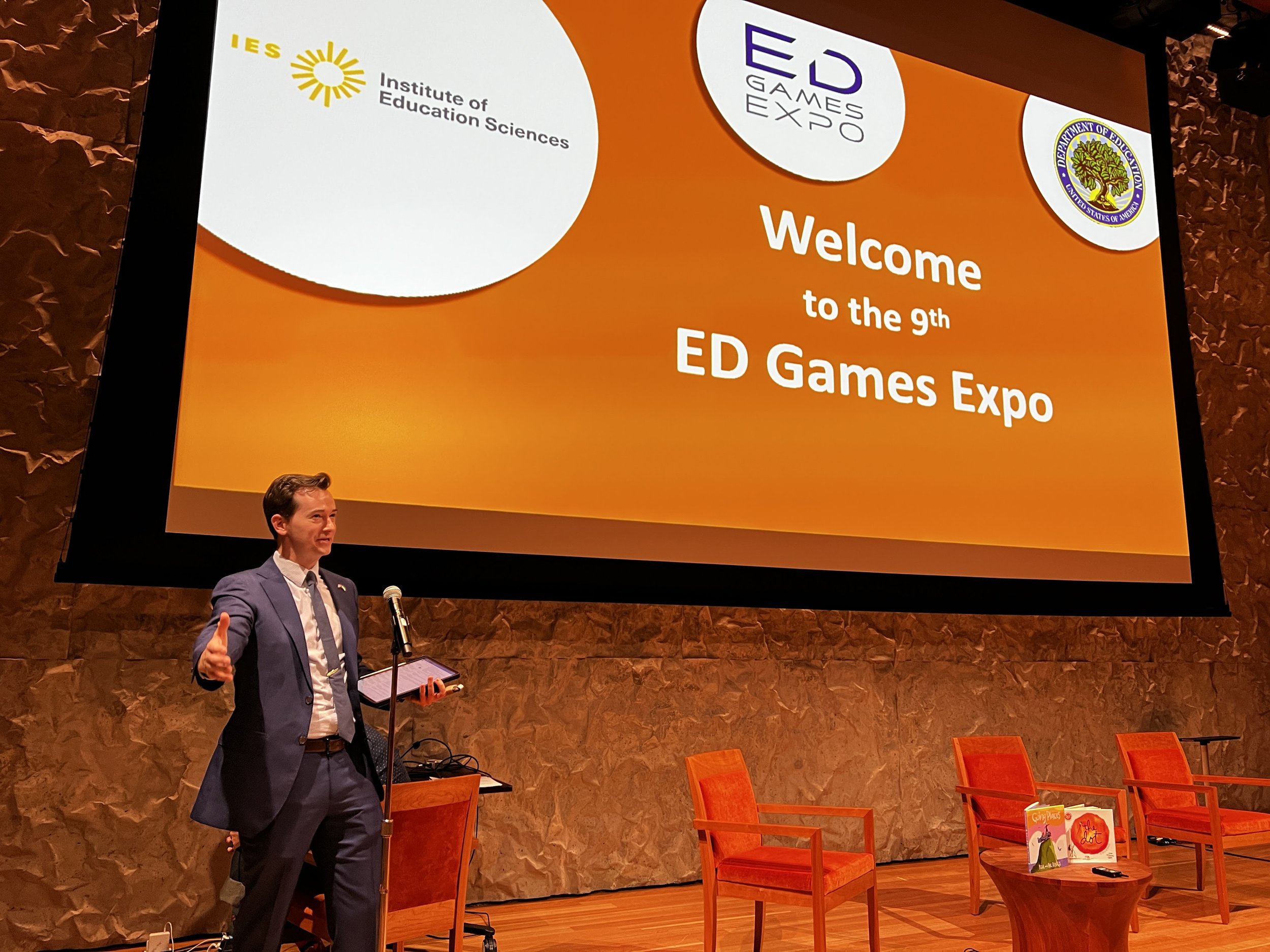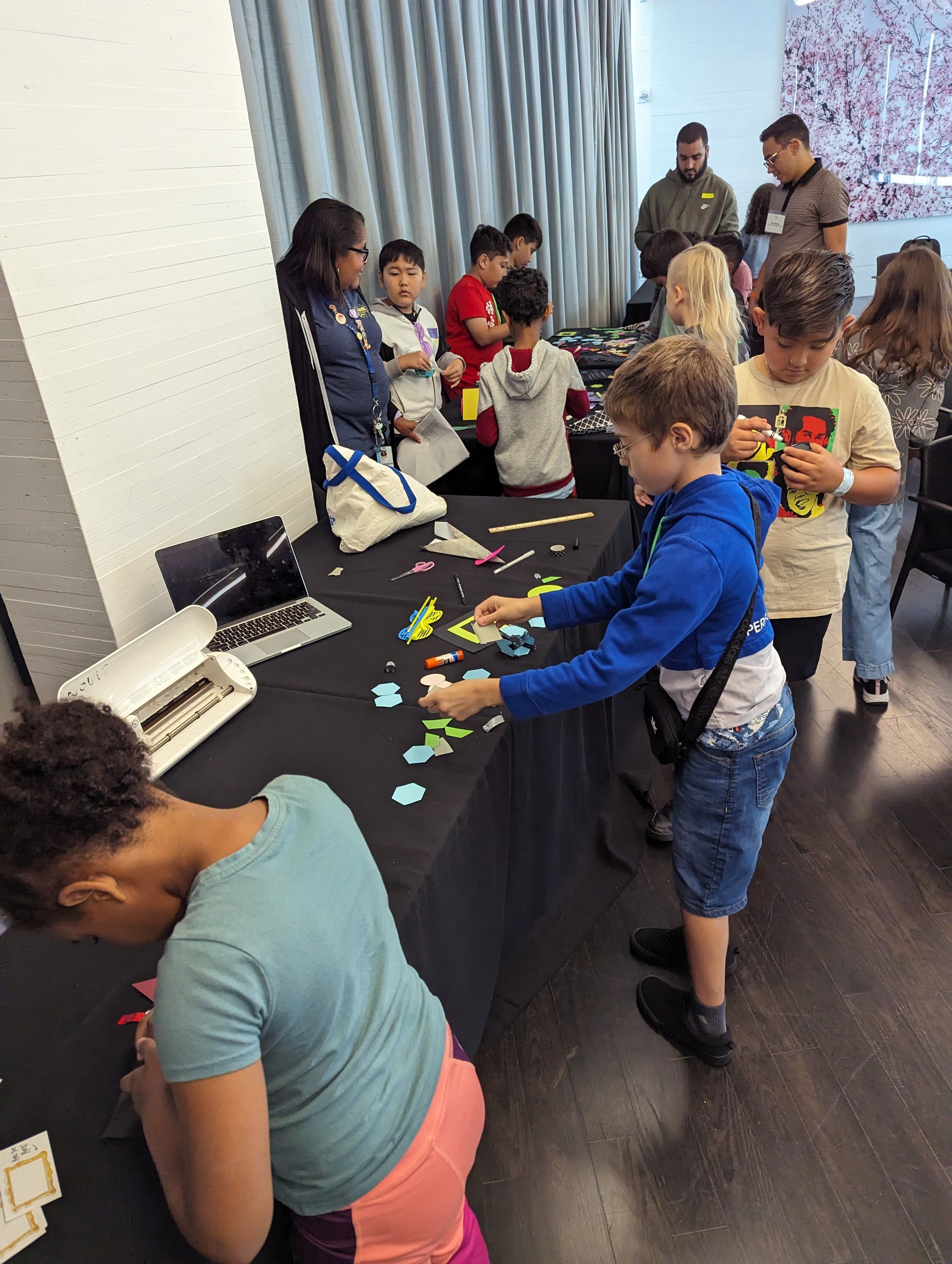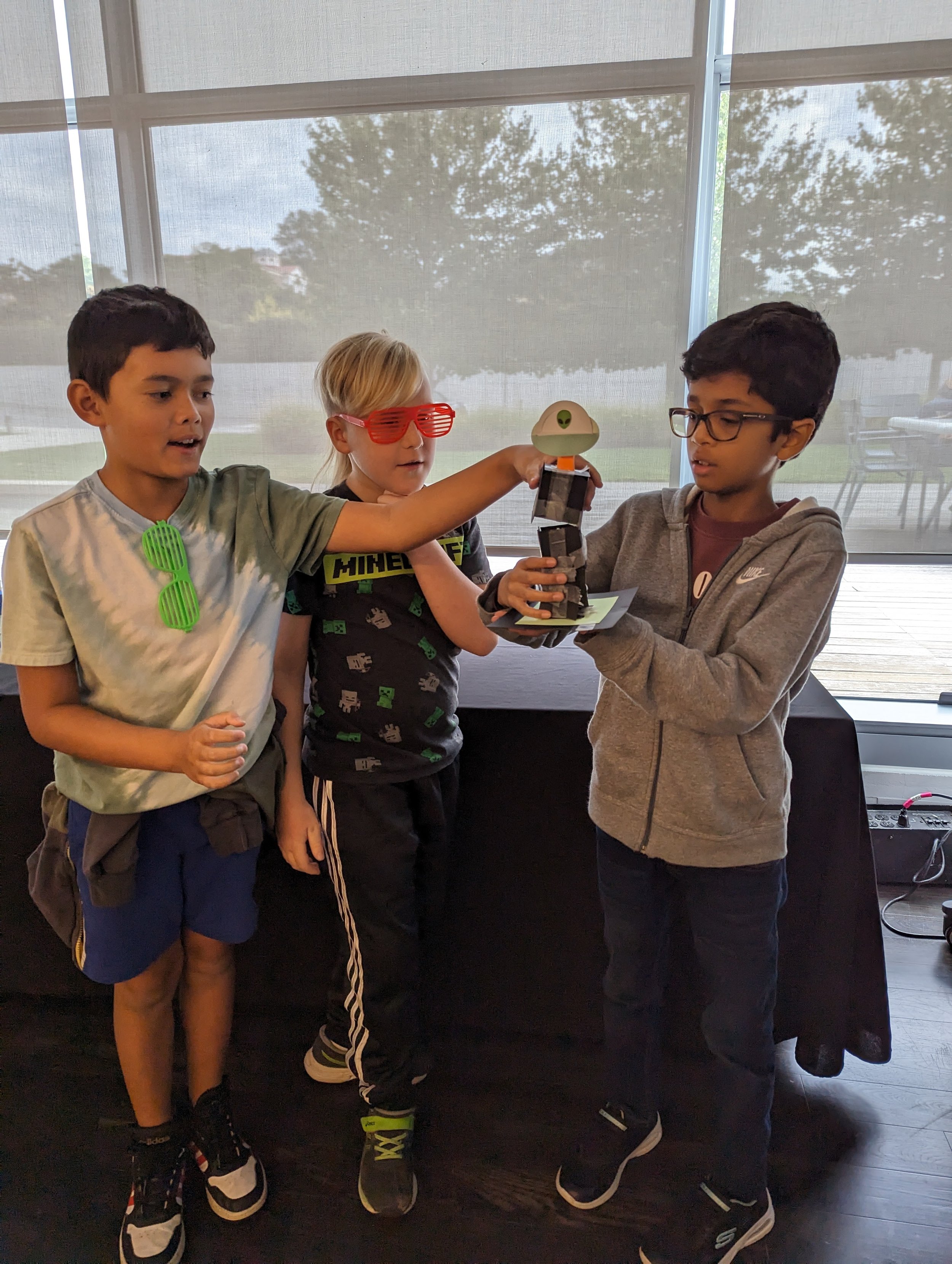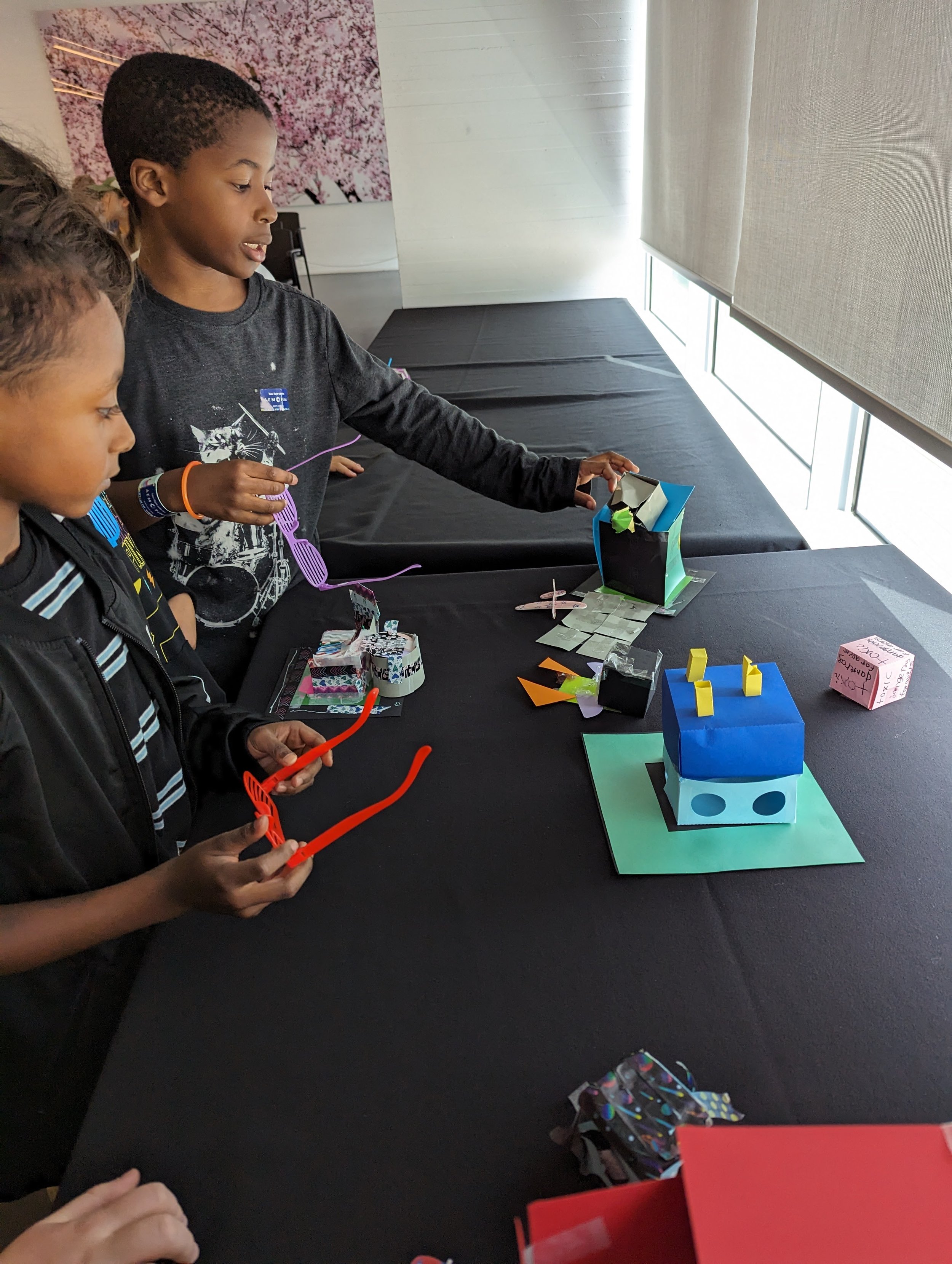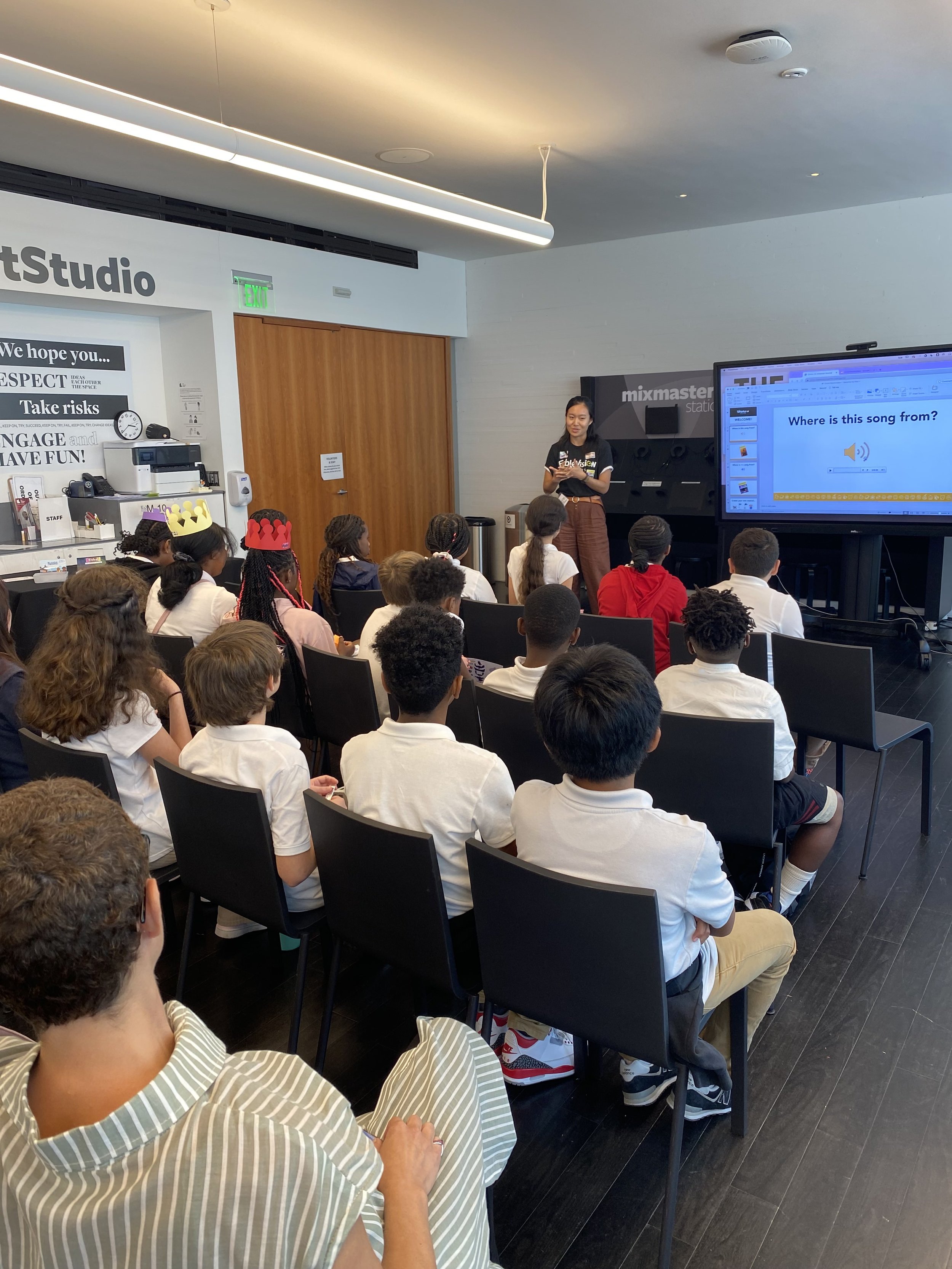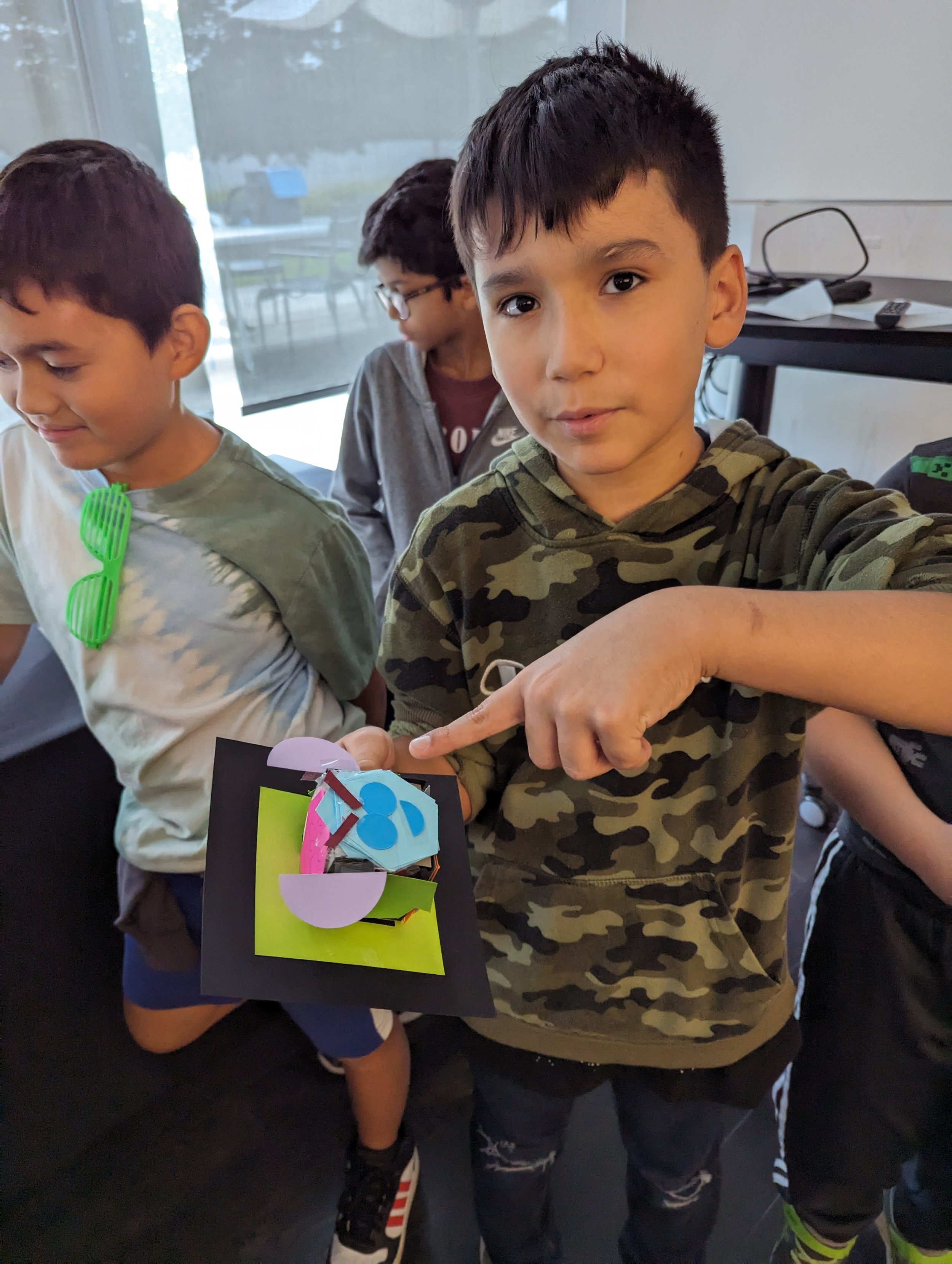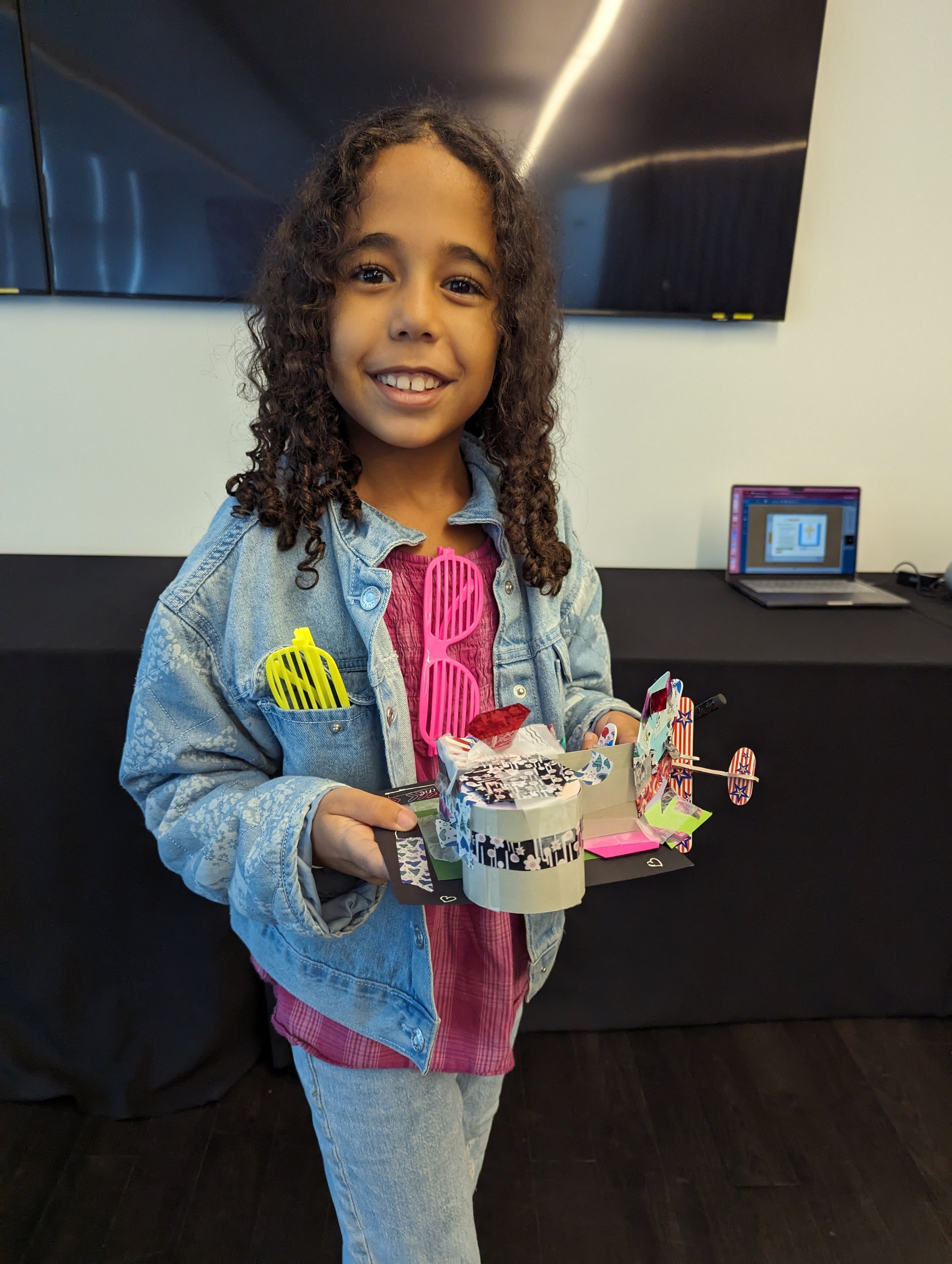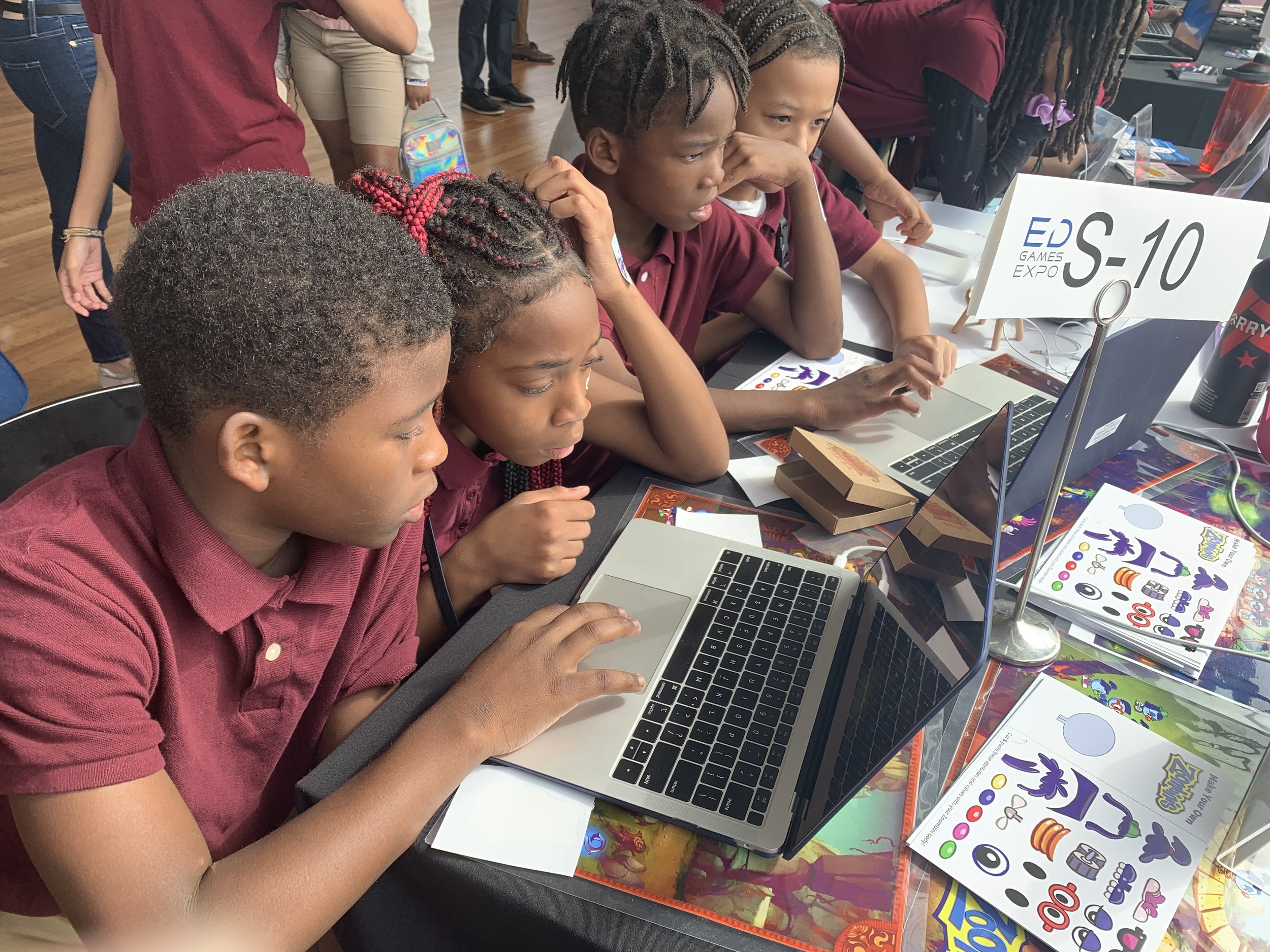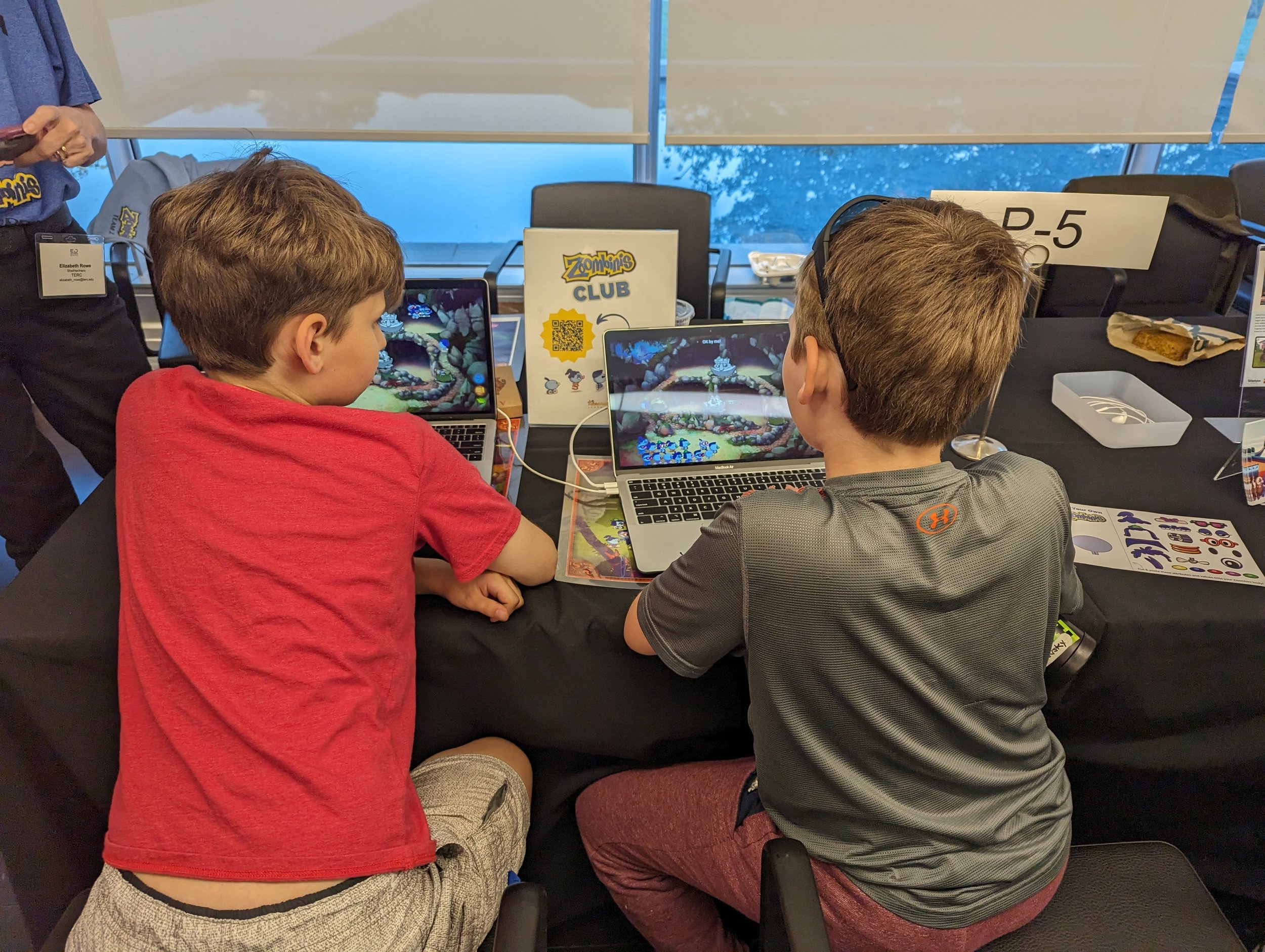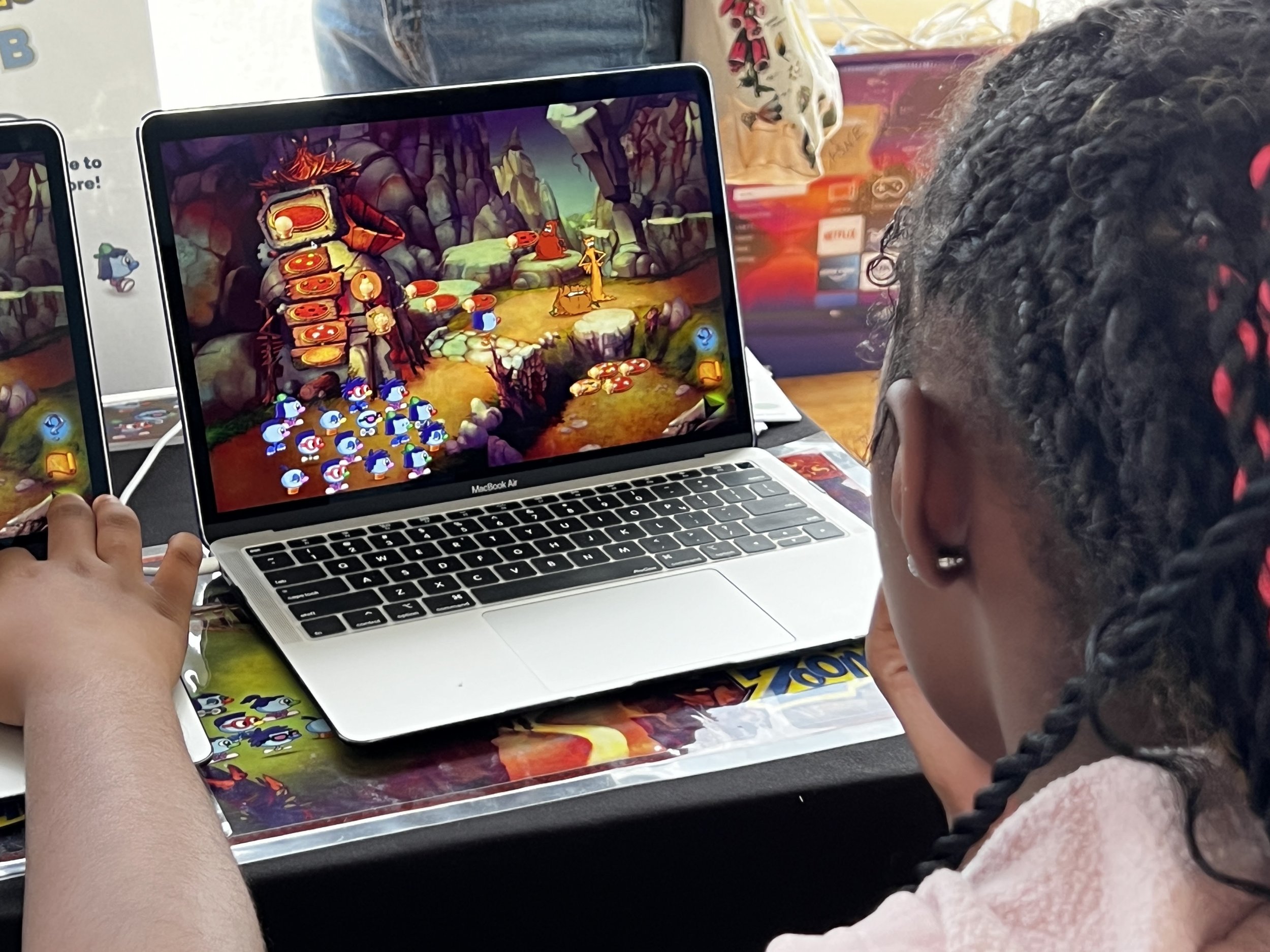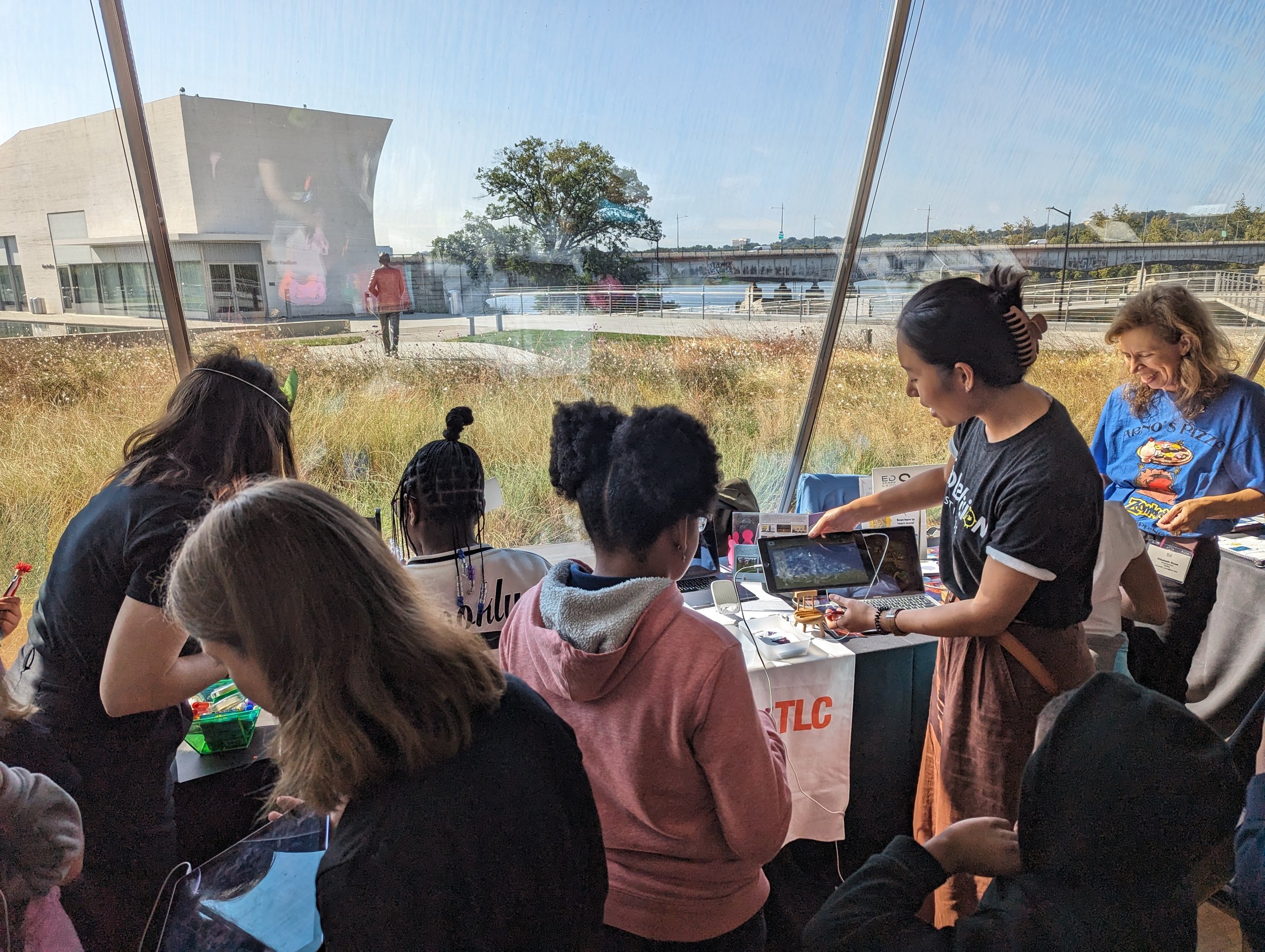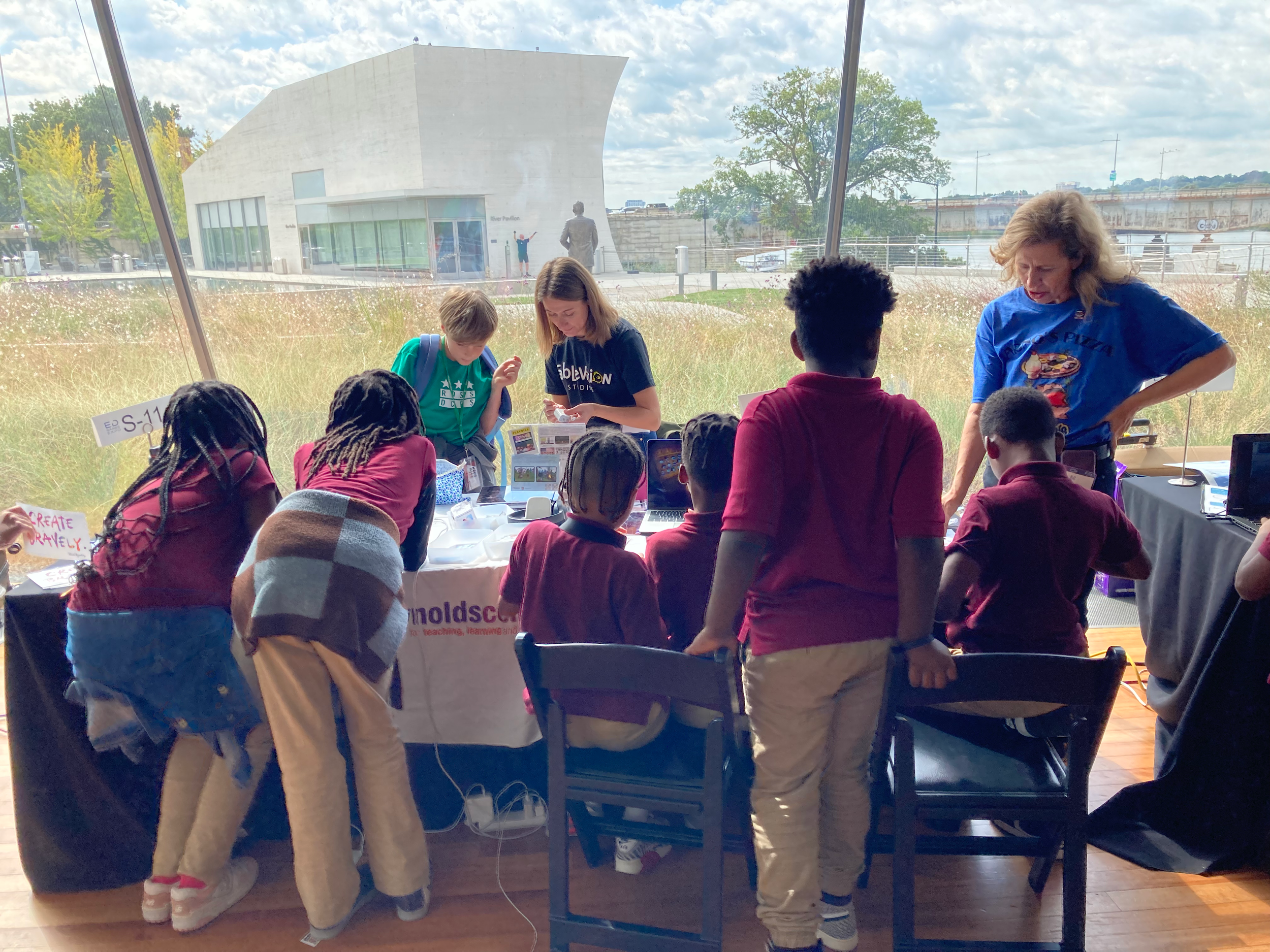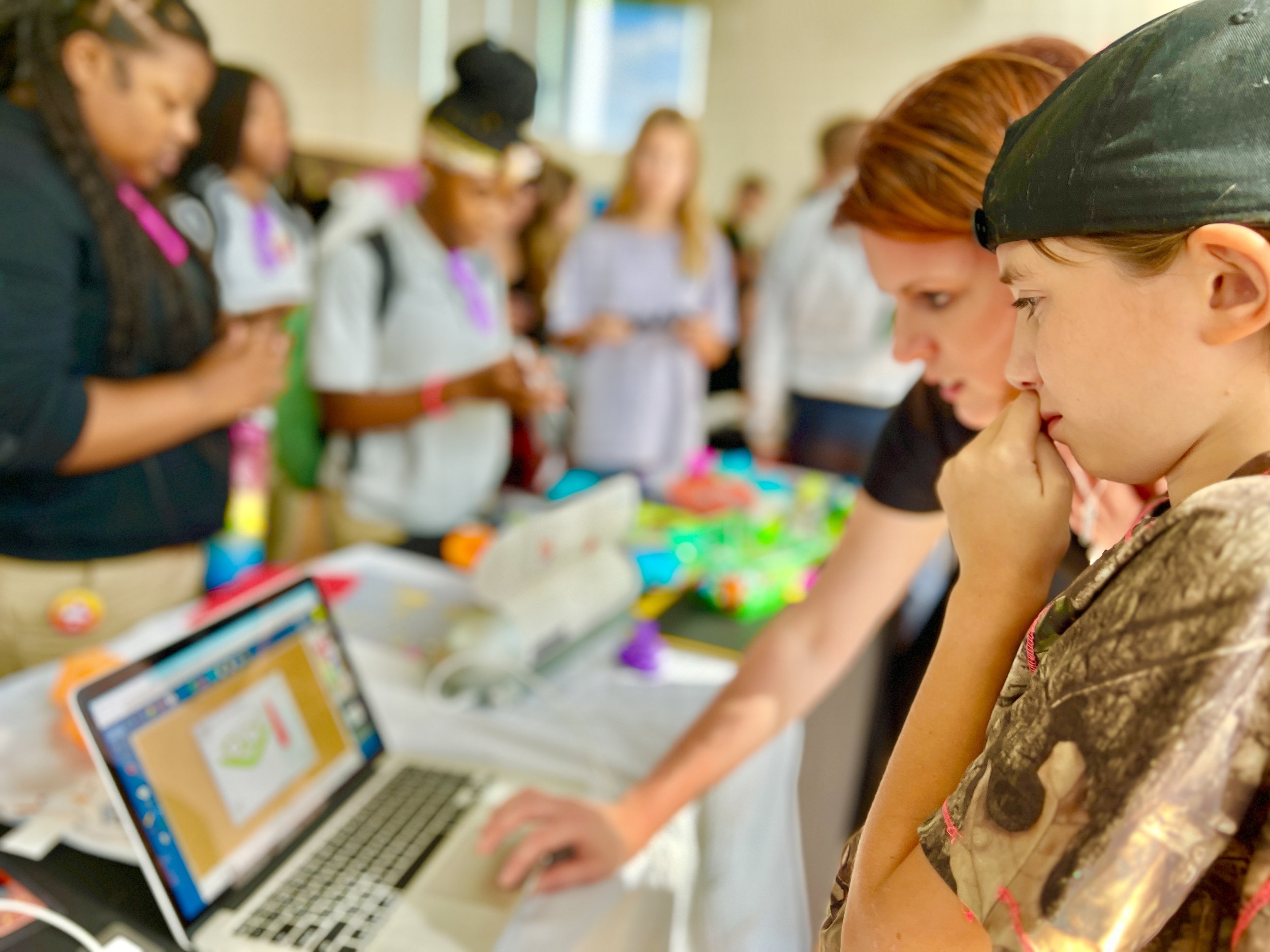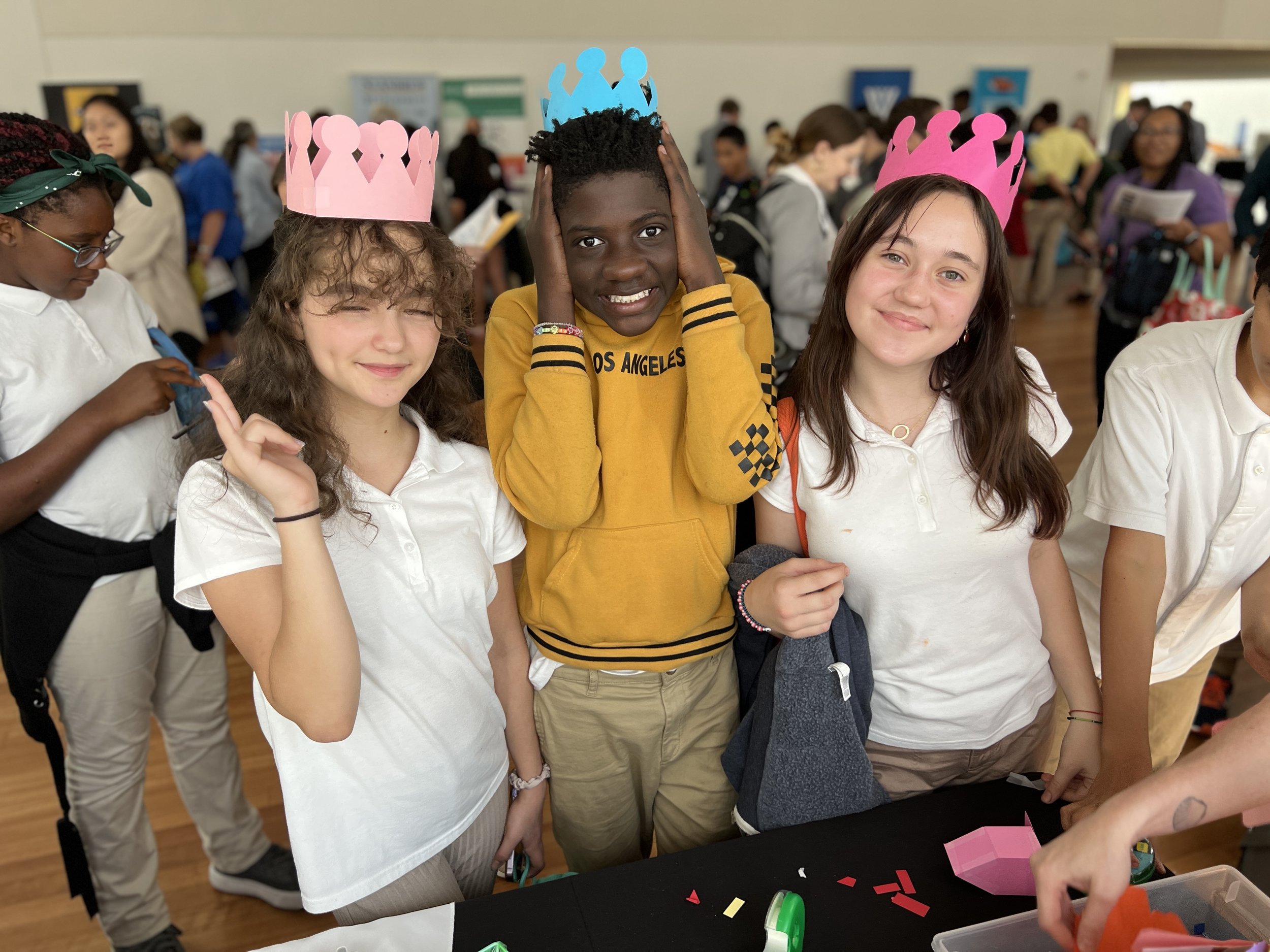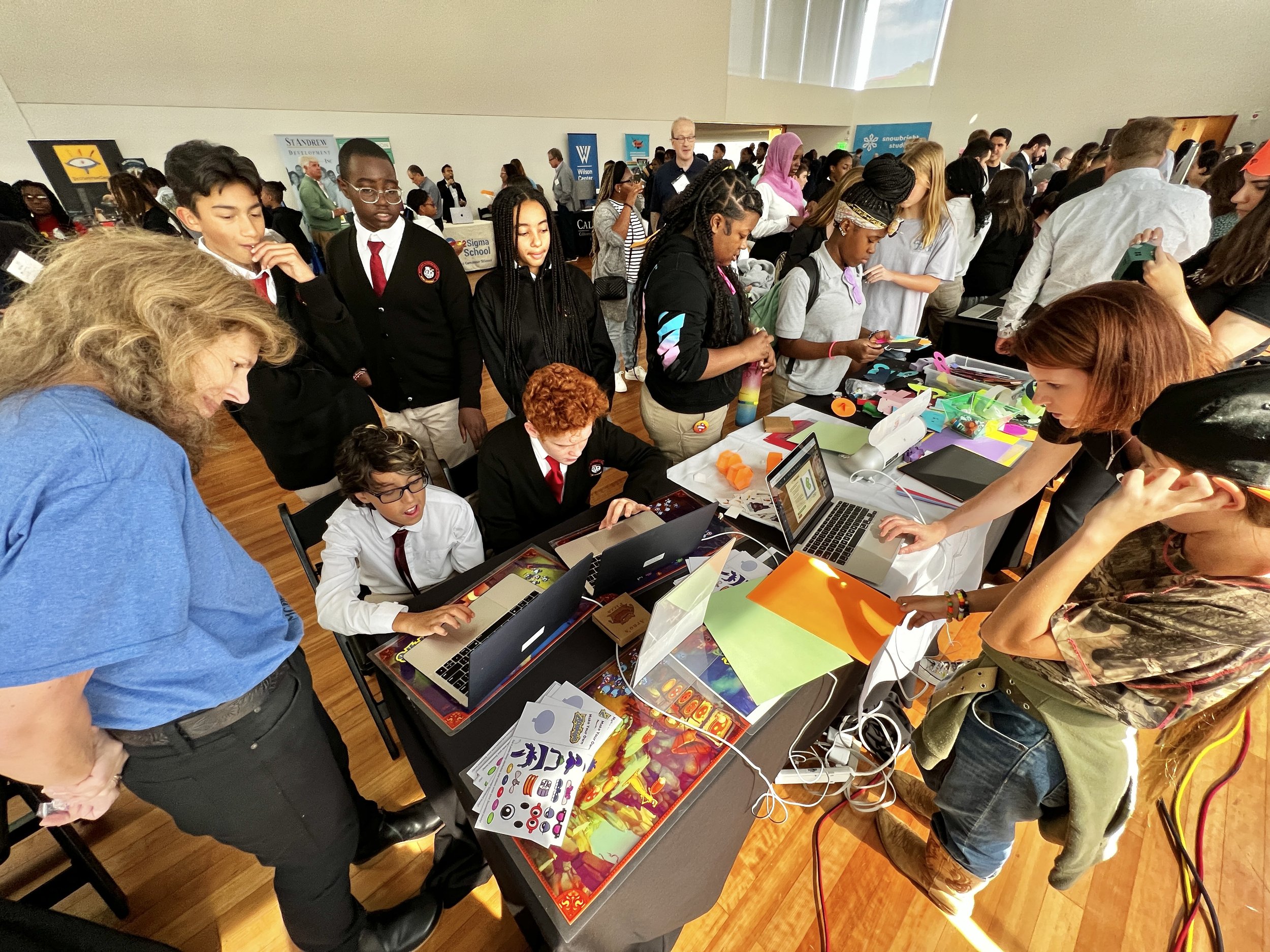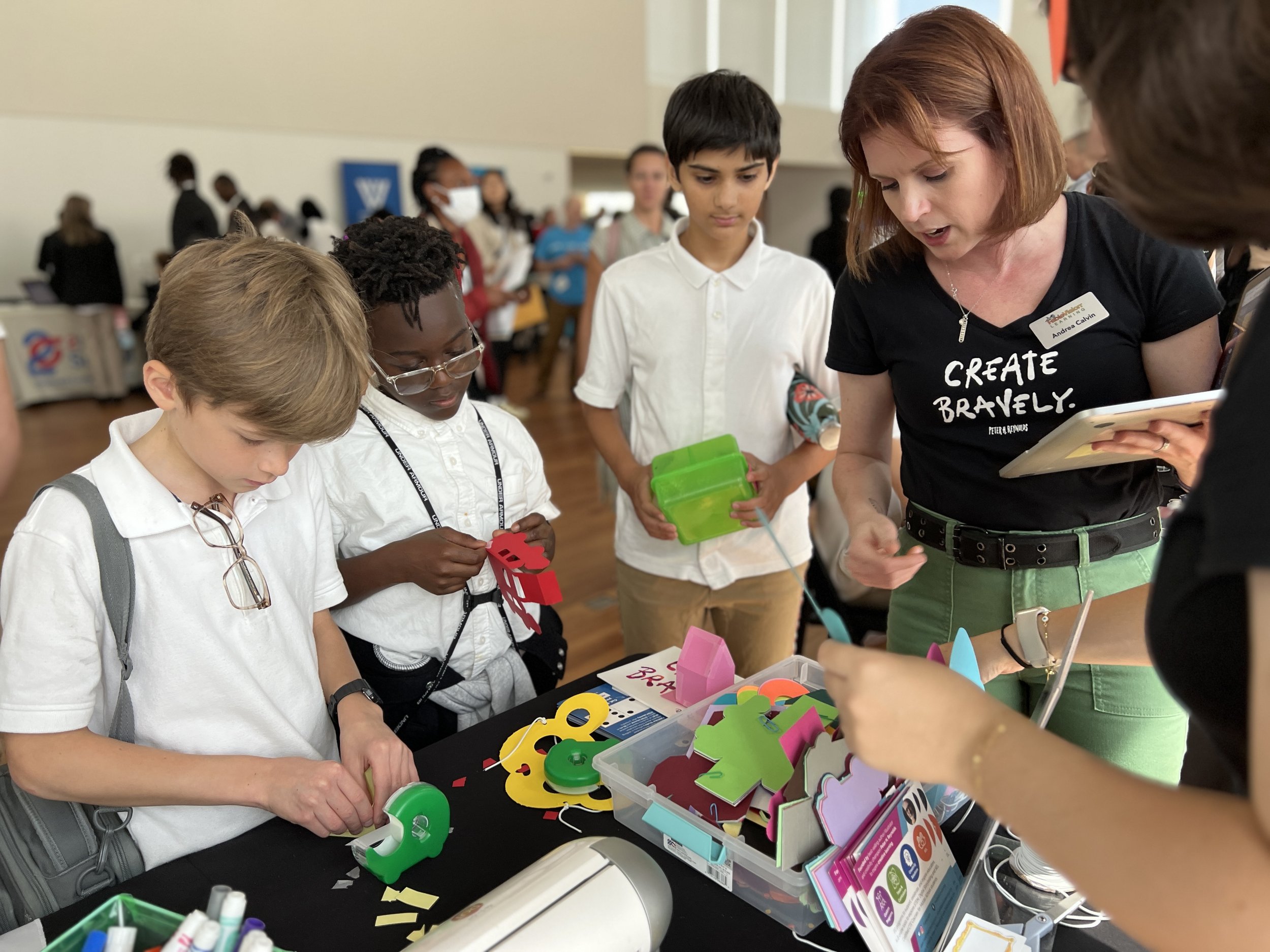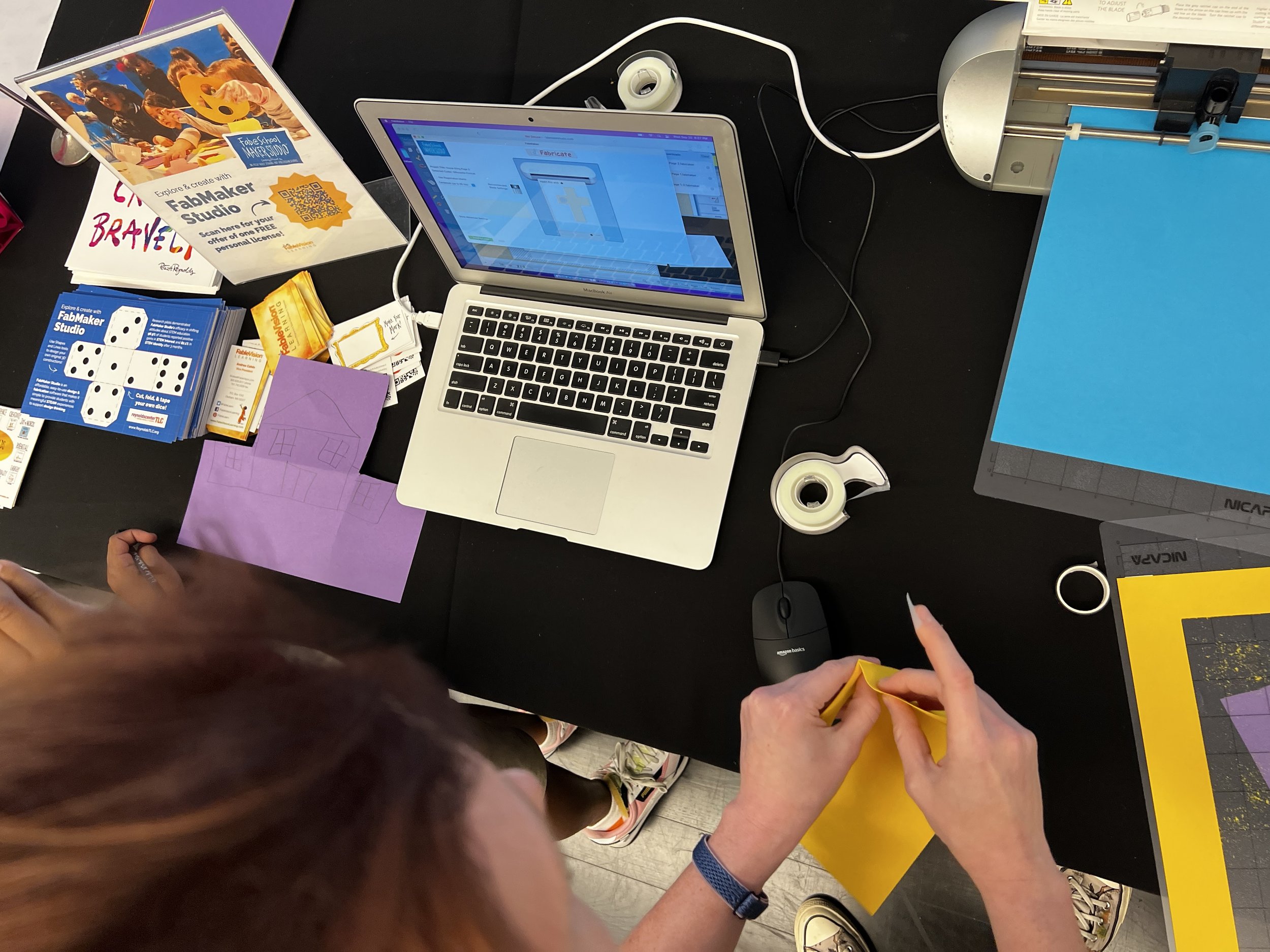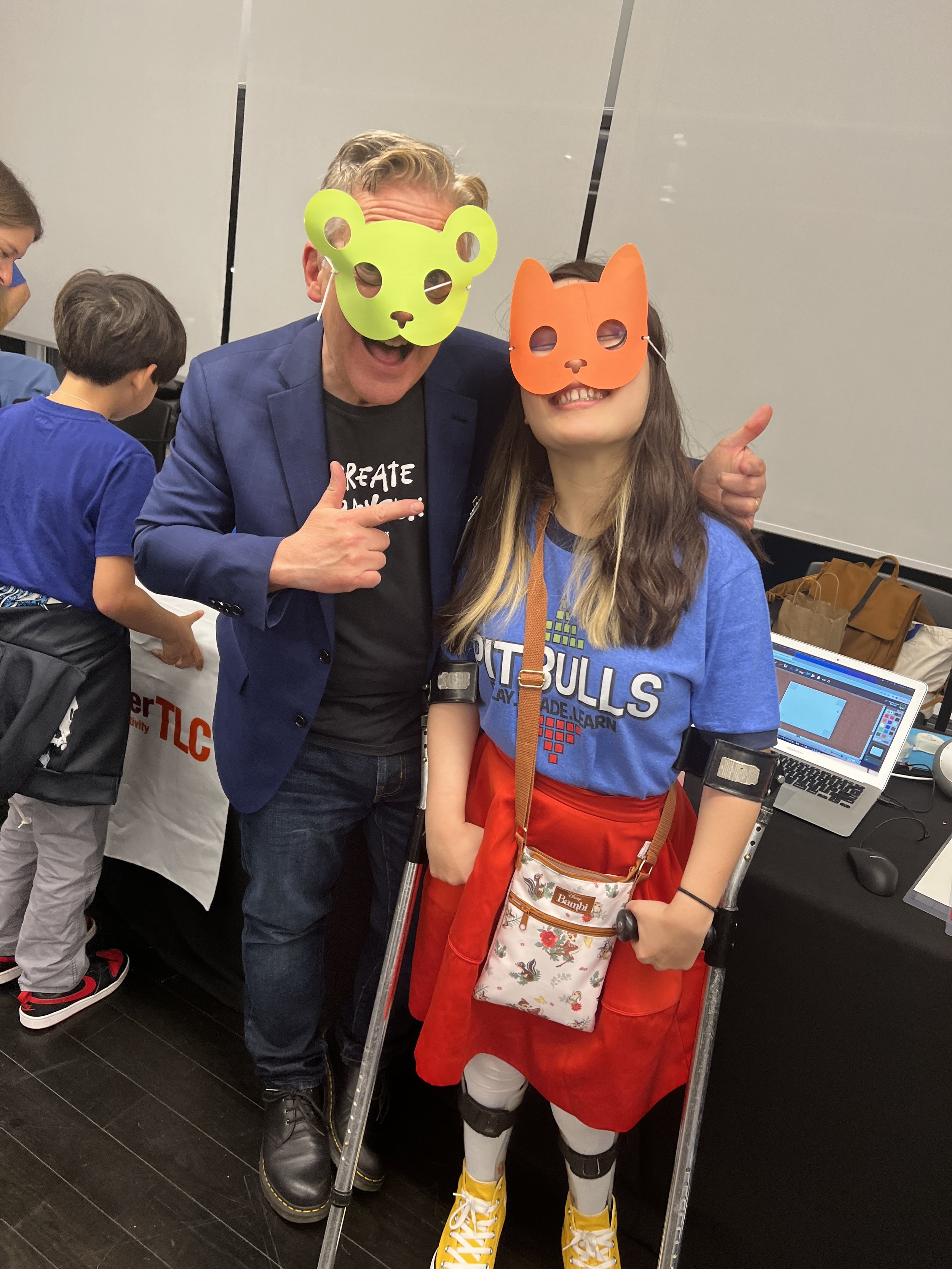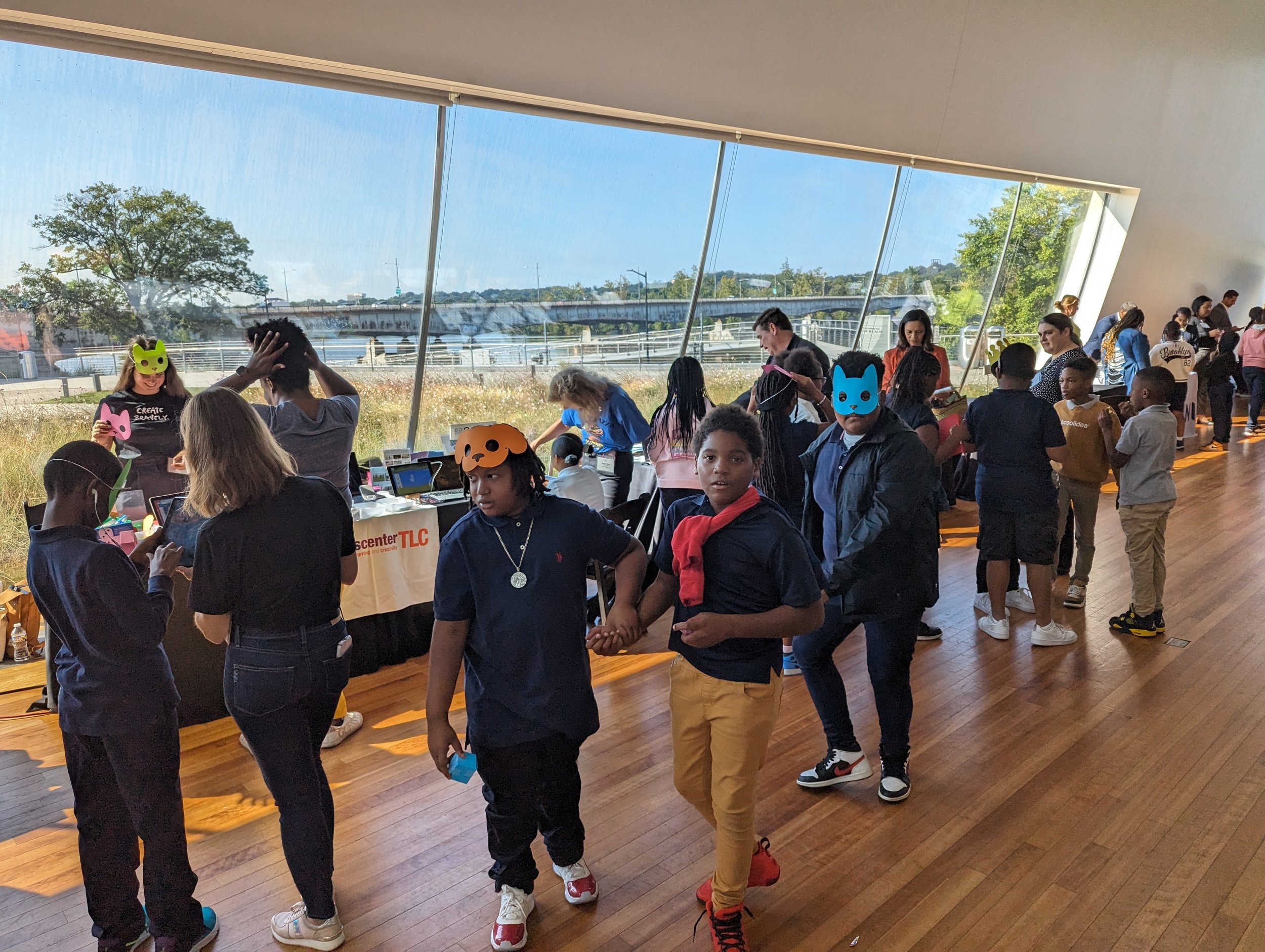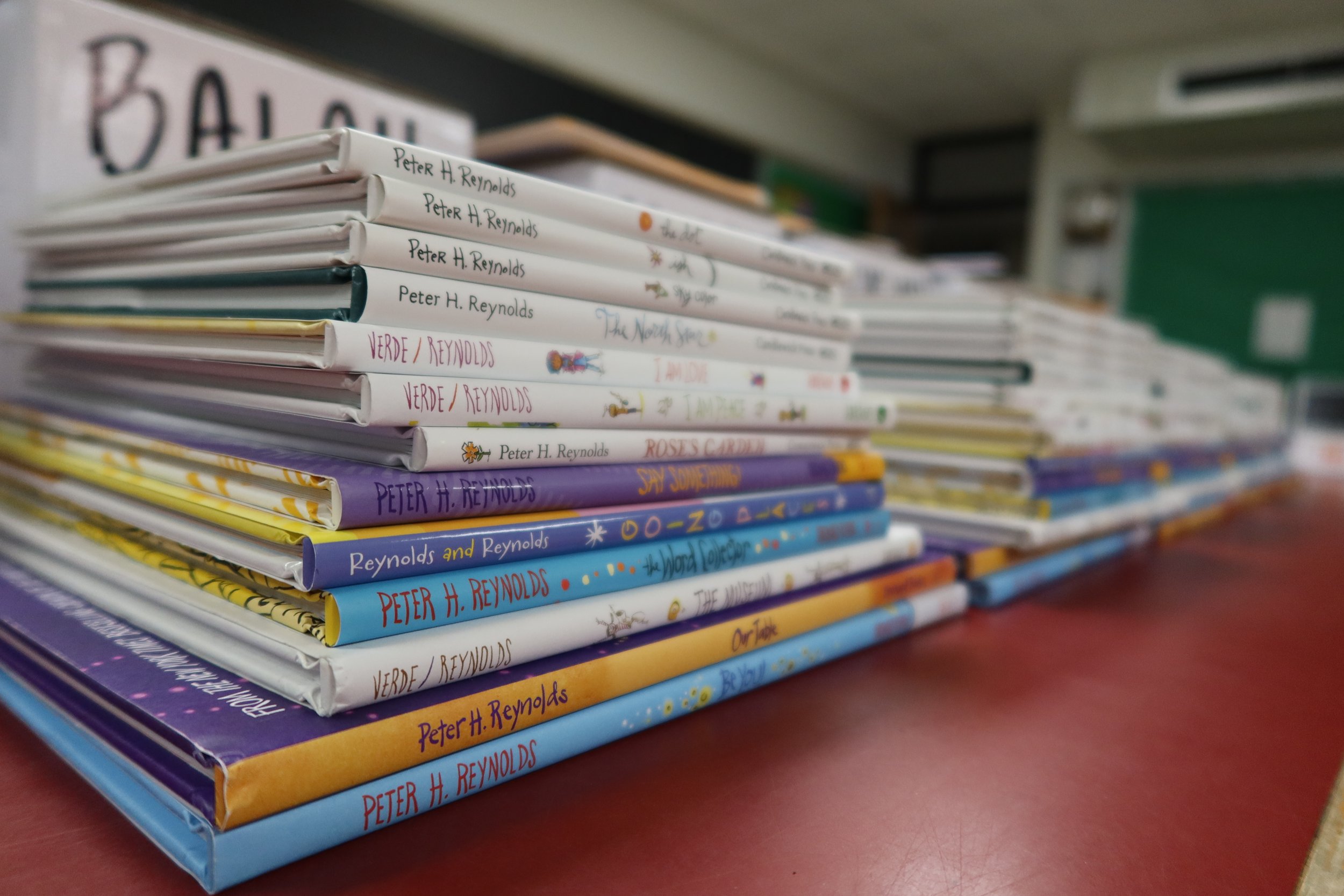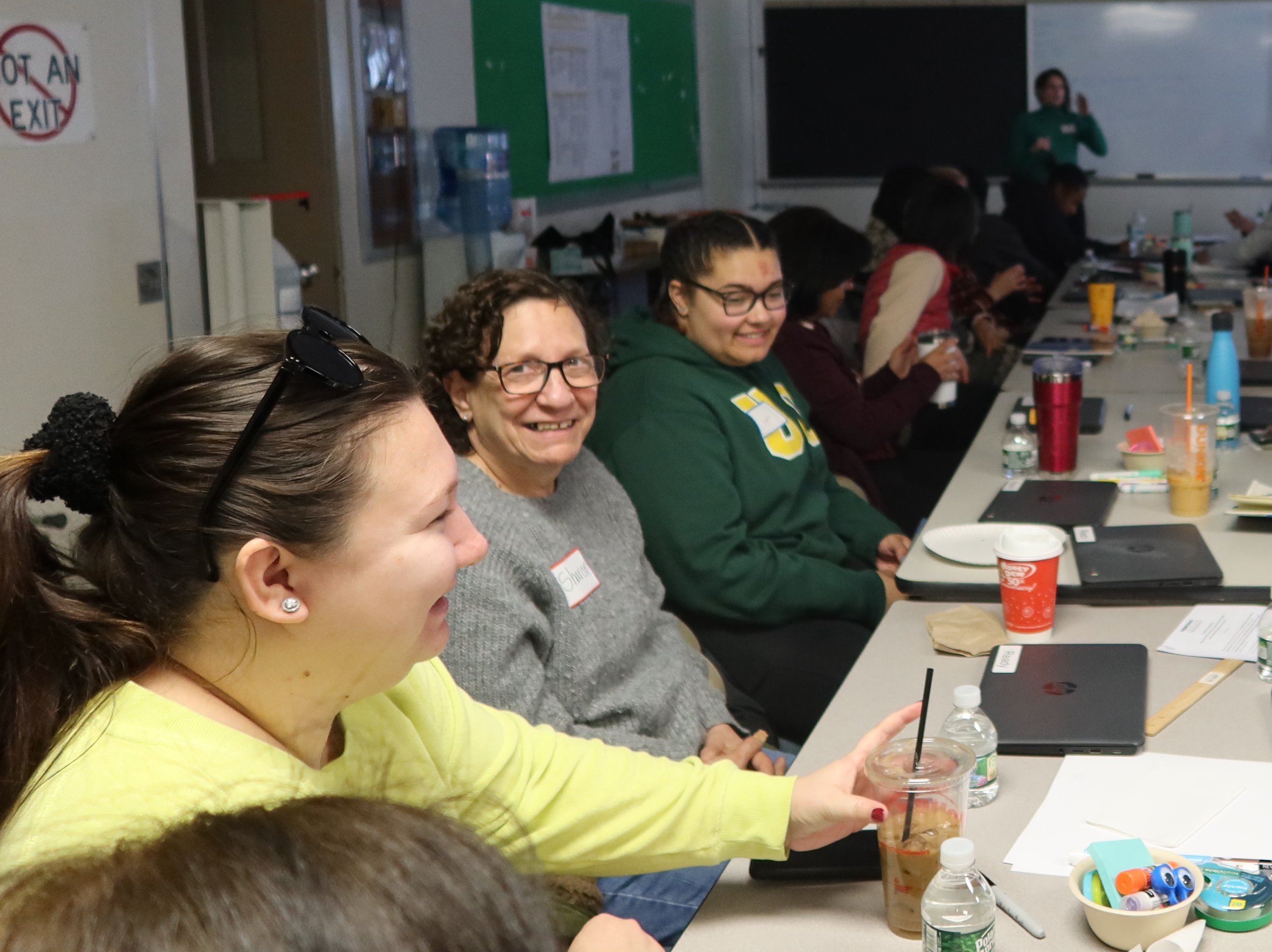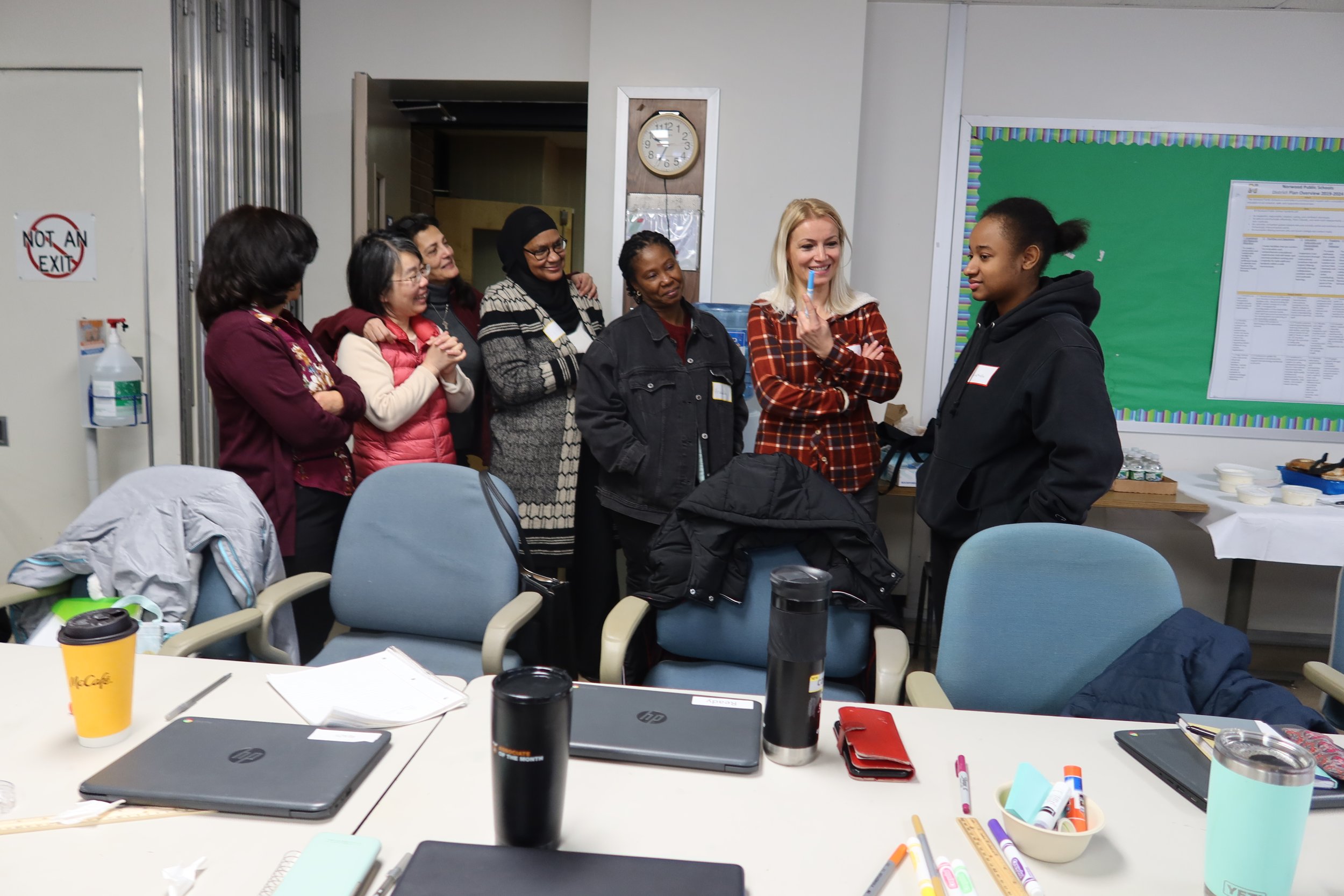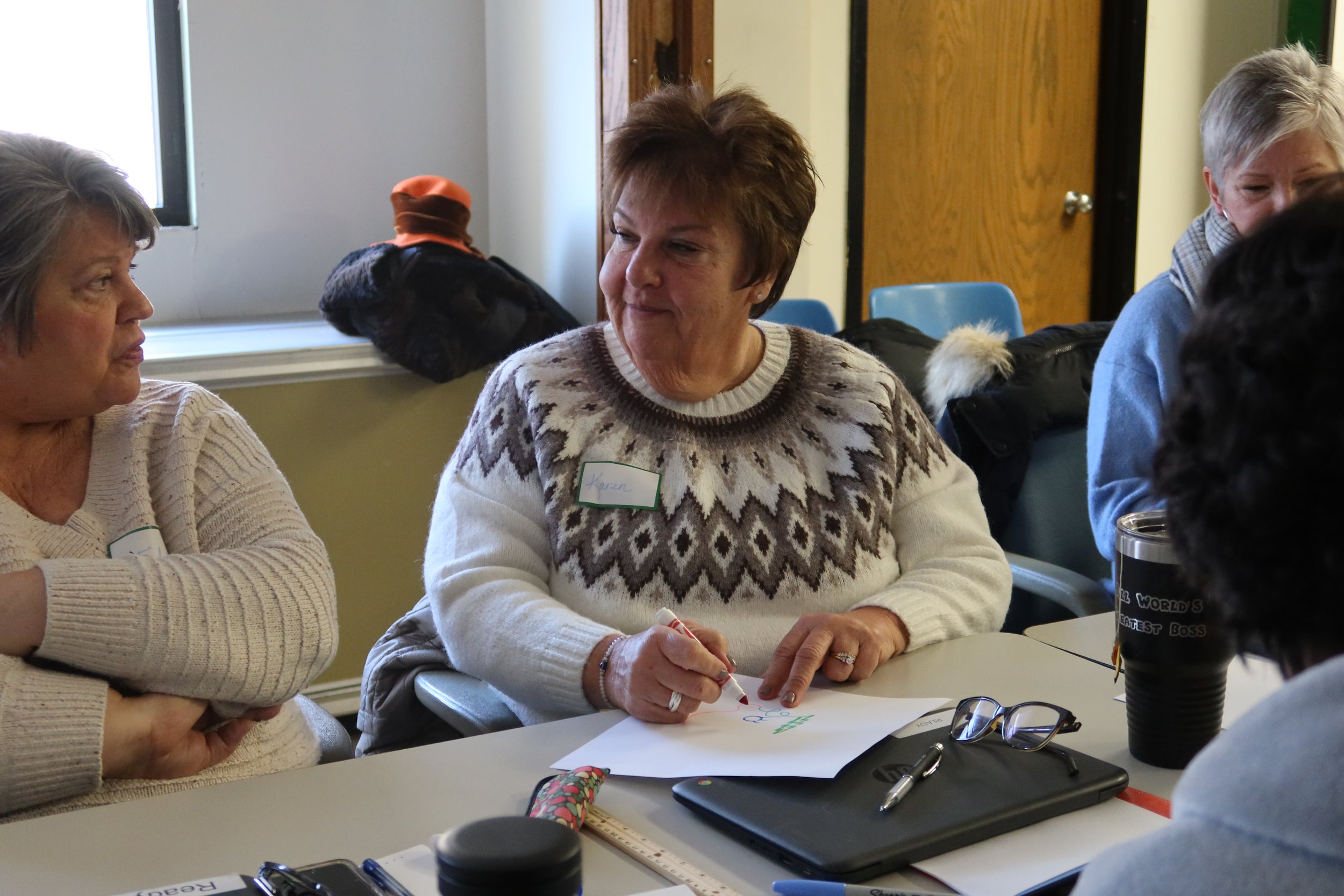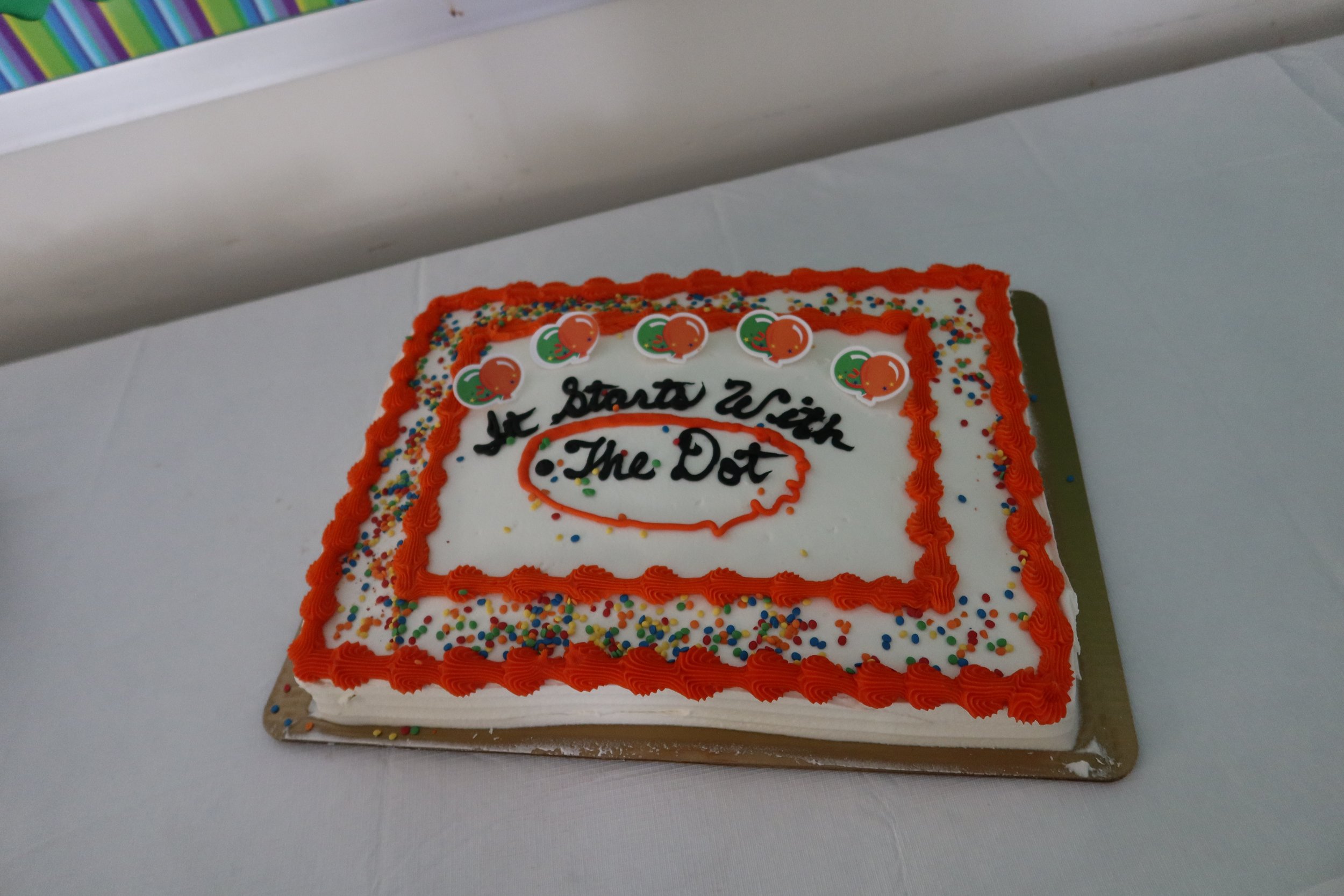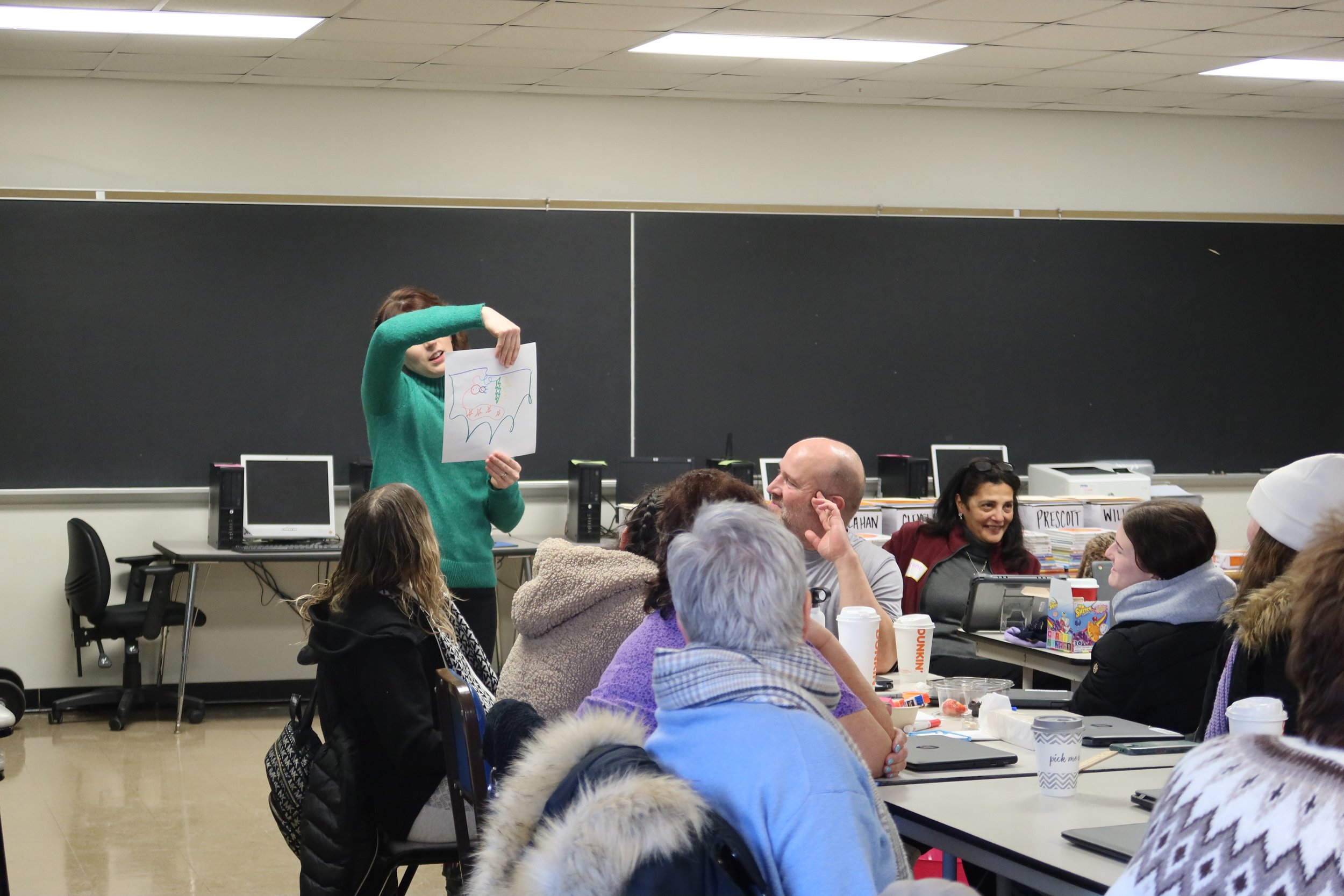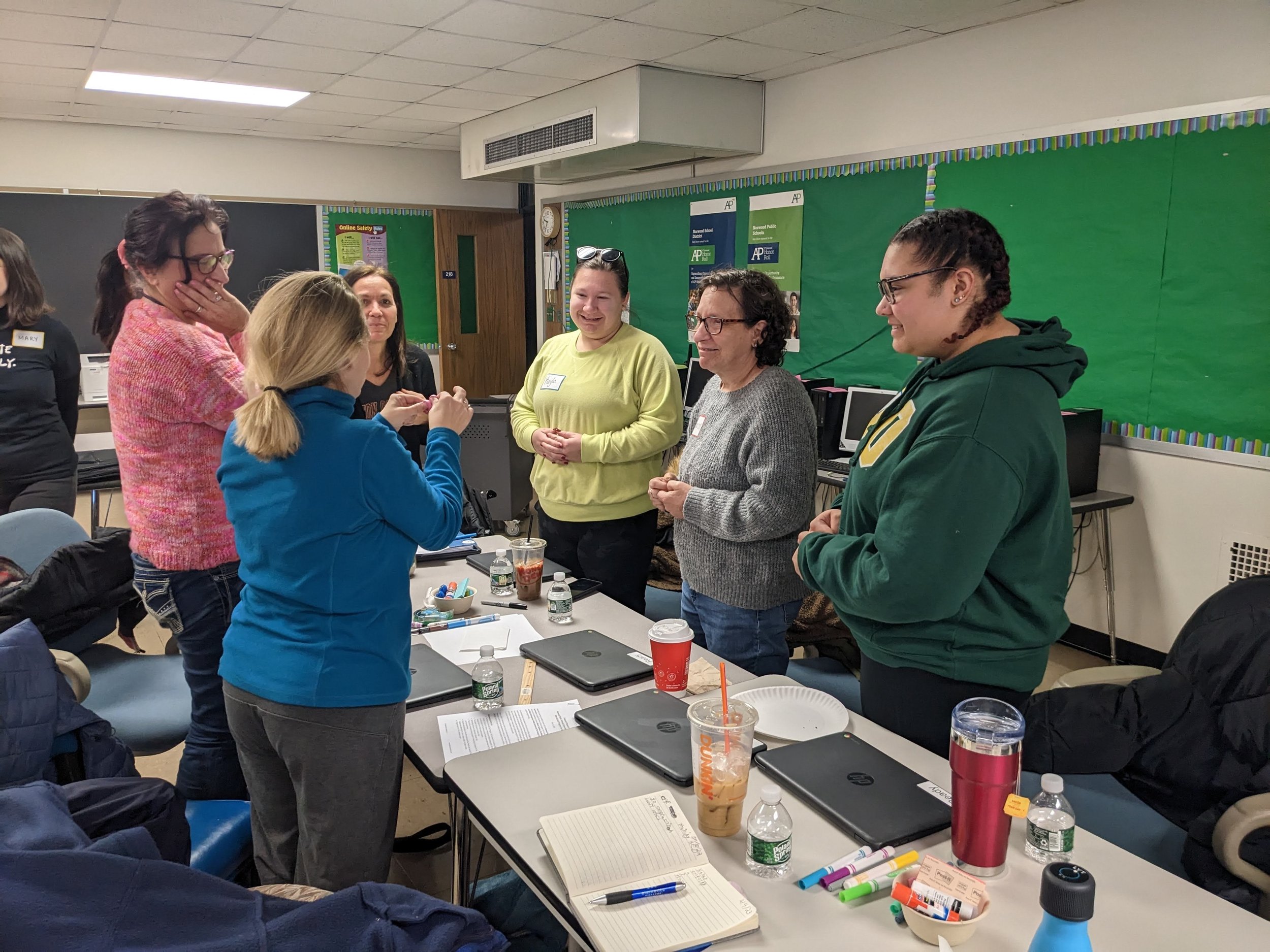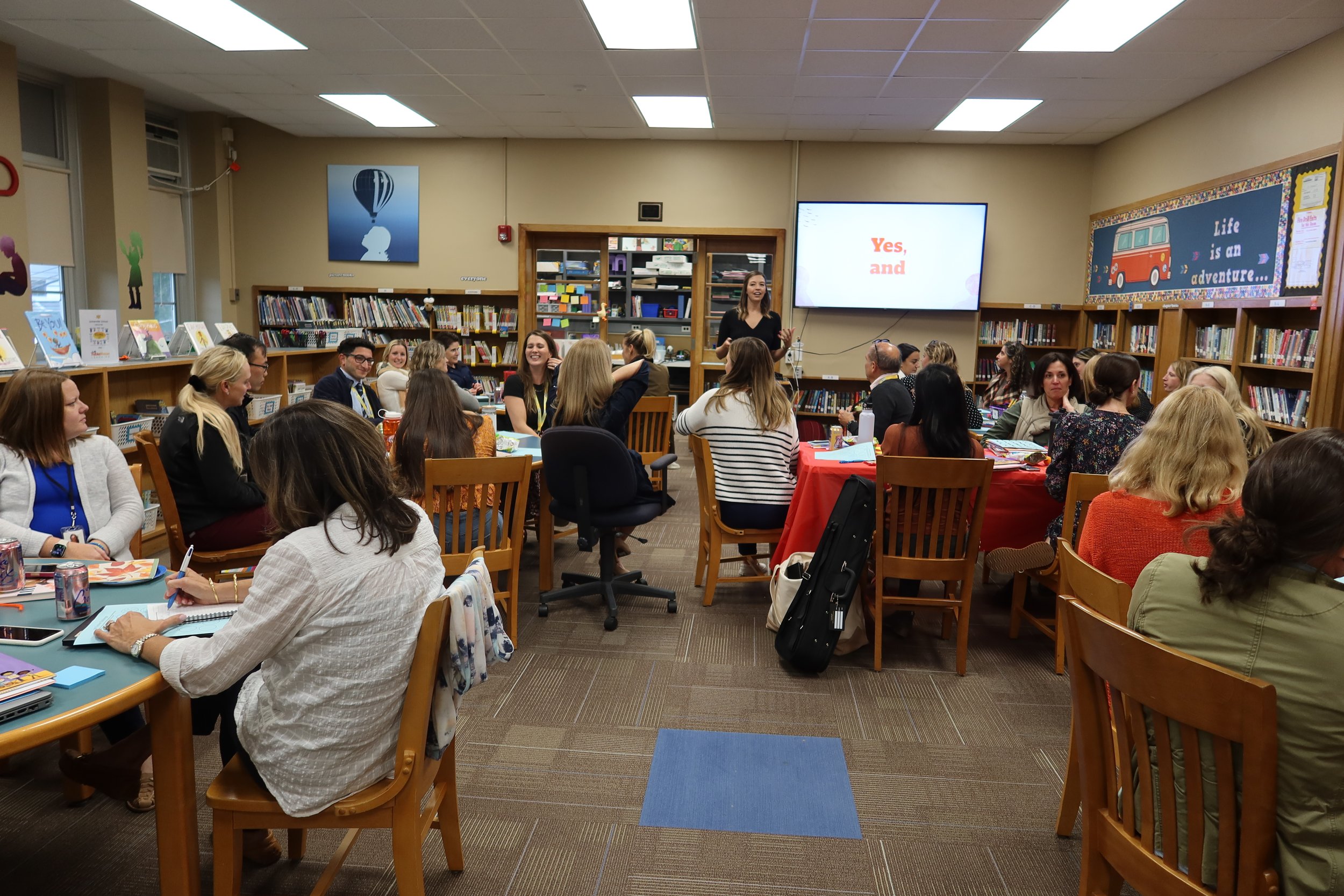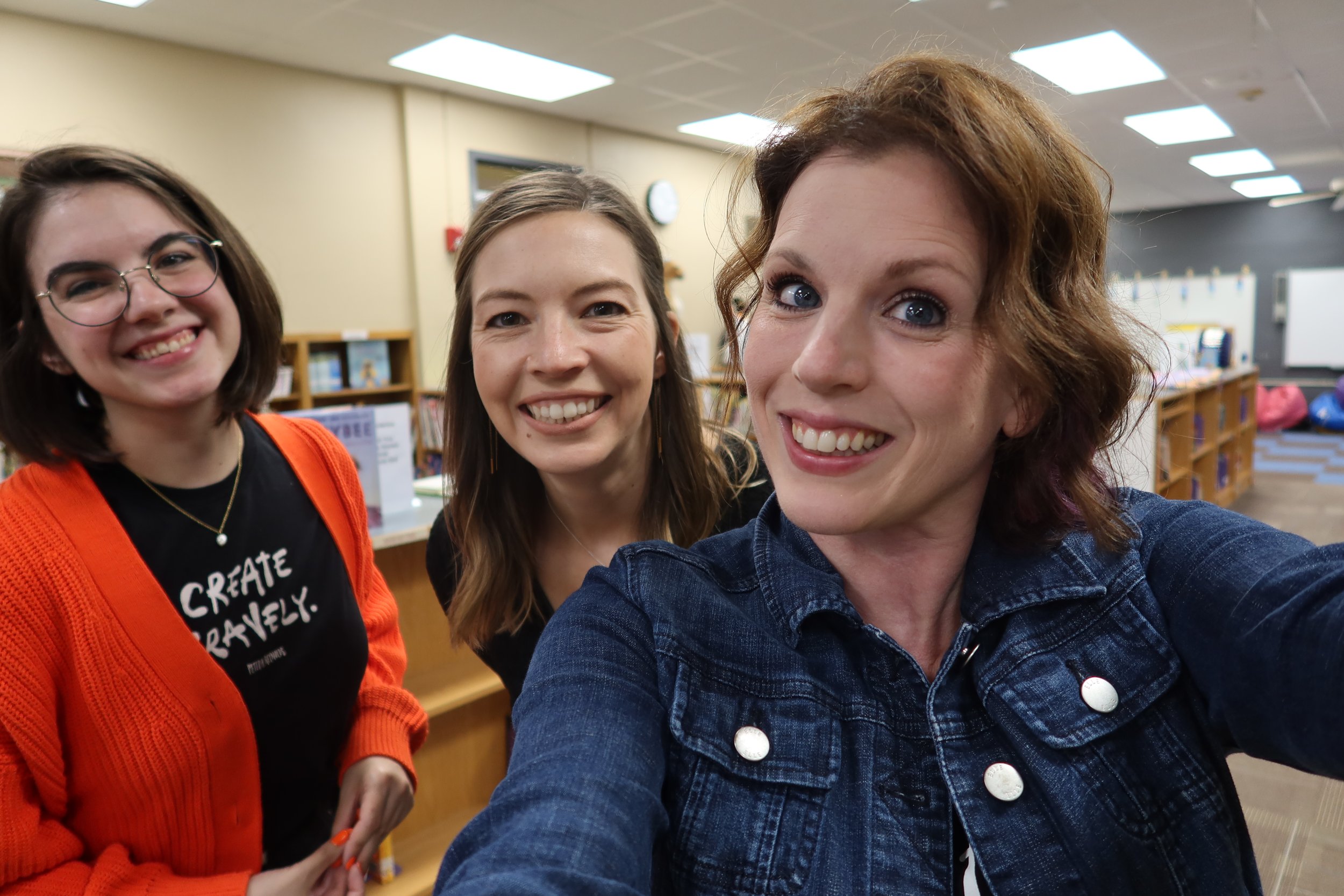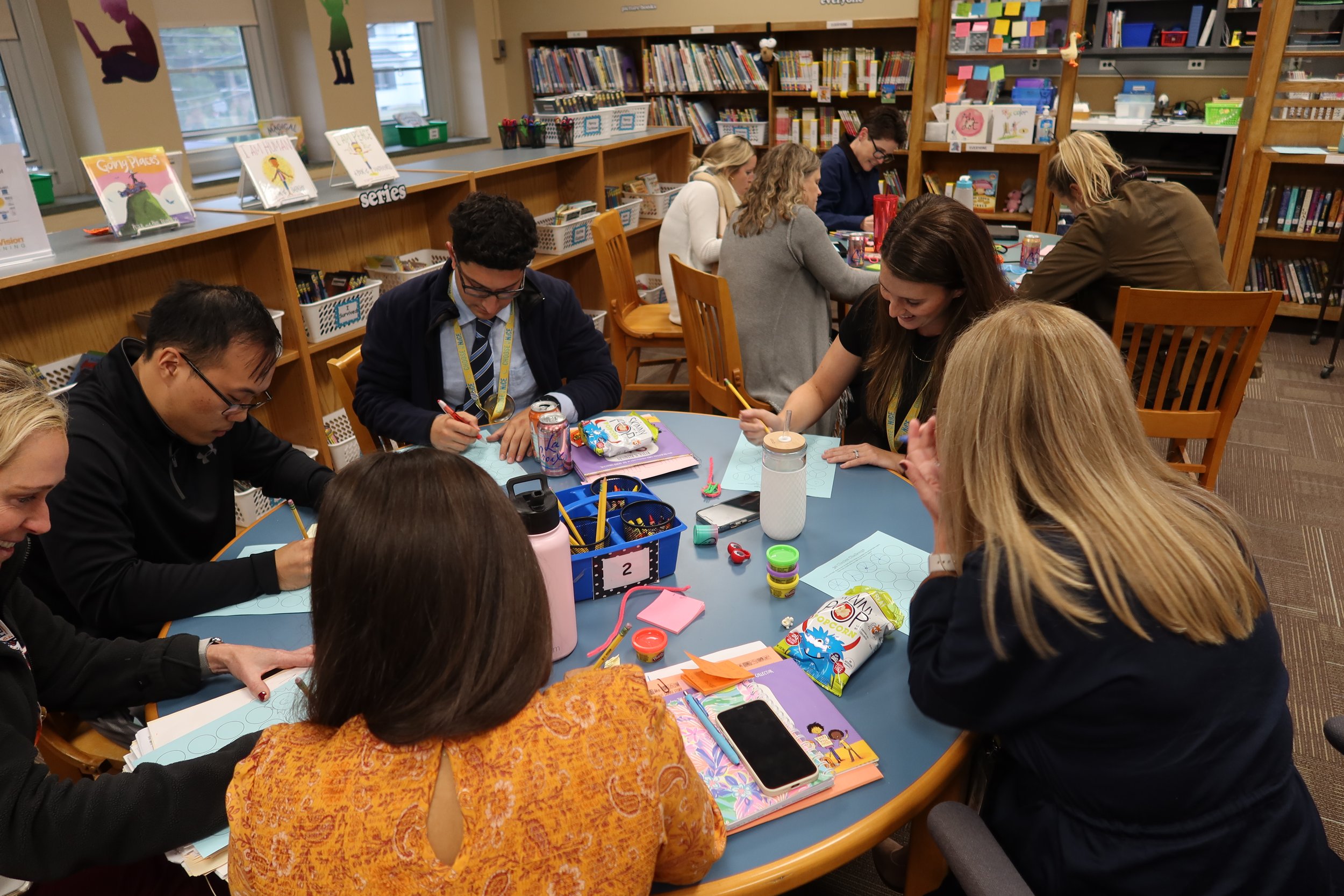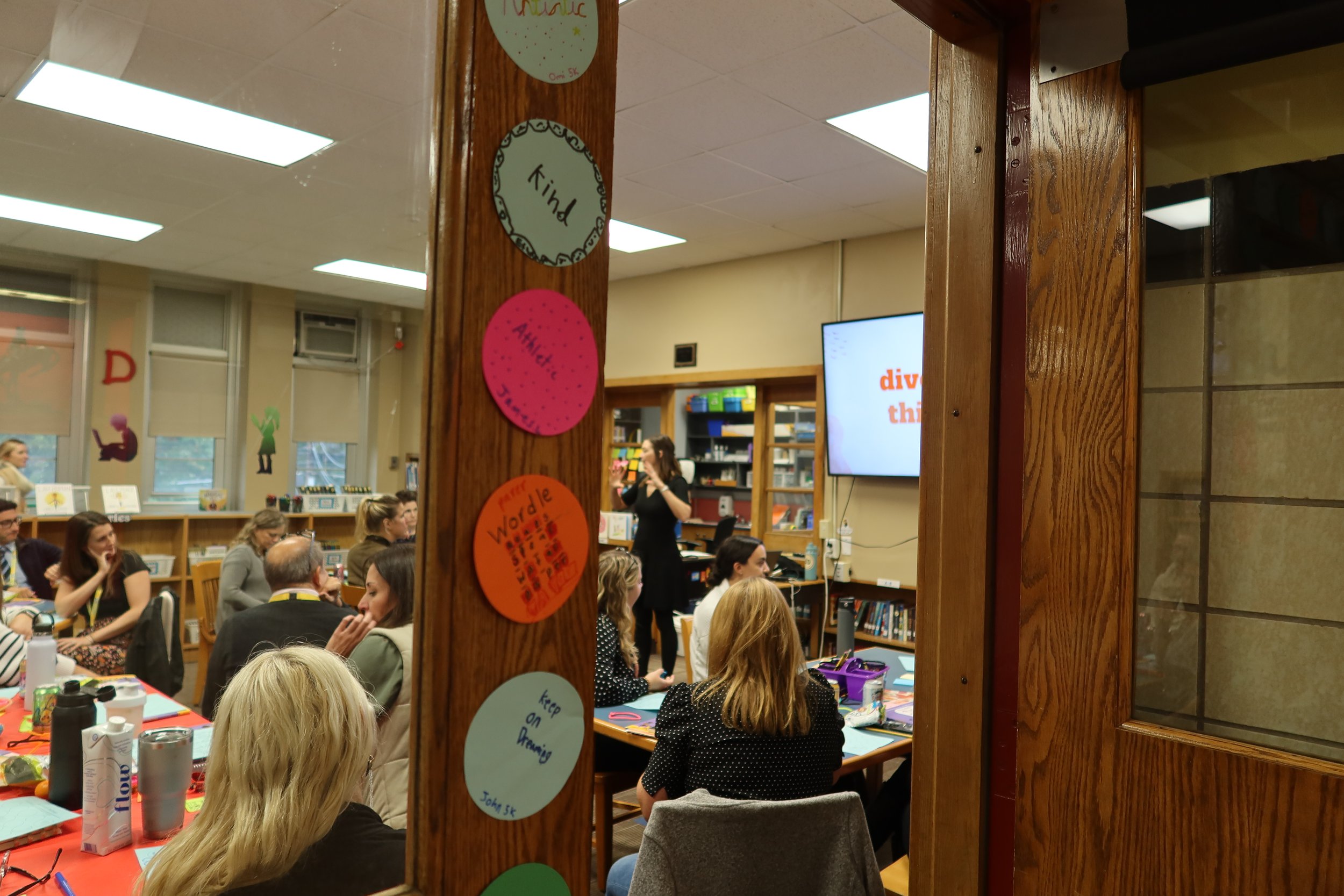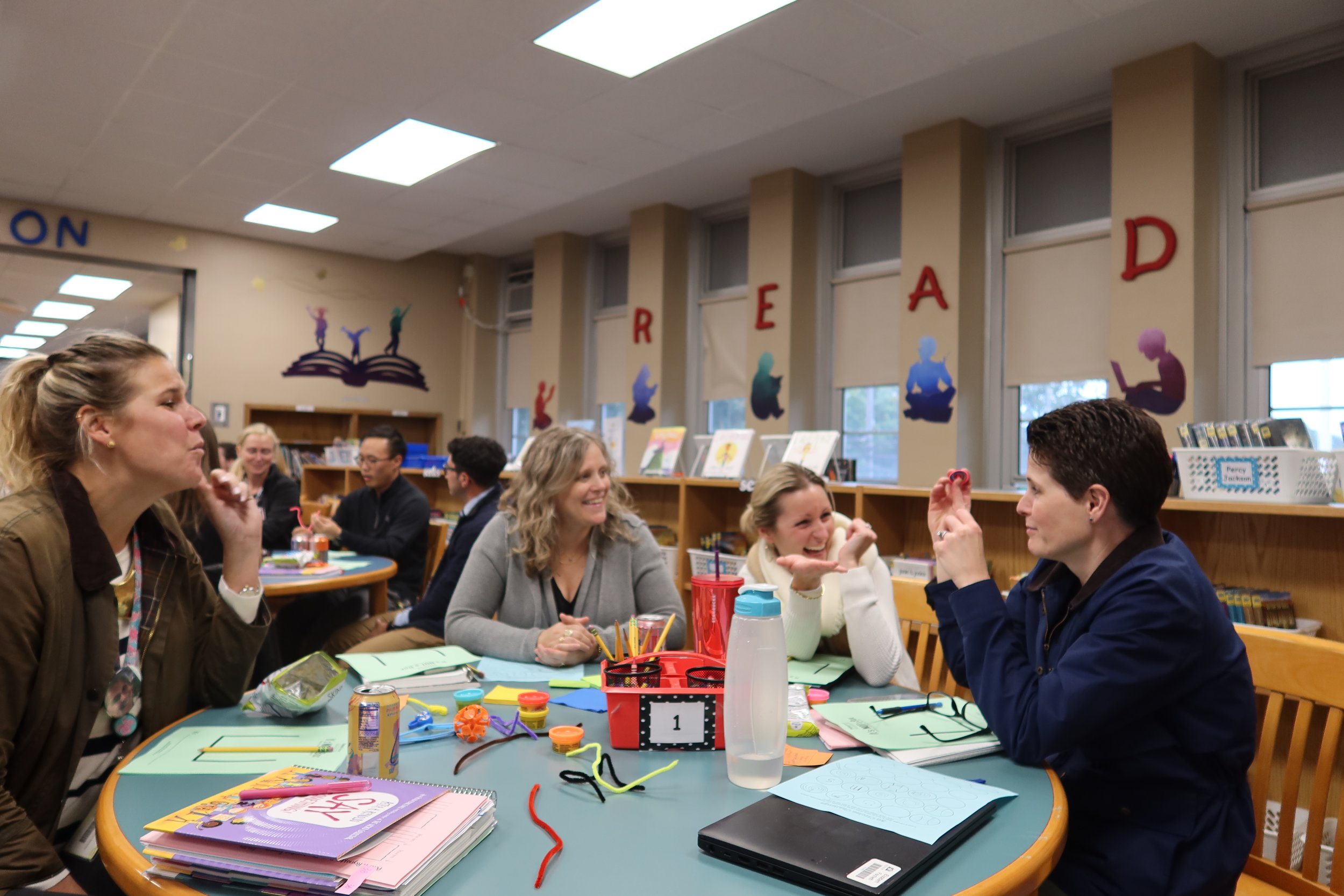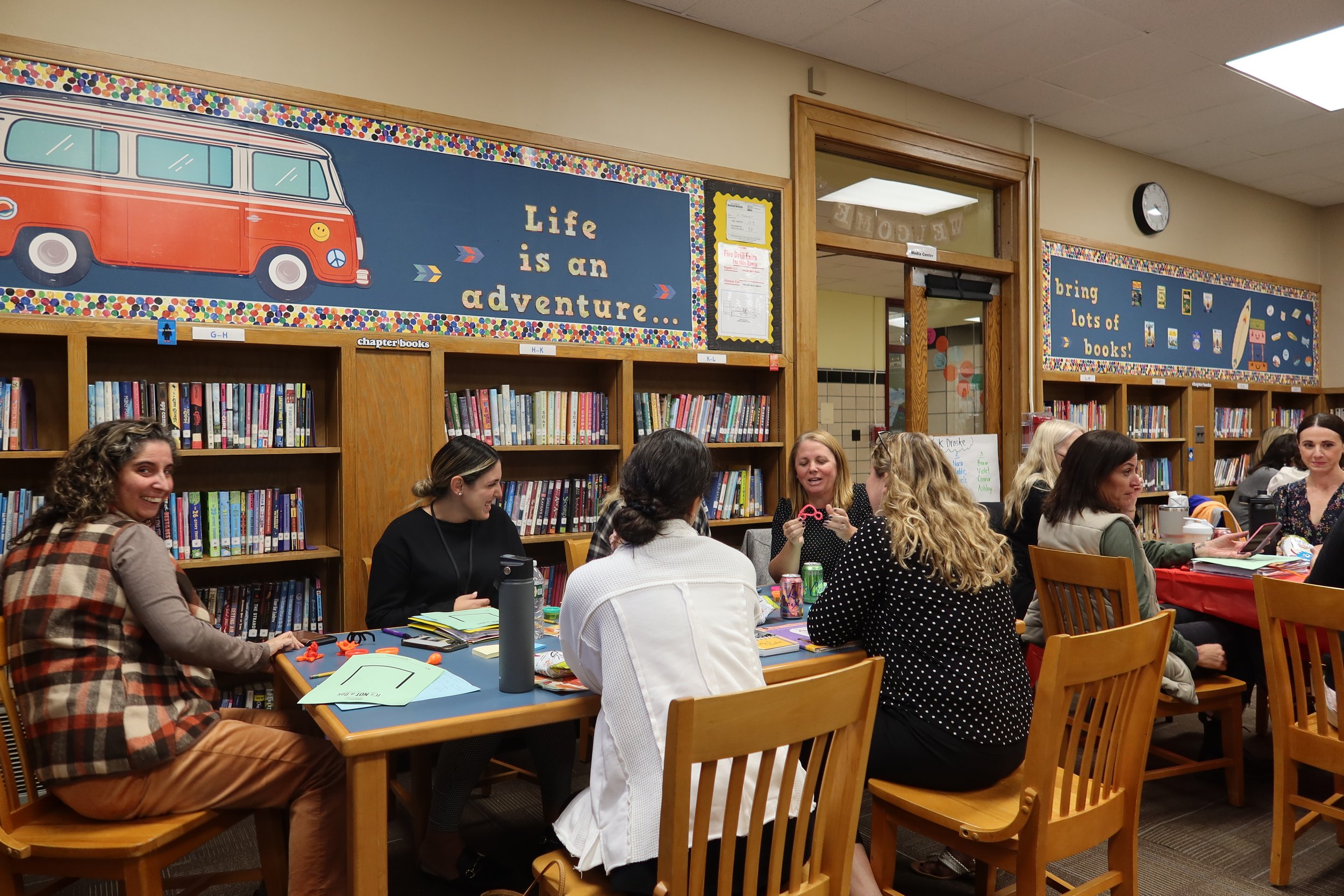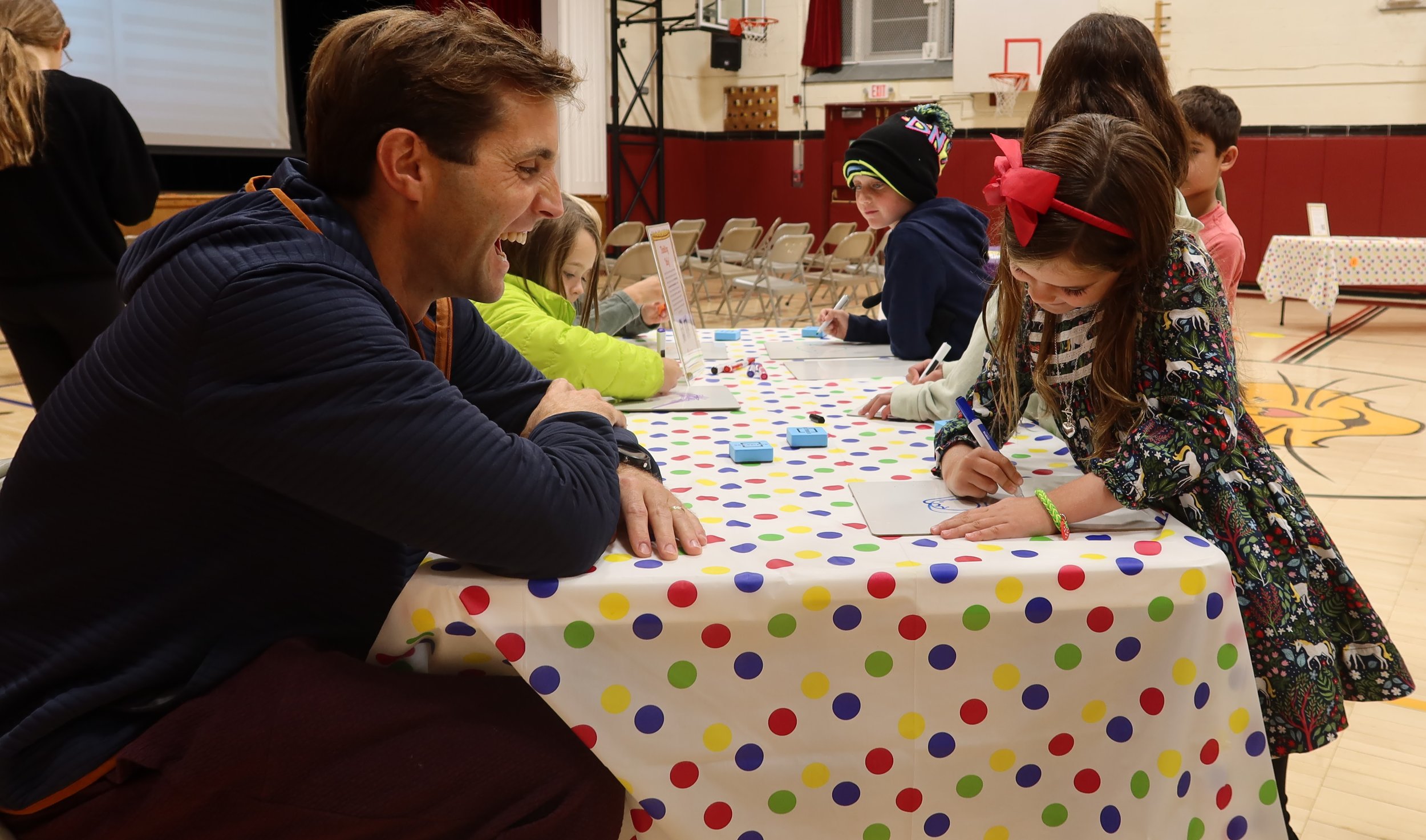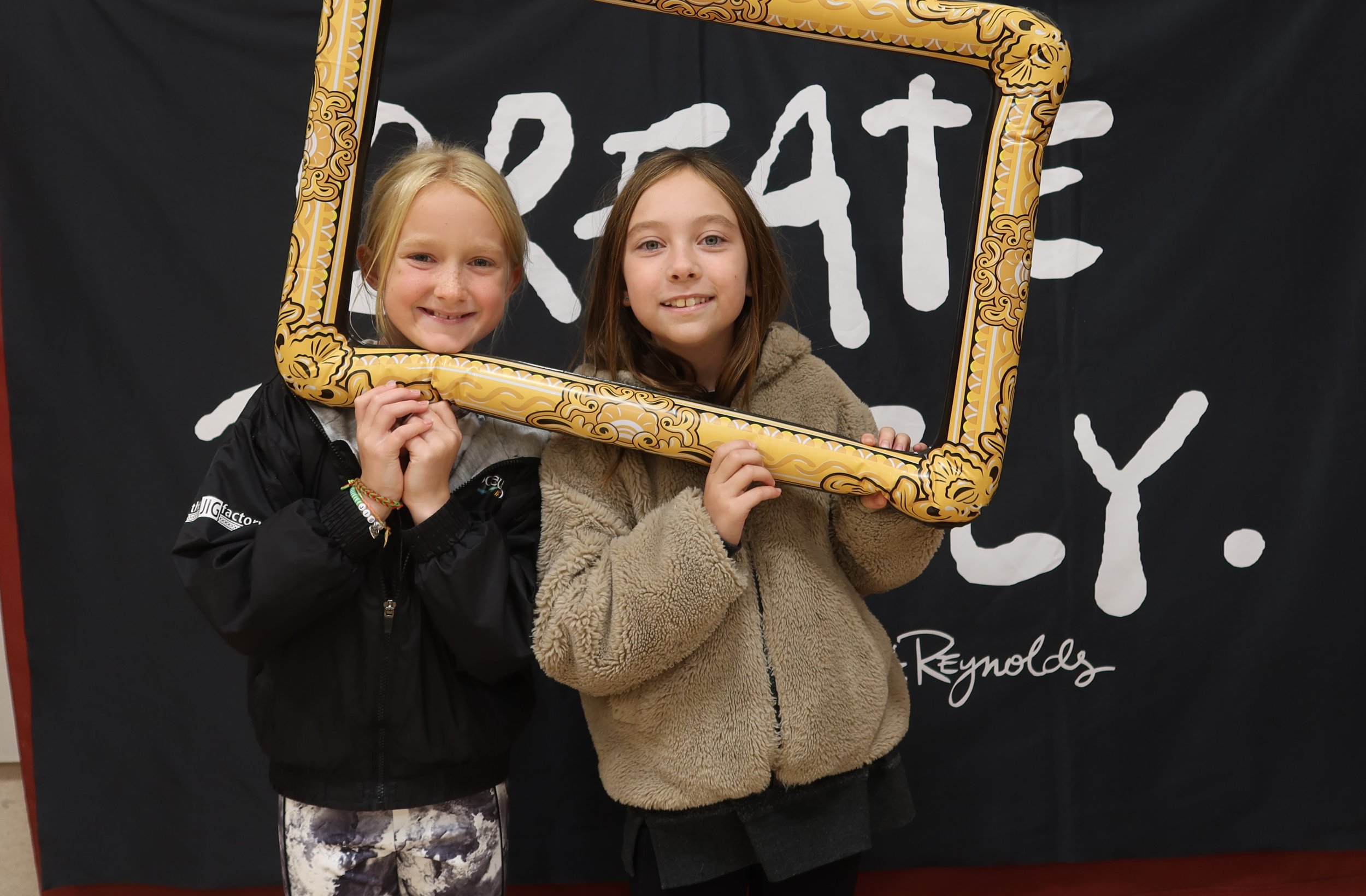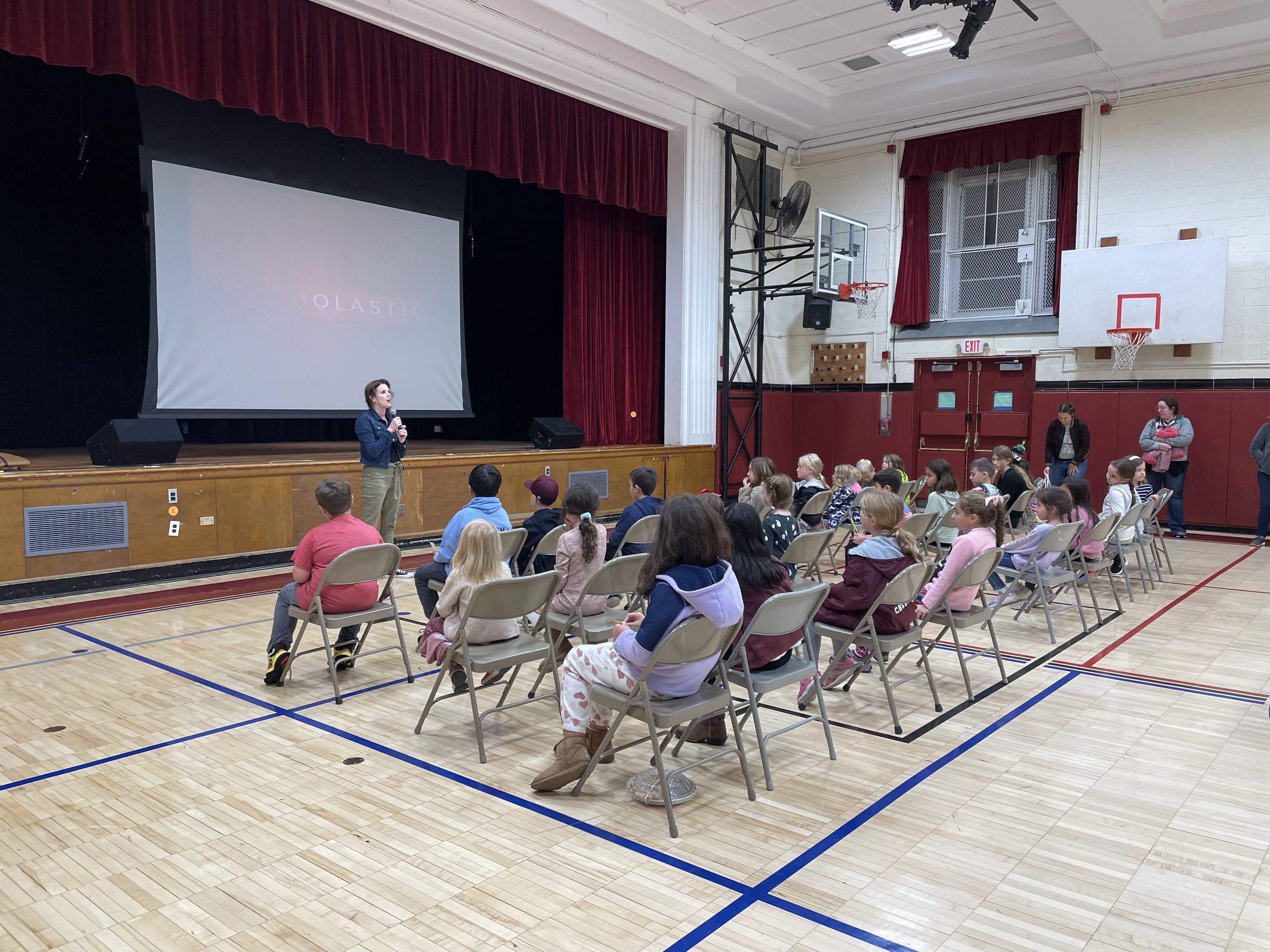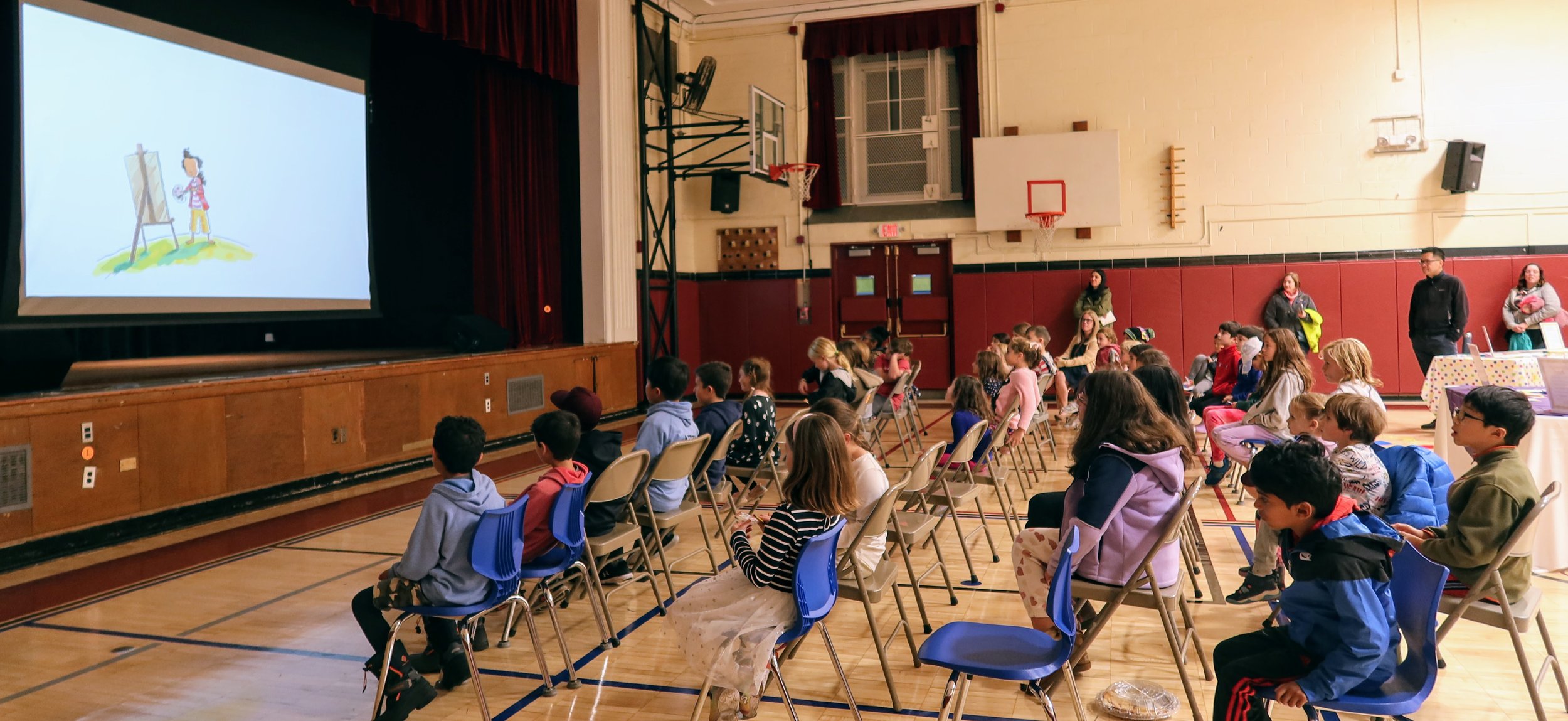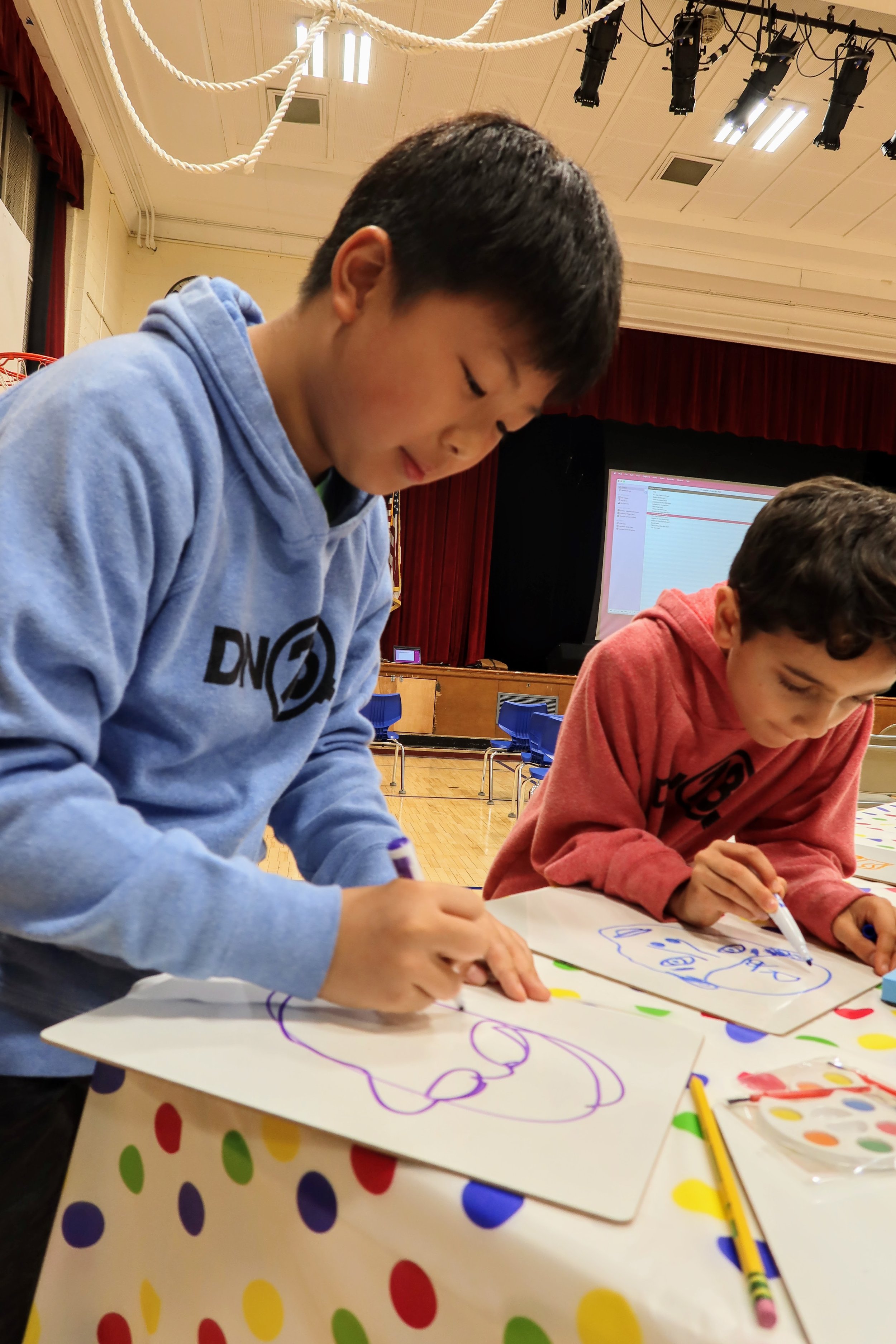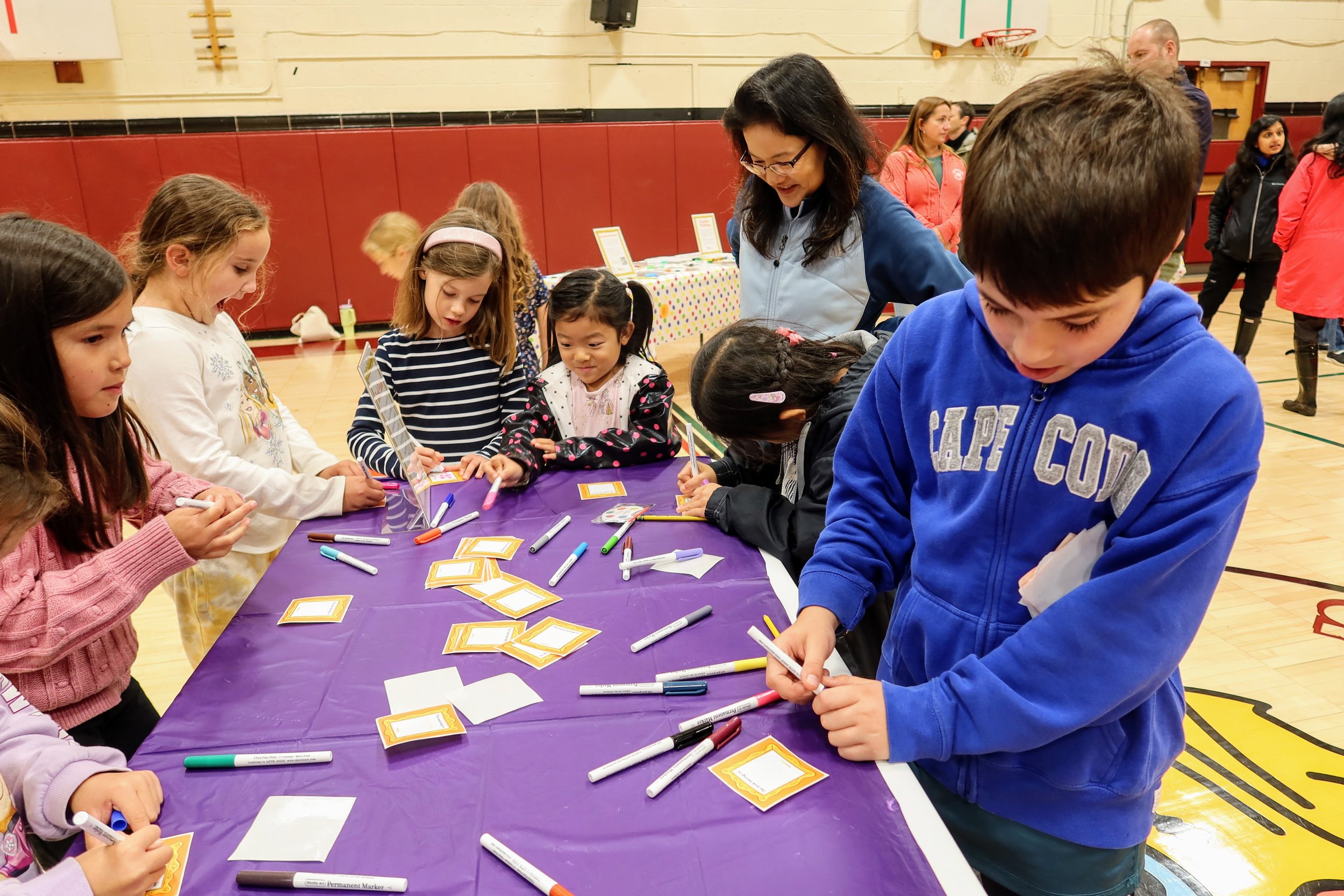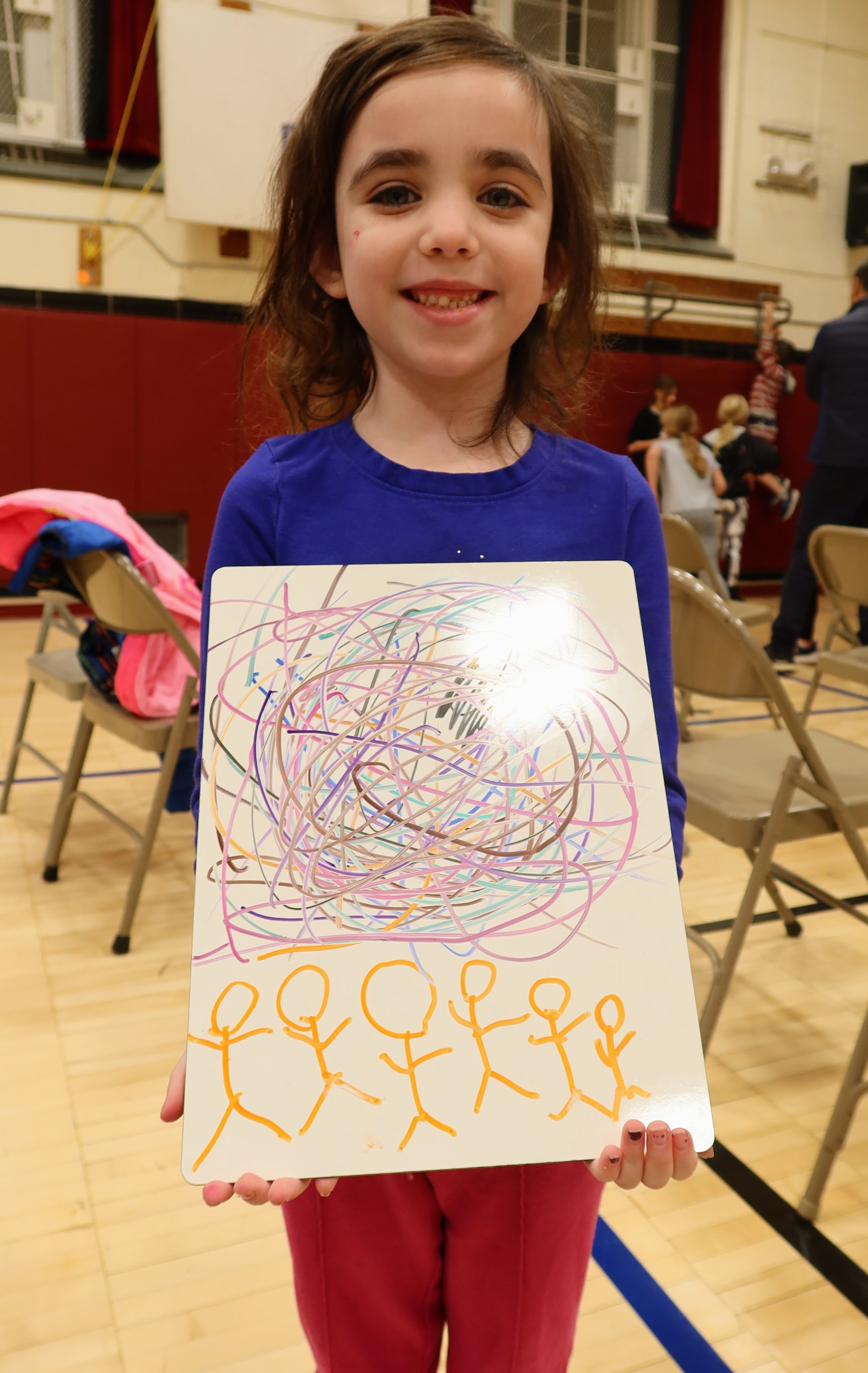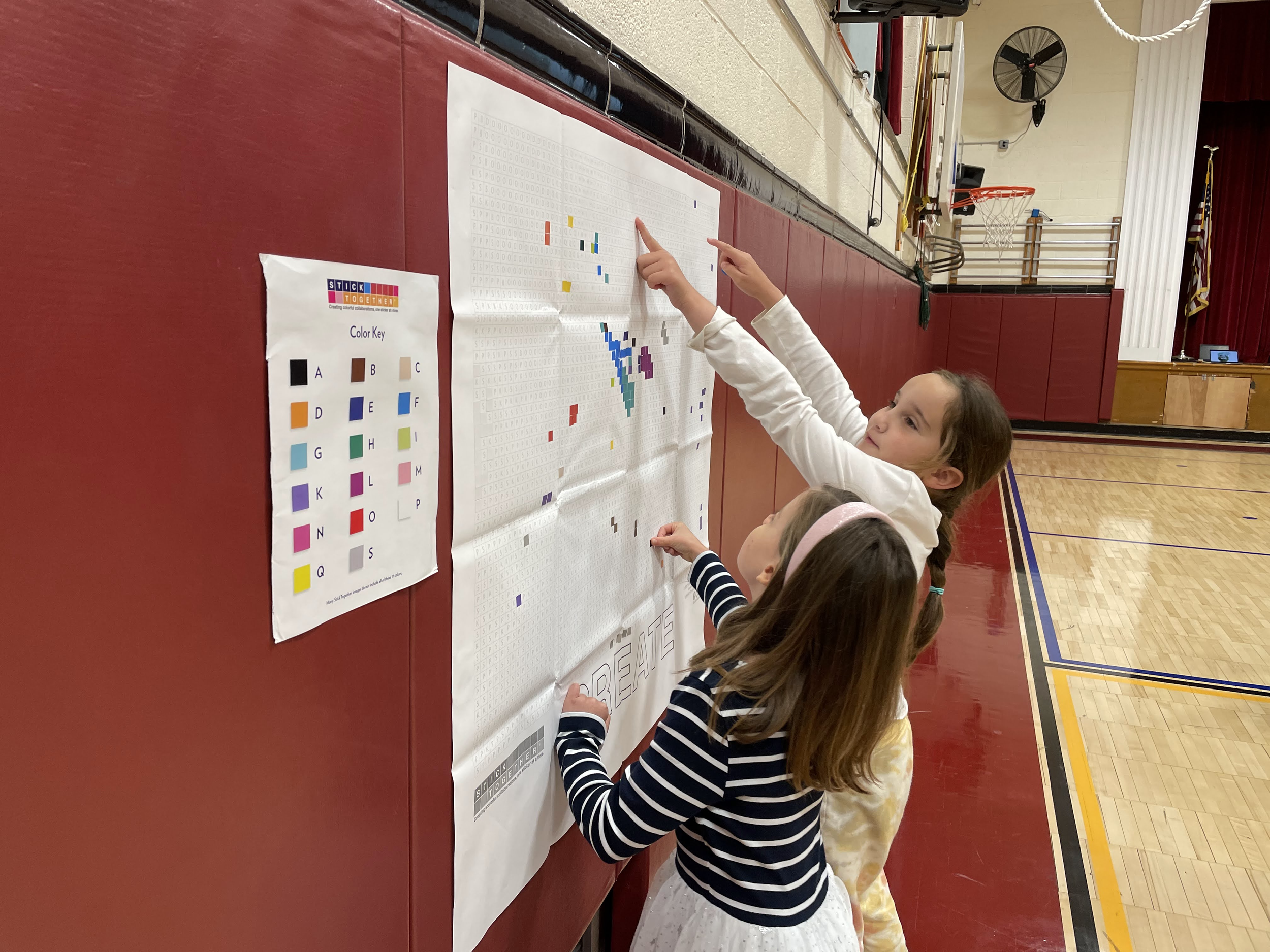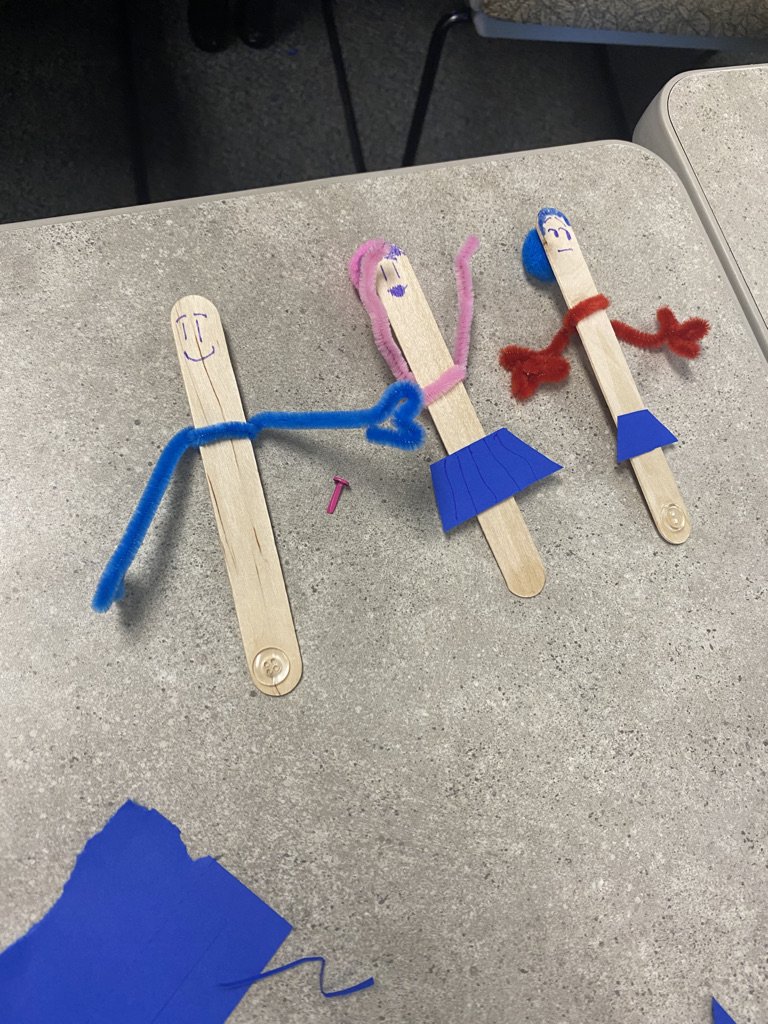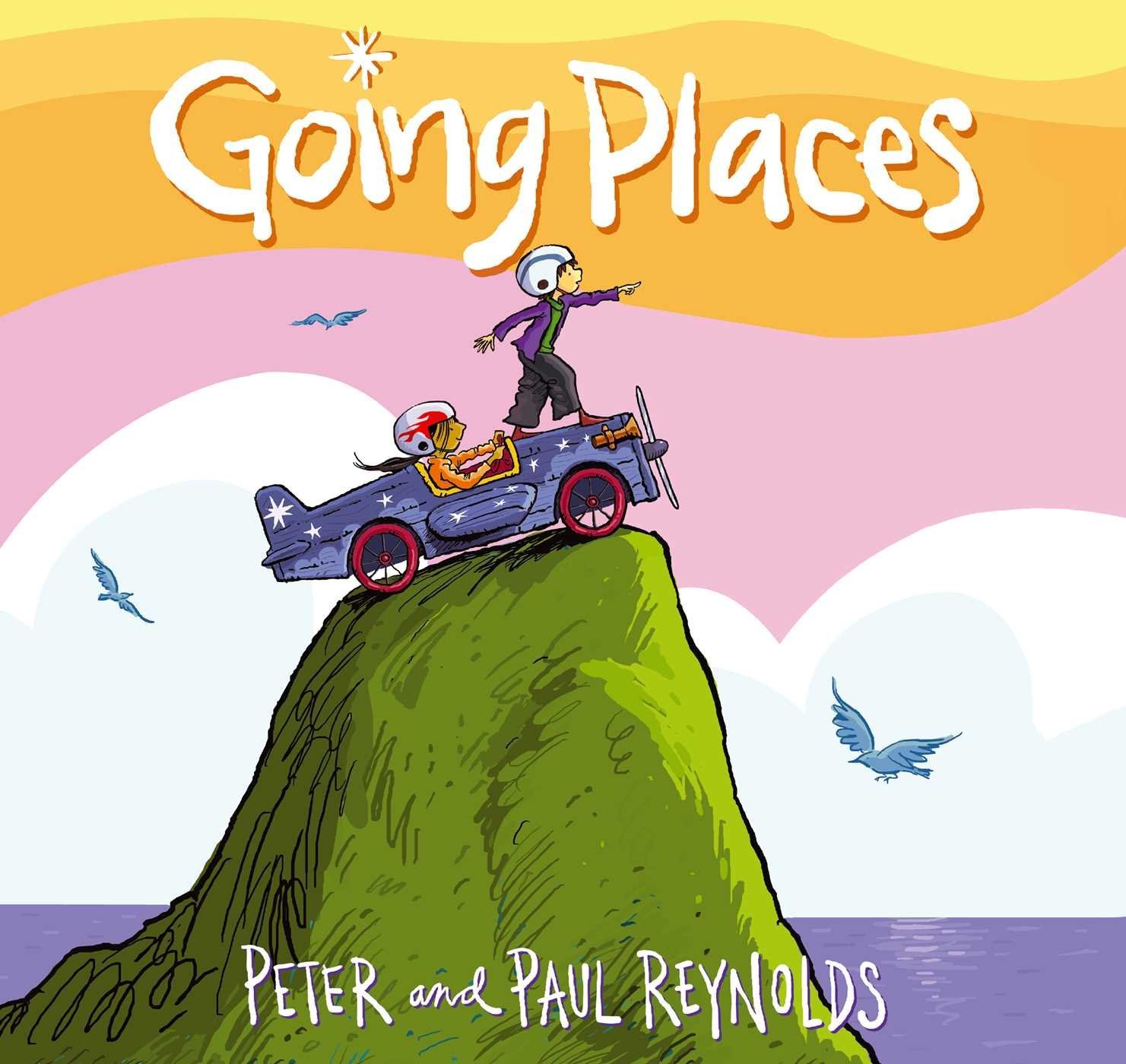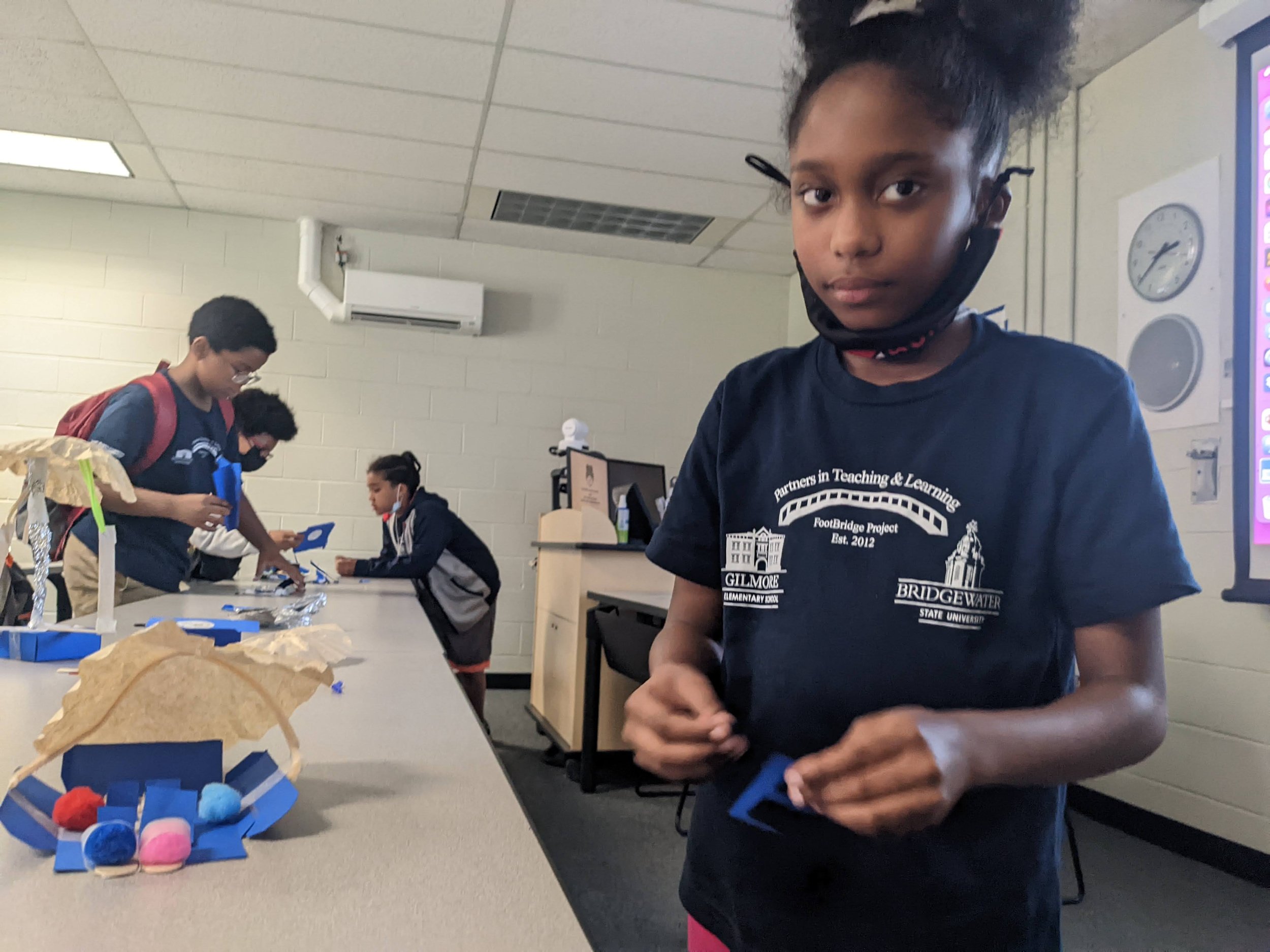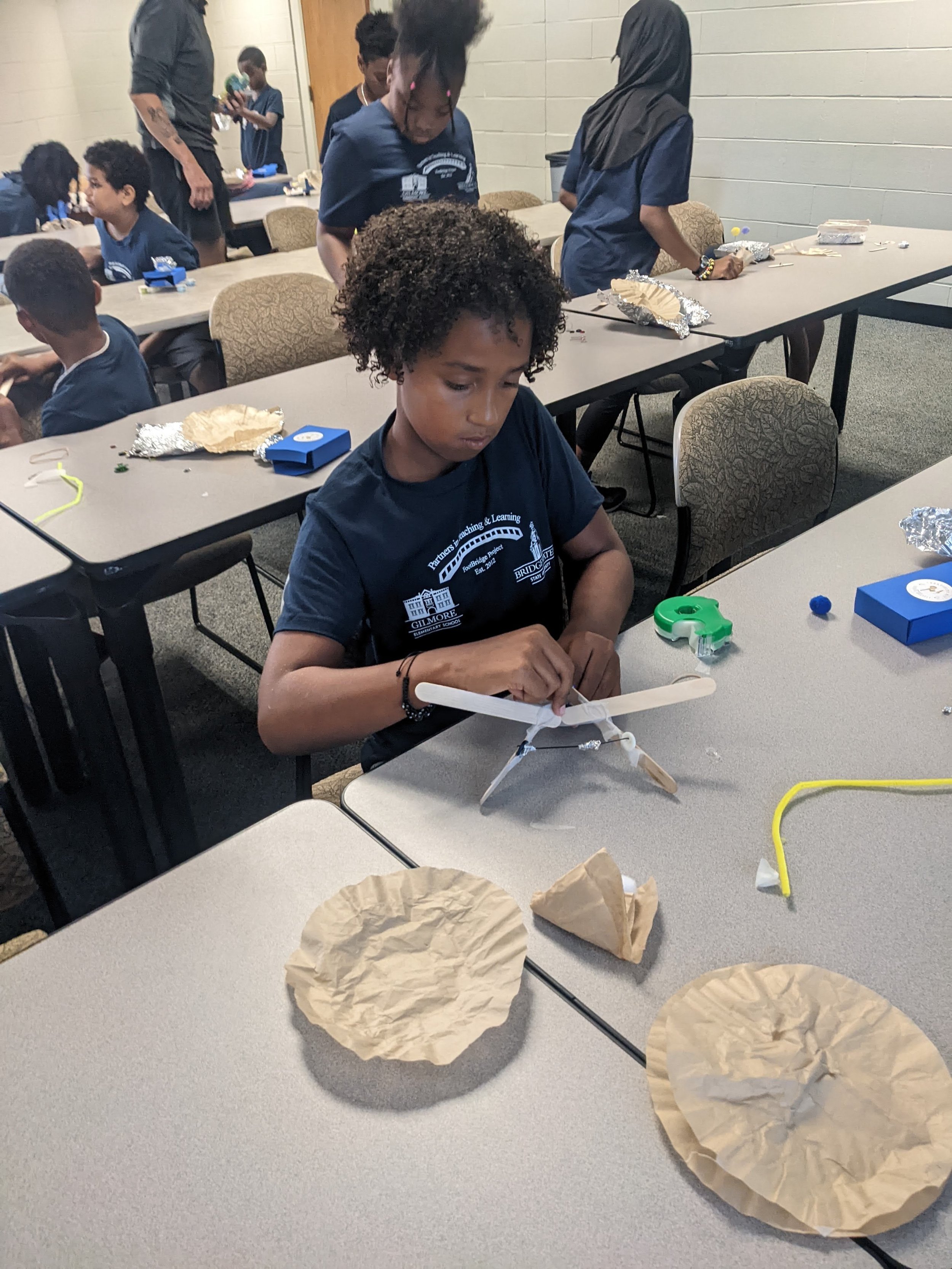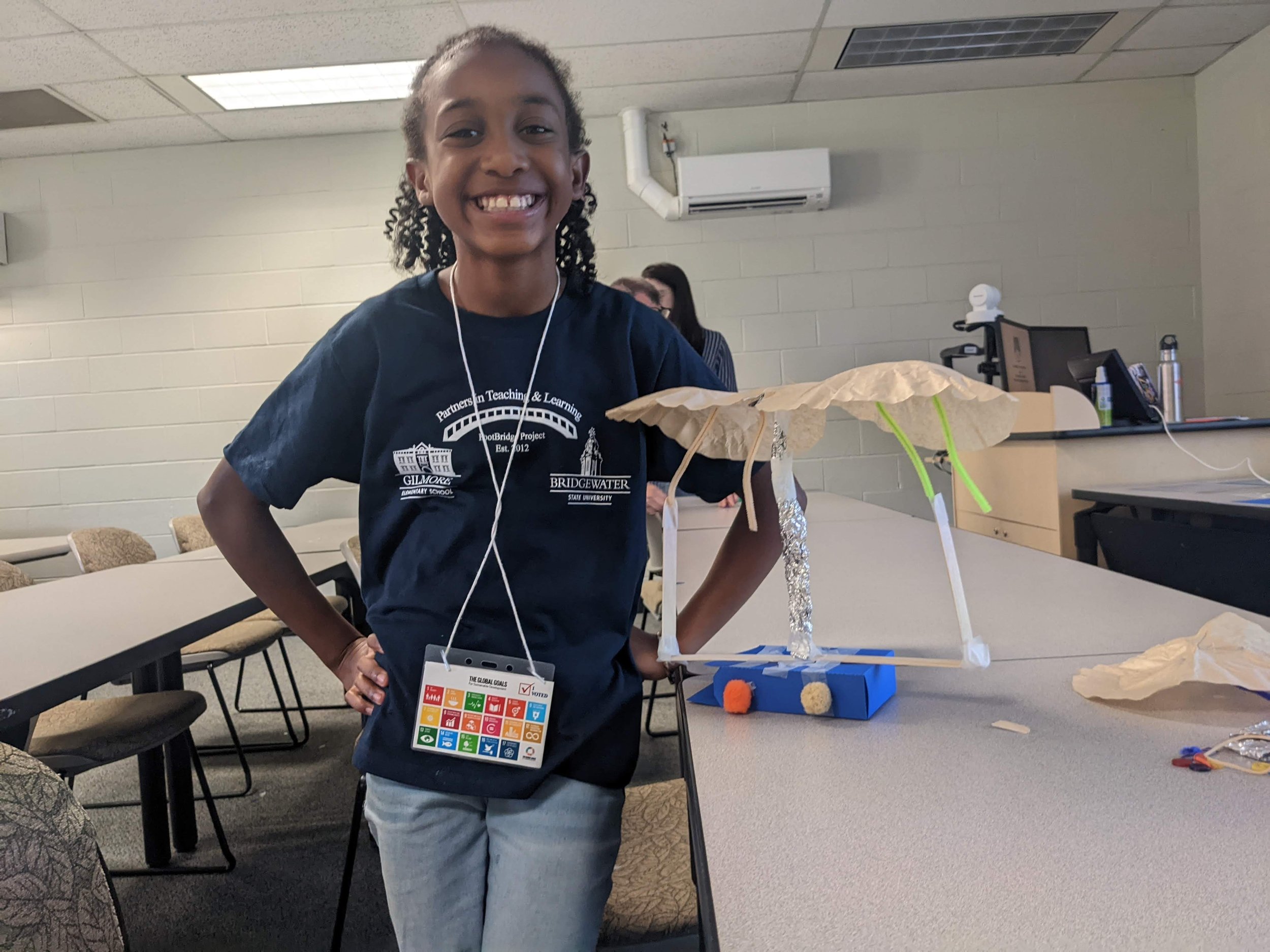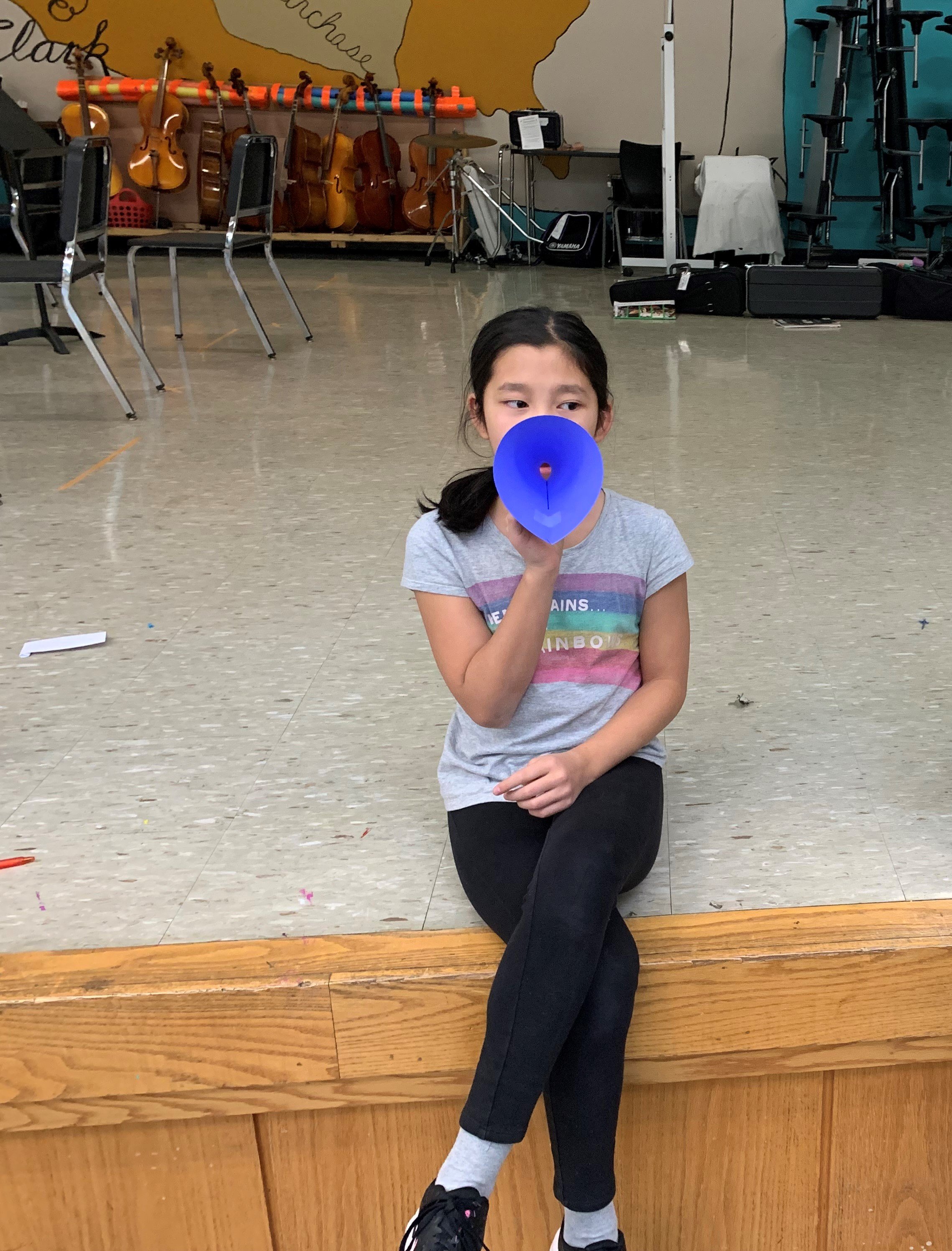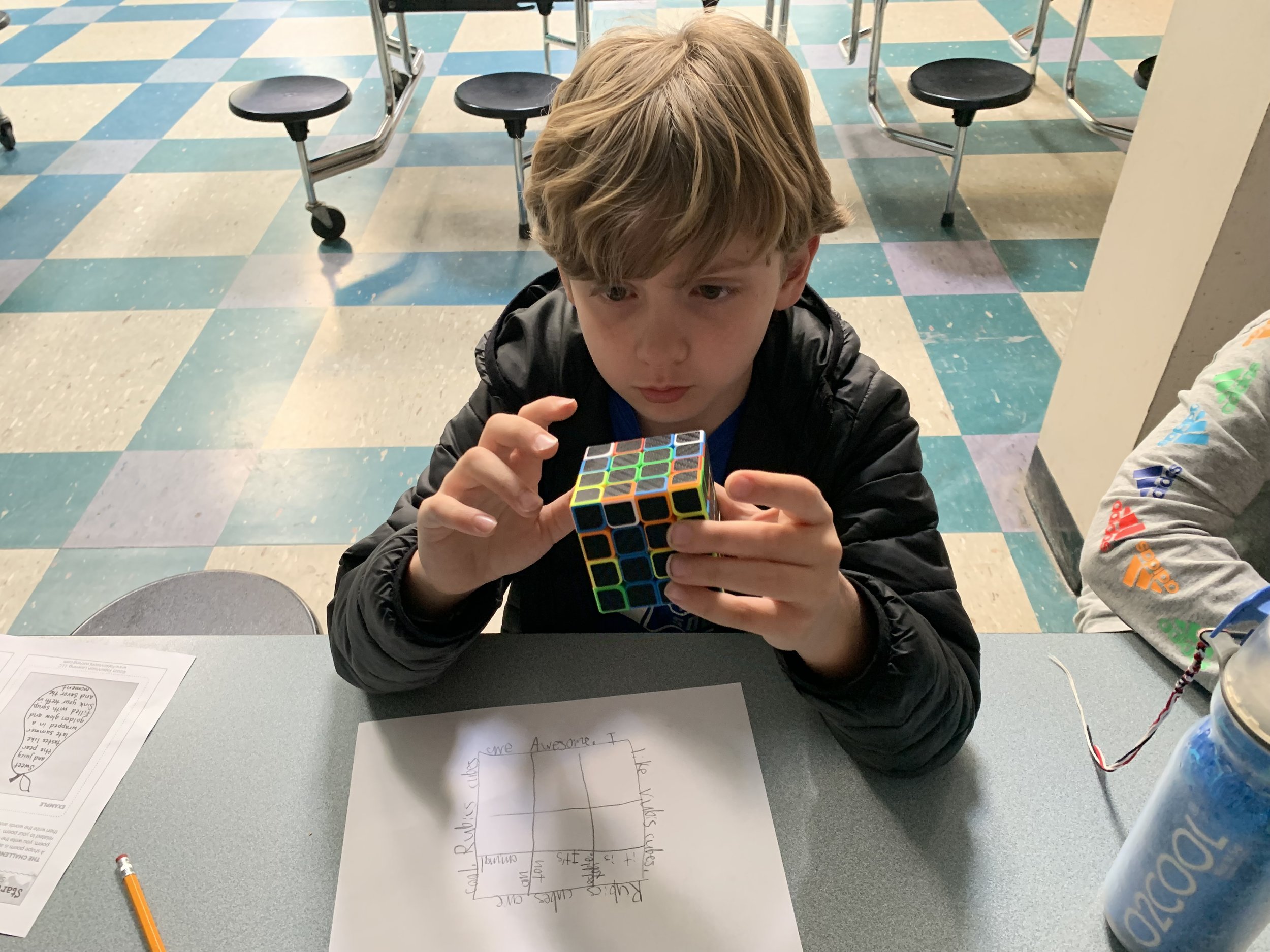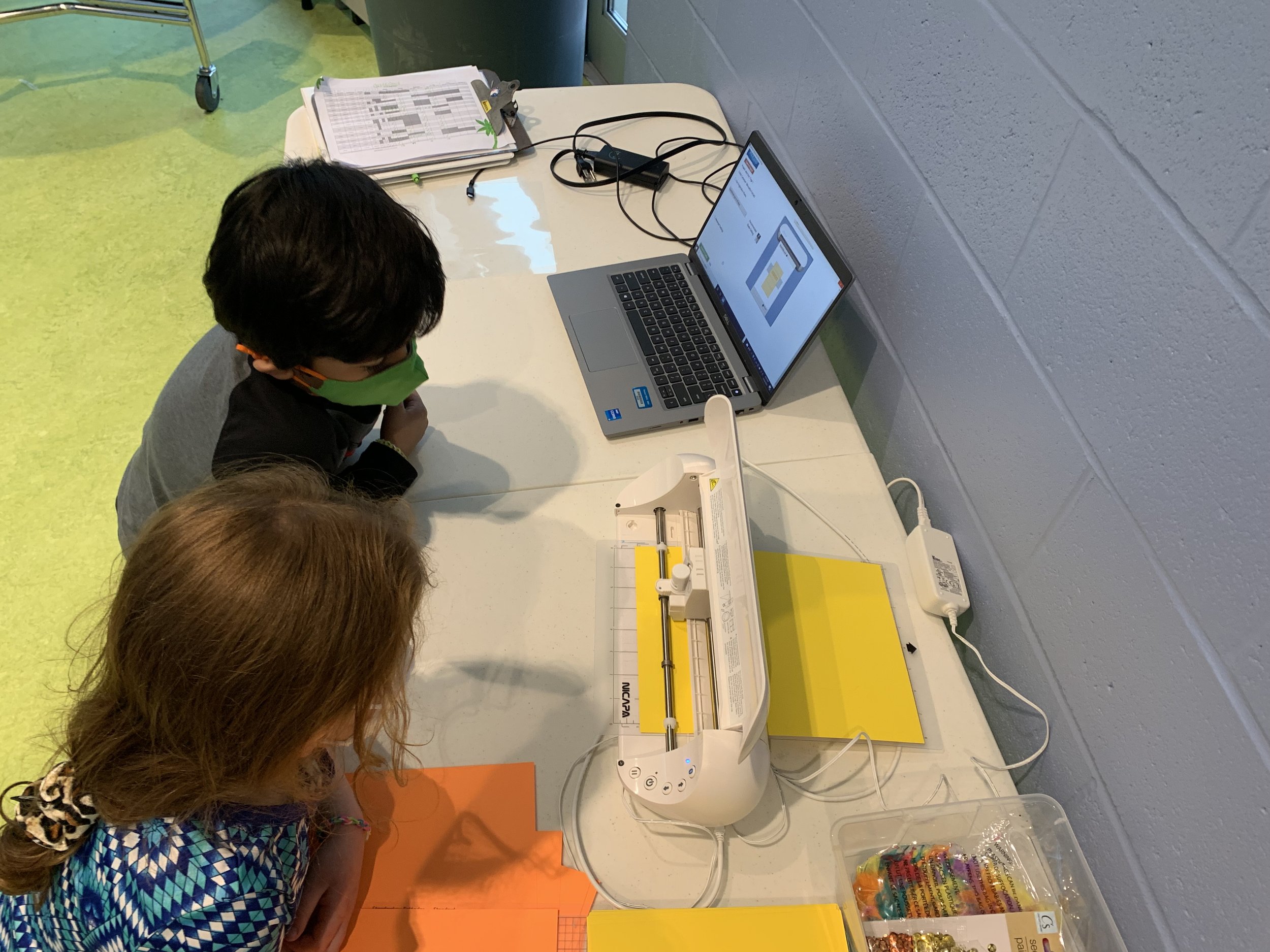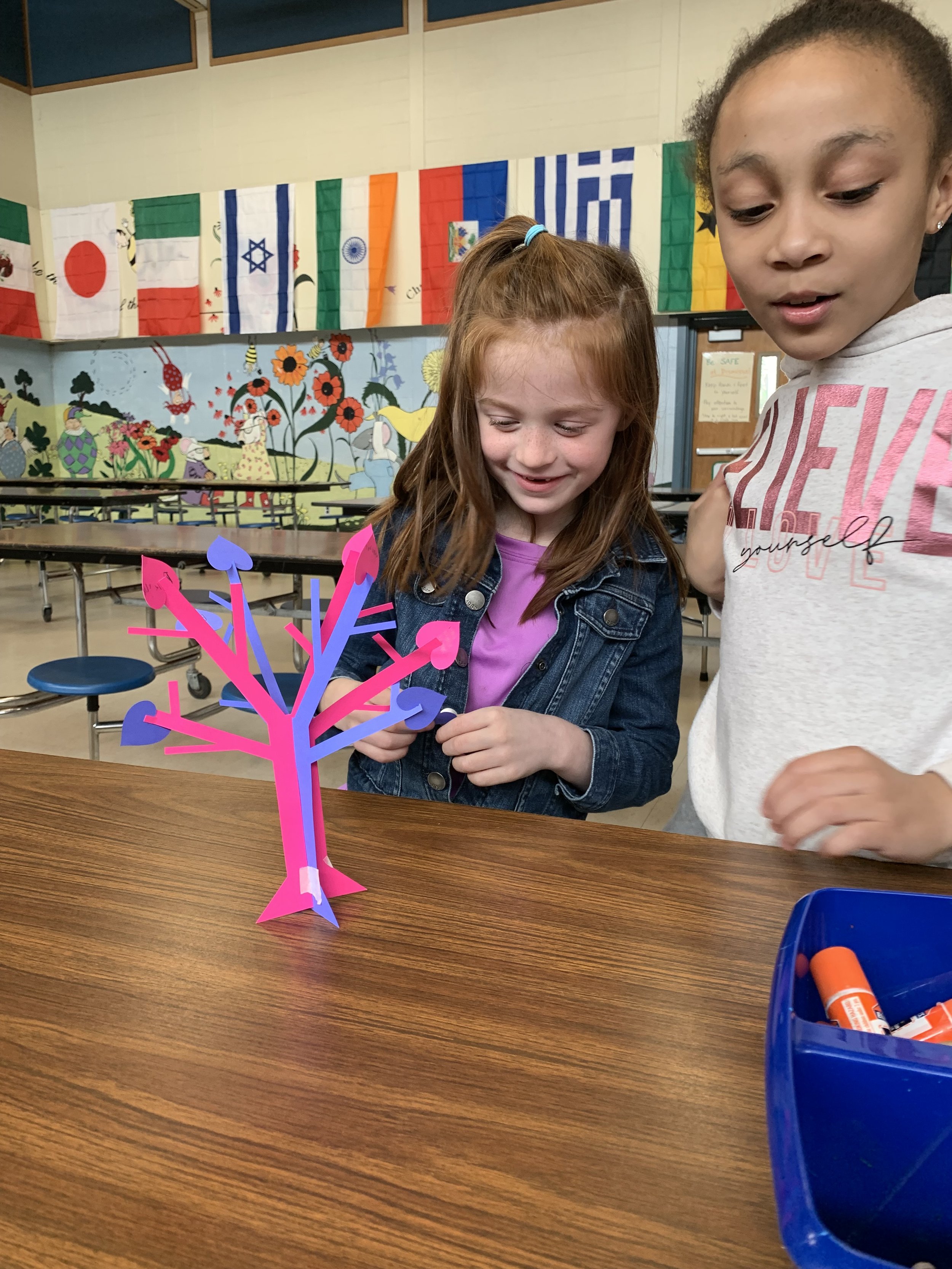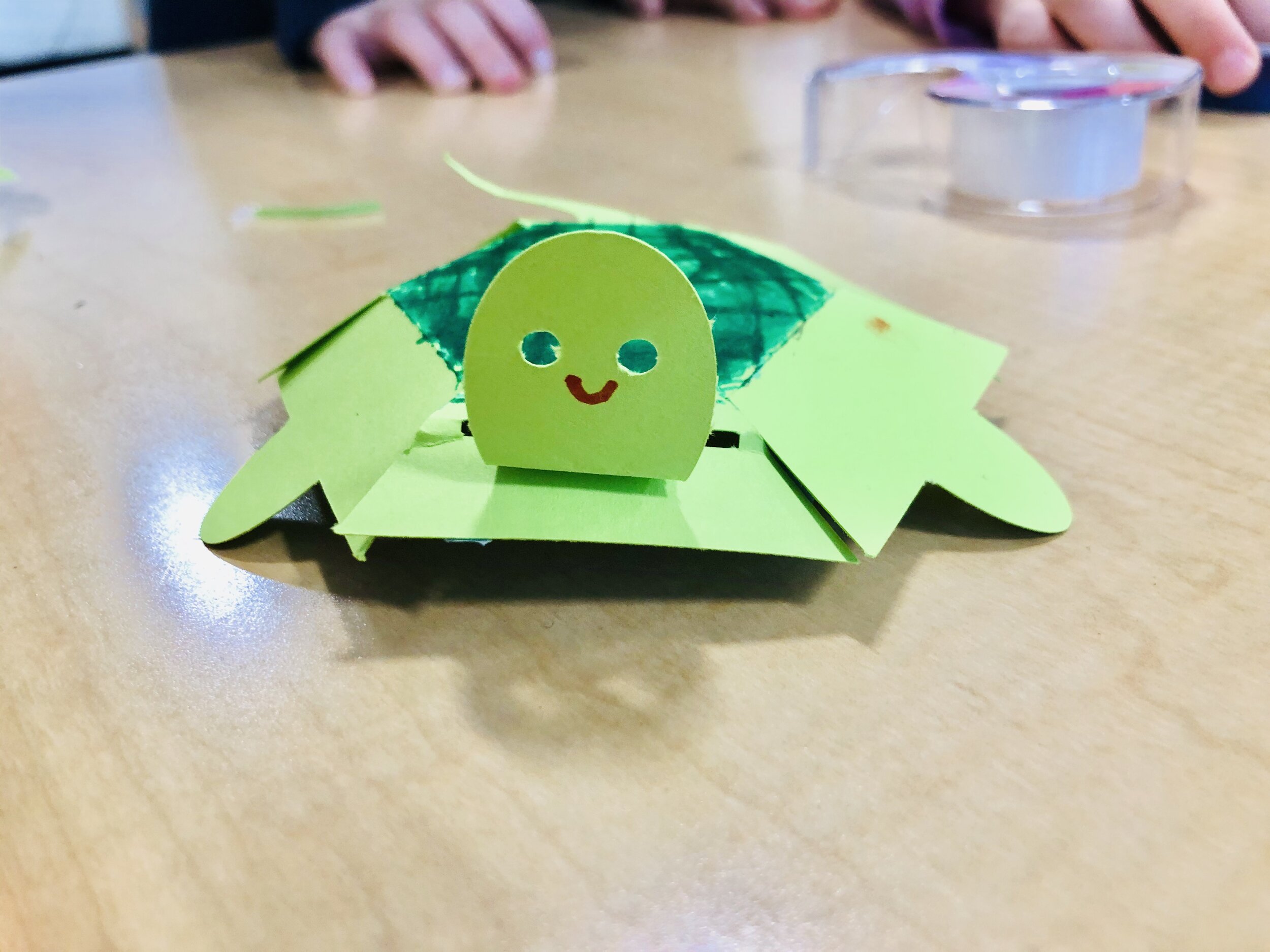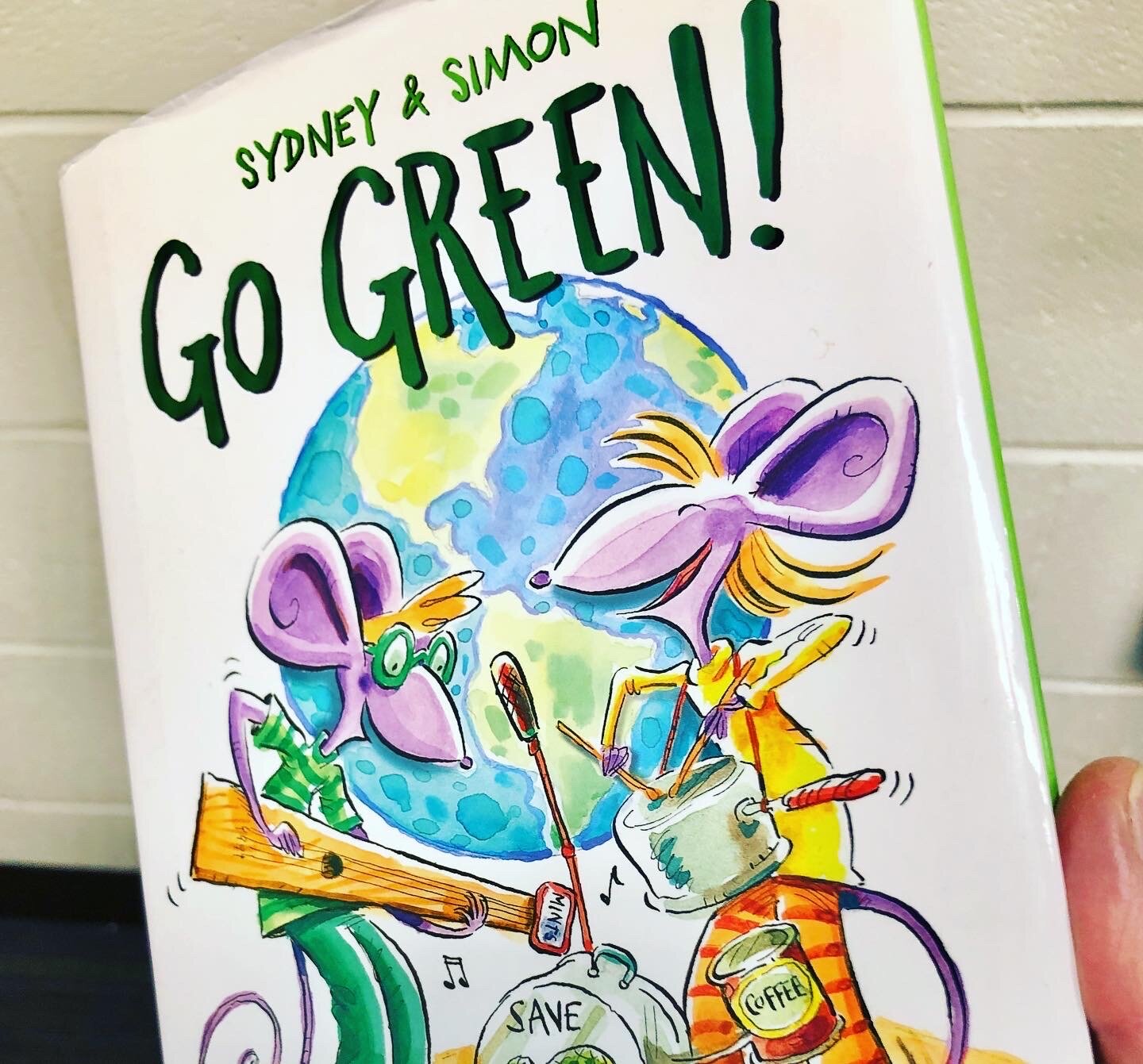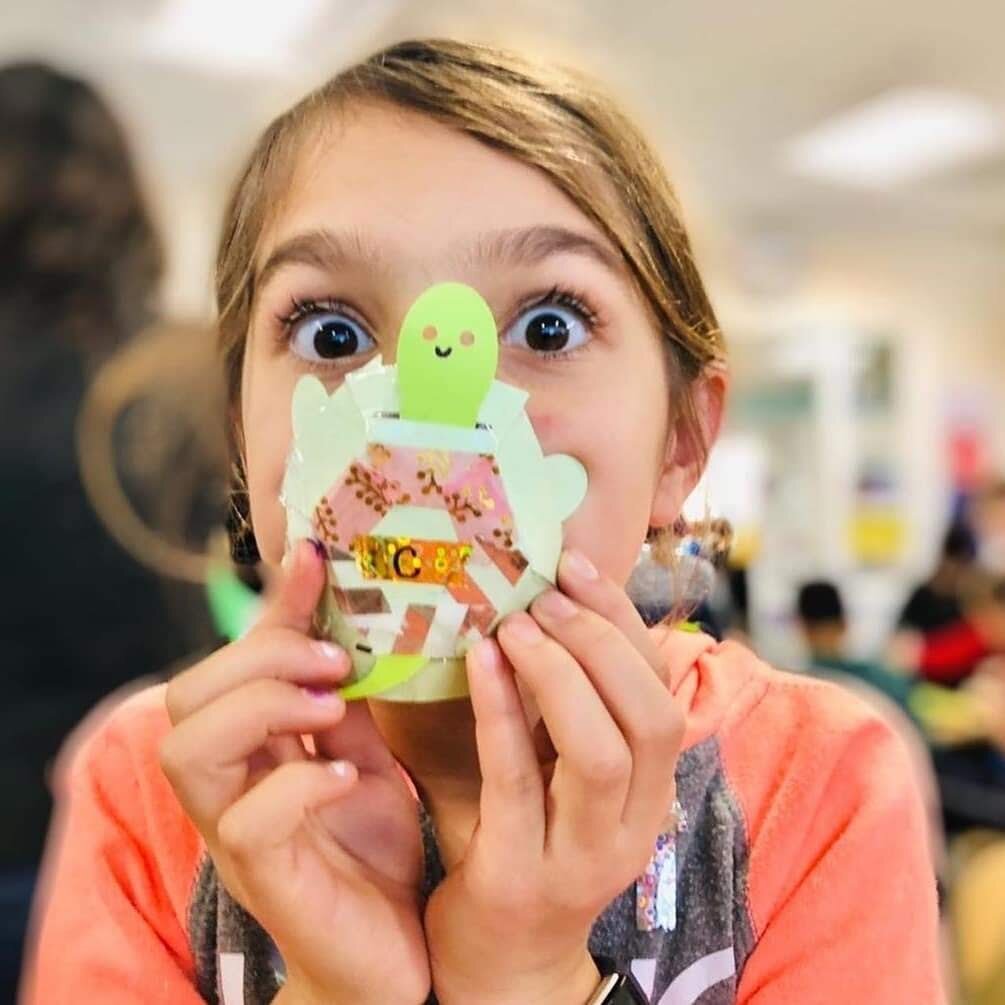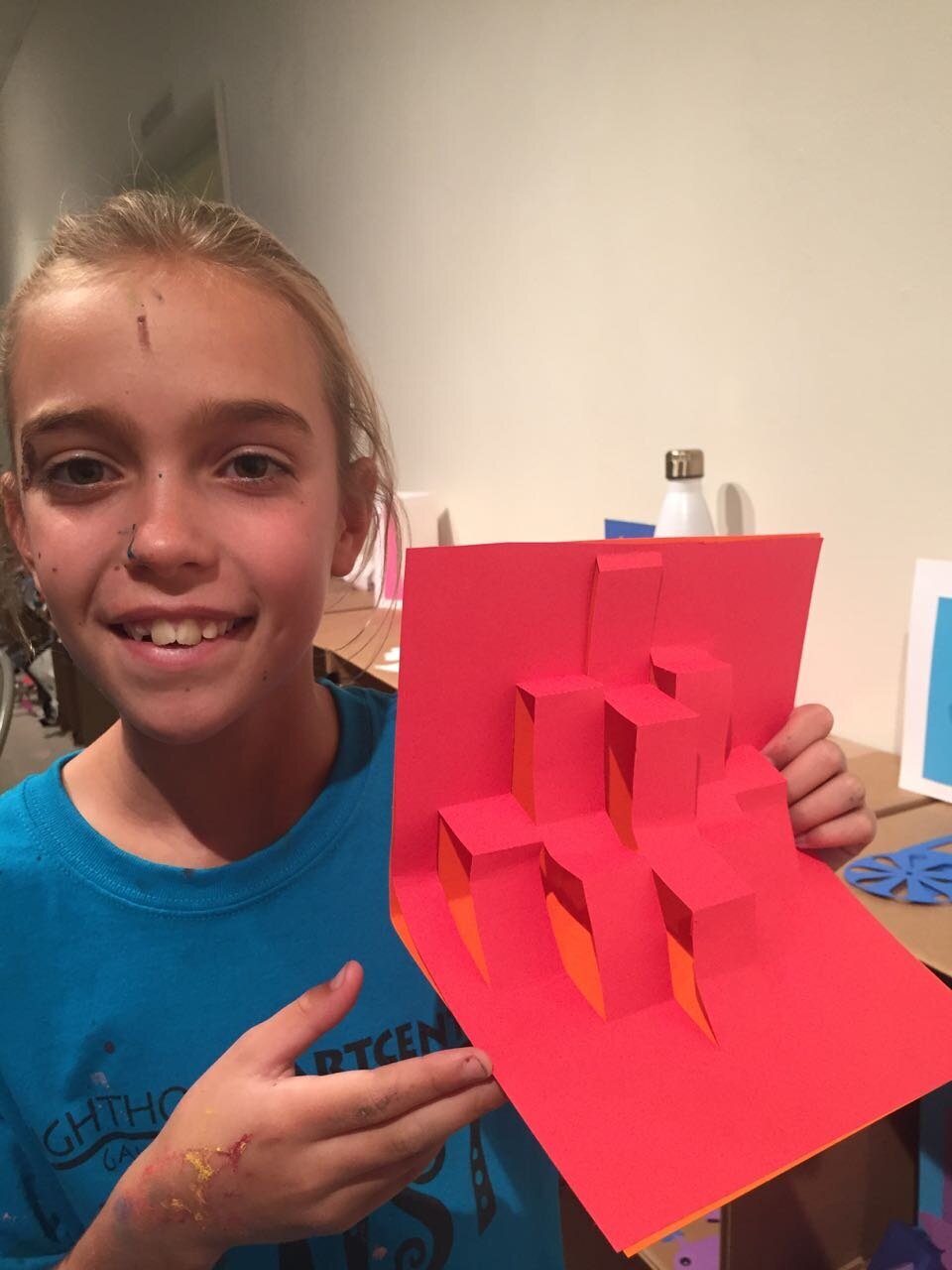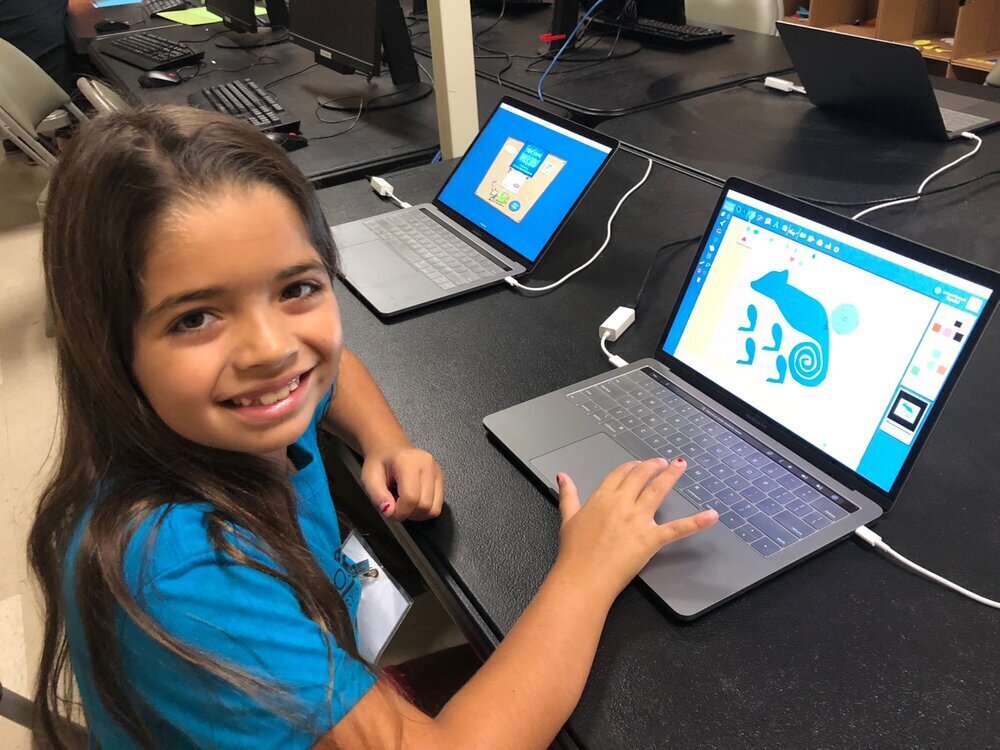FableVision Learning Spotlight Blog
Categories
- Animation-ish 42
- Books 21
- Civics! 2
- Classroom Spotlight 17
- Conferences and Events 20
- Creative Educator 3
- Creativity 25
- Distance Learning 13
- Dot Day 22
- FabClassroom 28
- FabFriday 19
- FabMaker Studio 66
- FabMaker Studio Classroom 13
- FableFive 7
- FableVision Games 3
- Free Educator Resources 36
- HUTCH 1
- Home Activities 5
- In the Classroom 34
- In the News 11
- International Dot Day 23
- Ish 1
- Library 1
- Mapping the World by Heart 7
- Paul Reynolds 10
- Peter H. Reynolds 54
- Professional Development 9
- STEM/STEAM 20
- Storybook Academy 2
- Teacher Spotlight 14
- The Dot 17
- The North Star 2
- Words and Their Stories 1
- Zoombinis 3
FableVision/Reynolds Center Celebrates Creativity at the ED Games Expo
FableVision/Reynolds Center Celebrates Creativity at the ED Games Exp0
From engineering a building that could withstand an alien invasion to rescuing Zoombinis to crafting a hit broadway musical about the national parks to exploring the culture of the Sugpiaq tribe in Alaska, the 9th annual ED Games Expo in DC was fueled by creativity and FableVision Games.
FableVisionaries Paul Reynolds, Andrea Calvin, Mary Johnston, Nadya Karpova, Snow Dong and Elizabeth Rowe from TERC worked with students from the DC area as they explored the different learning games on Wednesday, Sept. 20 at the John F. Kennedy Center for the Performing Arts REACH Center.
The ED Games Expo is a showcase of game-changing education technology innovations developed through programs at the Institute of Education Sciences, the U.S. Department of Education, and across government. FableVision/The Reynolds Center was invited to highlight several of their tools including: Zoombinis, FabMaker Studio, Civics: An American Musical and Nunaka.
At the event students got hands-on with the tools in the larger expo where specific classes were invited to join a one hour master class either using FabMaker Studio or Civics.
The following day, FableVision/Reynolds Center co-founder and CEO Paul Reynolds and vice president Andrea Calvin shared about FabMaker Studio at ScIC13: Science is Cool 13 UnConference. You can check out the replay here.
FableVision Learning Launches After-School SEL/STEM Program with Norwood Public Schools
It may have started as a simple purchase of The Dot by Peter H. Reynolds and a stop to his bookstore The Blue Bunny in Dedham square, but Debbie Holzendorf, director of the Norwood Public Schools Extended Day Services, saw something more.
A few phone calls and meetings later, FableVision Learning officially launched the after-school program with an educator PD on Saturday, Feb. 4. During this hands-on session, 40-ish teachers explored this unique after-school program that has been designed for K-5 students across Norwood’s six elementary schools: Balch, Callahan, Cleveland, Oldham, Prescott, and Willett (Kindergarten), Middle School and The Savage Center for school vacation programming.
This custom program activates the works of New York Times Best-Selling author and illustrator Peter H. Reynolds through SEL/STEM projects. Through this program, students will engage with creative tools, including Animation-ish (a leveled animation program) and FabMaker Studio (a 3-D design and engineering tool) as they practice the skills of communication, collaboration, critical thinking and creativity.
As a culminating event for this school year, Norwood Public Schools Extended Day Services will host a creativity celebration with Peter H. Reynolds. During this time students and families will meet the author and be able to share projects from the after-school program.
FableVision Learning partners with school districts across the country to develop custom programs. If you have any questions send us an email at info@fablevisionlearning.com.
Somerville Elementary School Creates Bravely With FableVision Learning
Outside the sky was gray and rainy, but inside Somerville Elementary School in New Jersey there were rays of laughter, beams of creativity, and of course, lots of lots of dots! The FableVision Learning team journeyed to Ridgewood New Jersey to run a creativity teacher PD session, a family night, a virtual author visit with Peter H. Reynolds and student workshops on writing and animation.
With a focus on creativity and divergent thinking, Sara Smith, FableVision Learning’s director of creative education, led teachers through exercises in thinking outside the box. The school has also implemented Start With a Story, a program designed to activate books by Peter H. Reynolds as students explore STEM, SEL, and digital storytelling.
Following the teacher PD, the gymnasium was transformed into Creativity Central with a selfie station, collaborative mural, scavenger hunt and Peter H. Reynolds Film Festival. Jumping from spot to spot, kids did ishful drawings of each other, created book plates and solved challenges for a special prize.
The FableFun continued the next day with a school-wide virtual assembly with Peter H. Reynolds followed by workshops with students around animation and storybook writing. Every student ended the day encouraged to Create Bravely.
If you’d like to bring exciting programs like this one to your school or district, contact us at info@fablevisionlearning.com.
New Hampshire's SAU 6 Celebrates Dot Week With FableVision Learning
I Am Brave! This special message was celebrated by every student in Claremont/Unity New Hampshire during the FableVision Learning week of creativity that launched with the Creatrilogy Family Night and continued during the week with a coding activity at each elementary school.
I Am Brave!
This special message was celebrated by every student in Claremont/Unity New Hampshire during the FableVision Learning week of creativity that launched with the Creatrilogy Family Night and continued during the week with a coding activity at each elementary school.
To activate the district’s goal of student growth, the team at FableVision Learning helped SAU #6 kick-off the year with energy and joy through a hands-on student activity to remind them that they are brave and they can do hard things. By creating and deciphering binary code necklaces, students carried the important message of bravery with them around their necks.

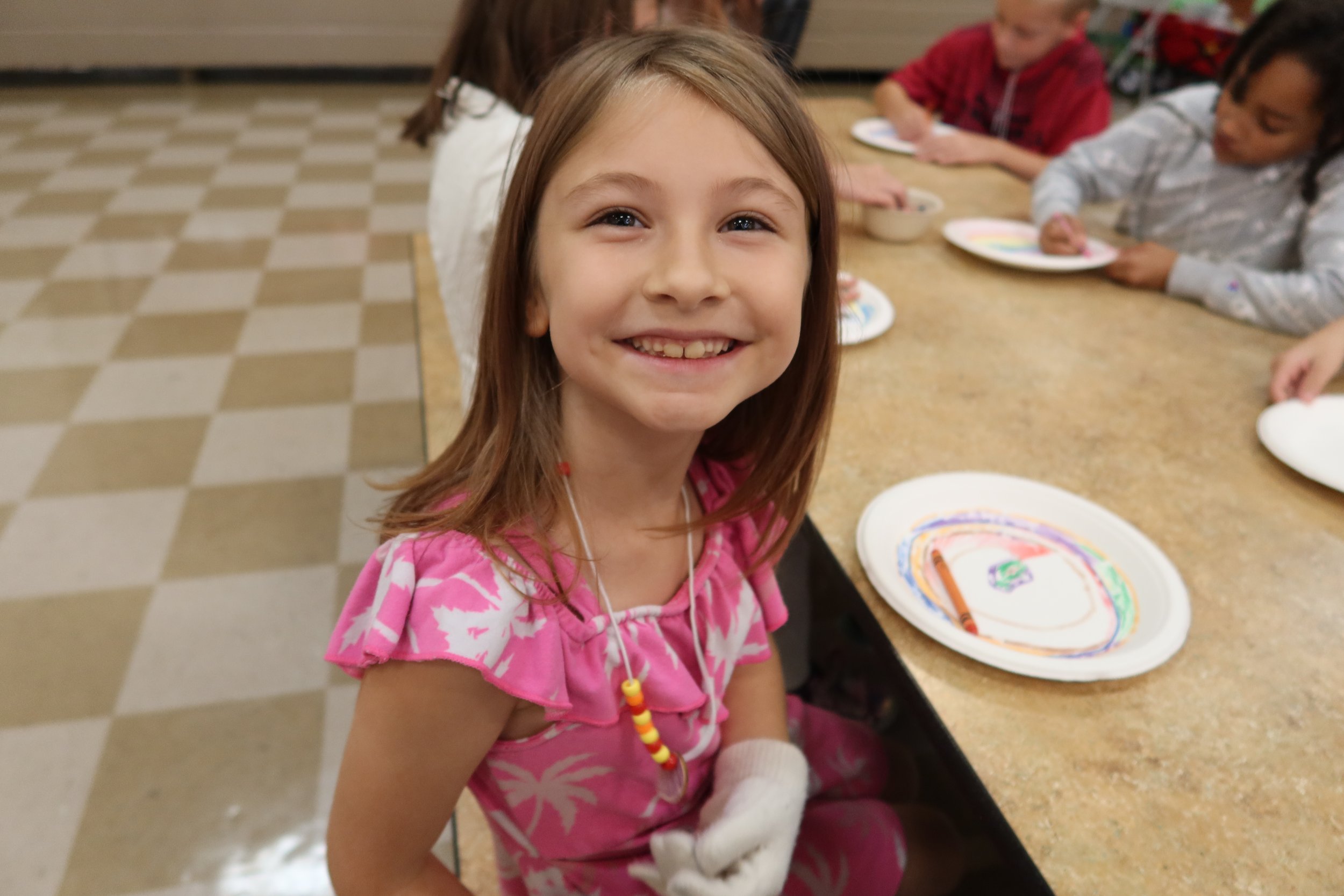
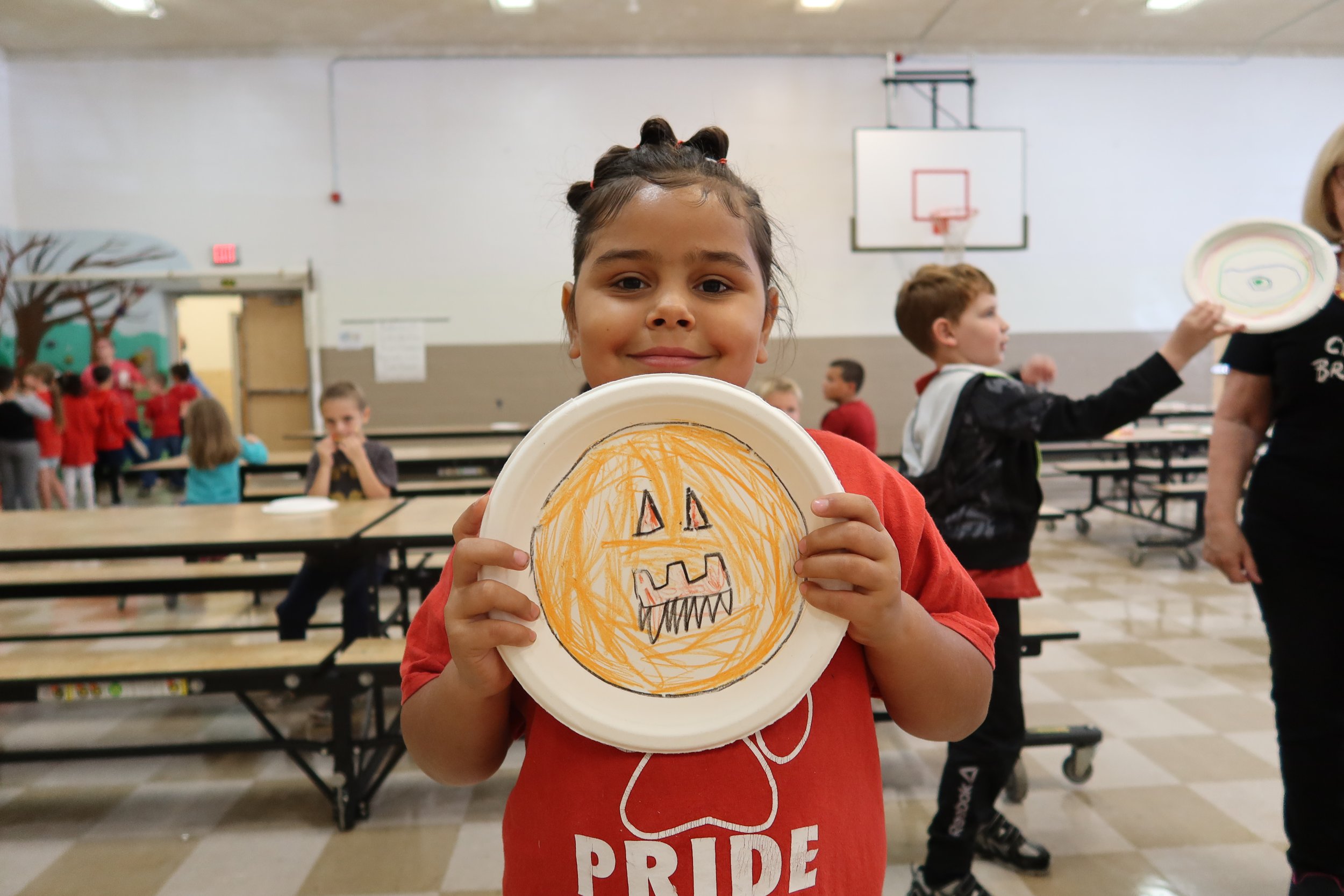
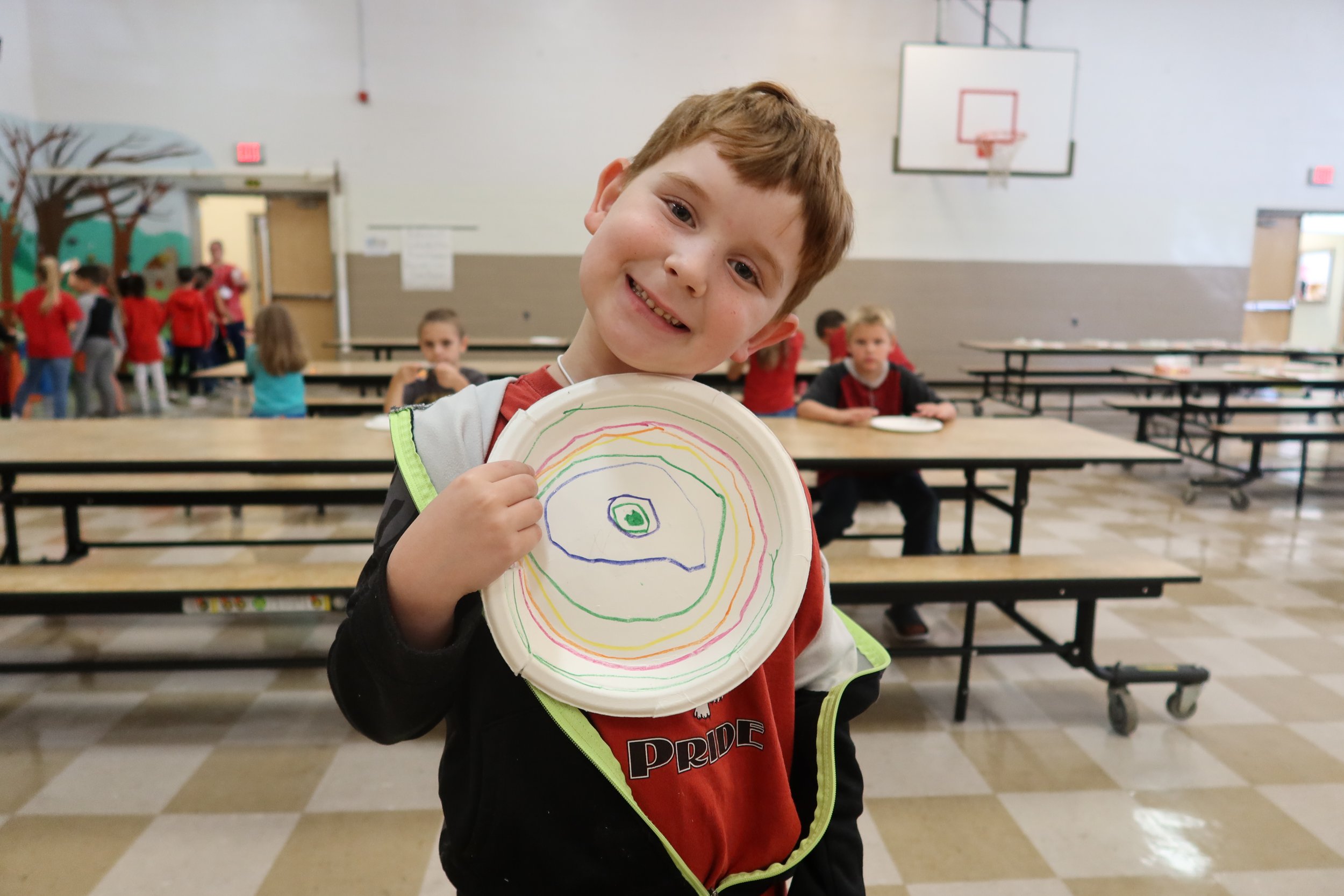
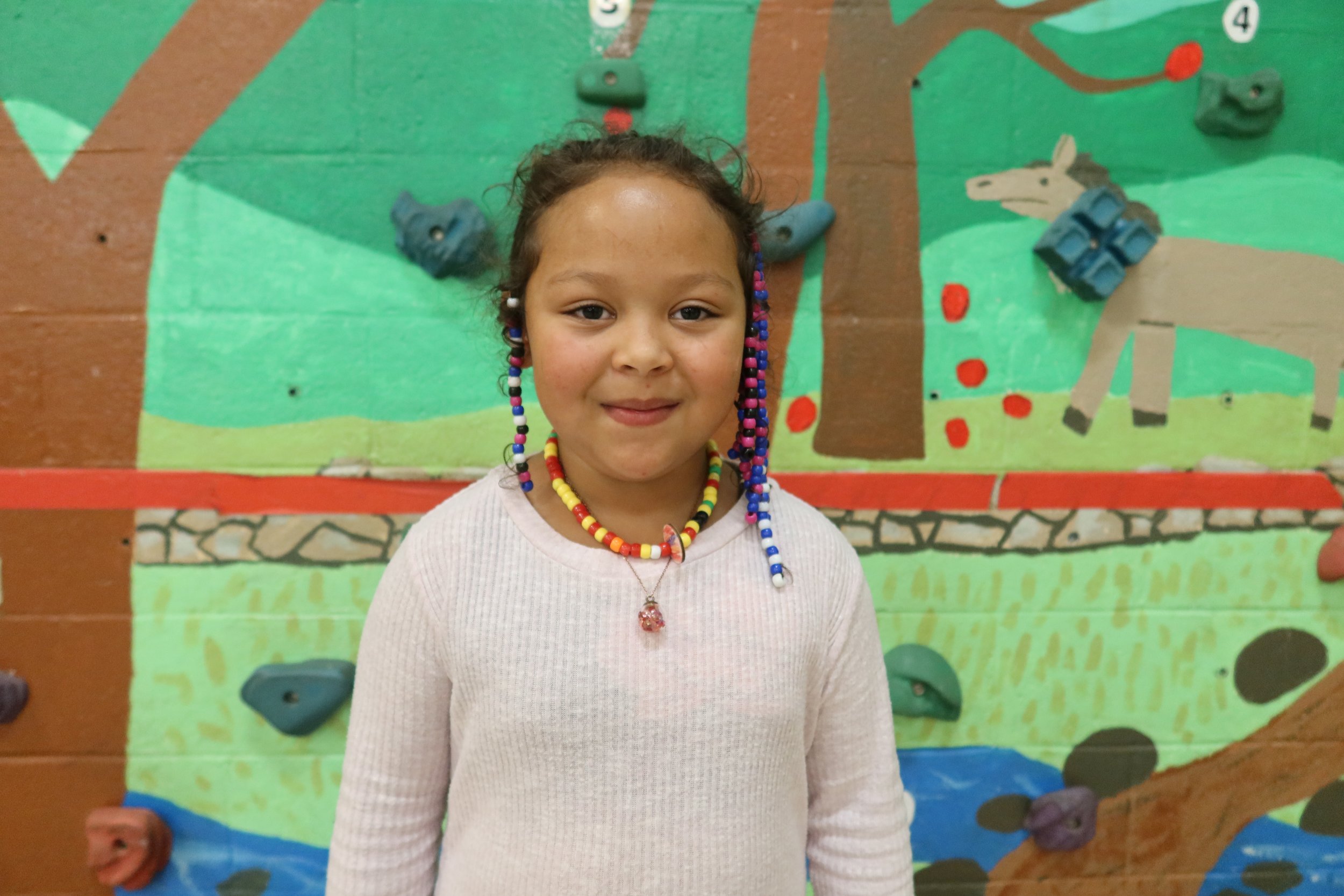
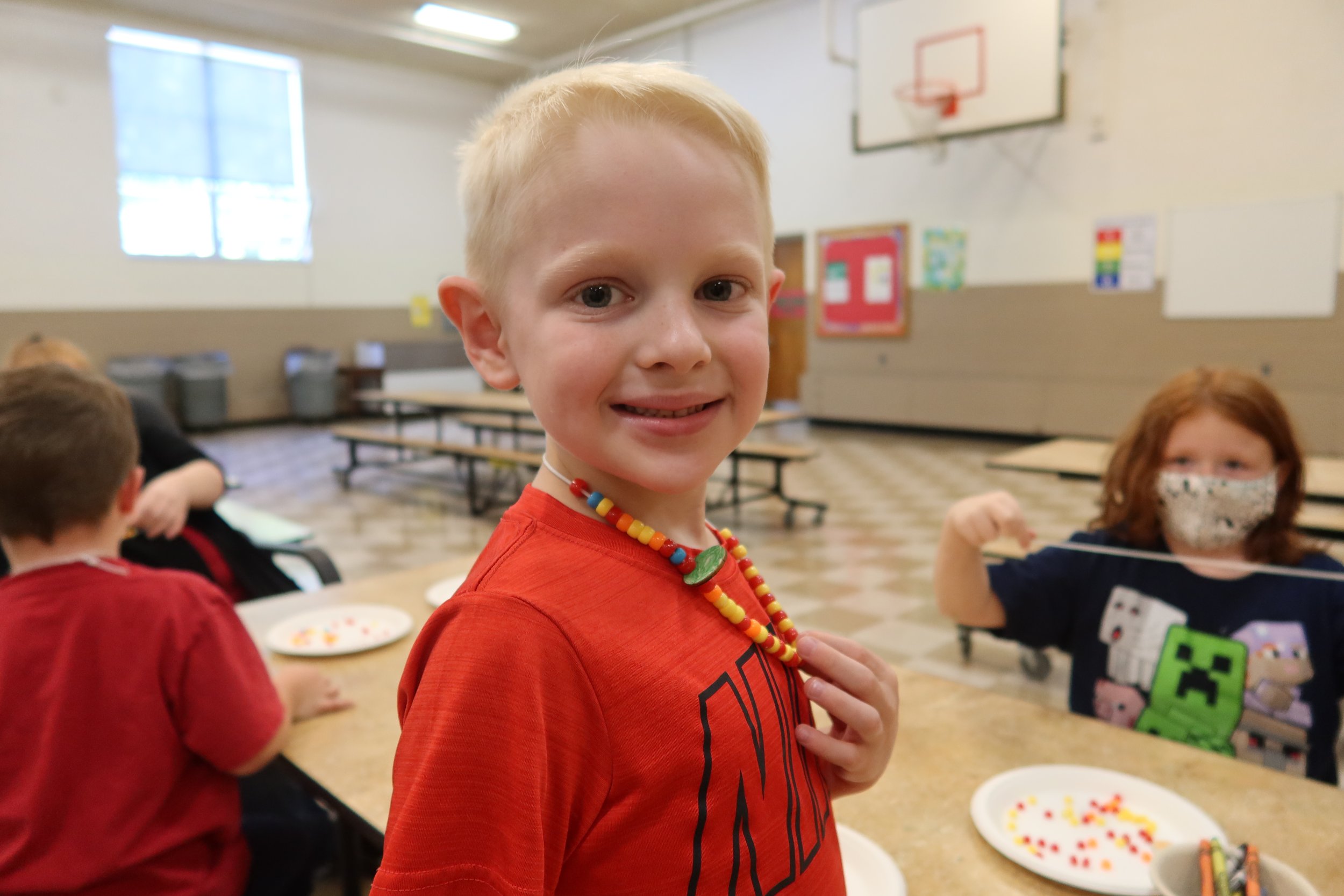

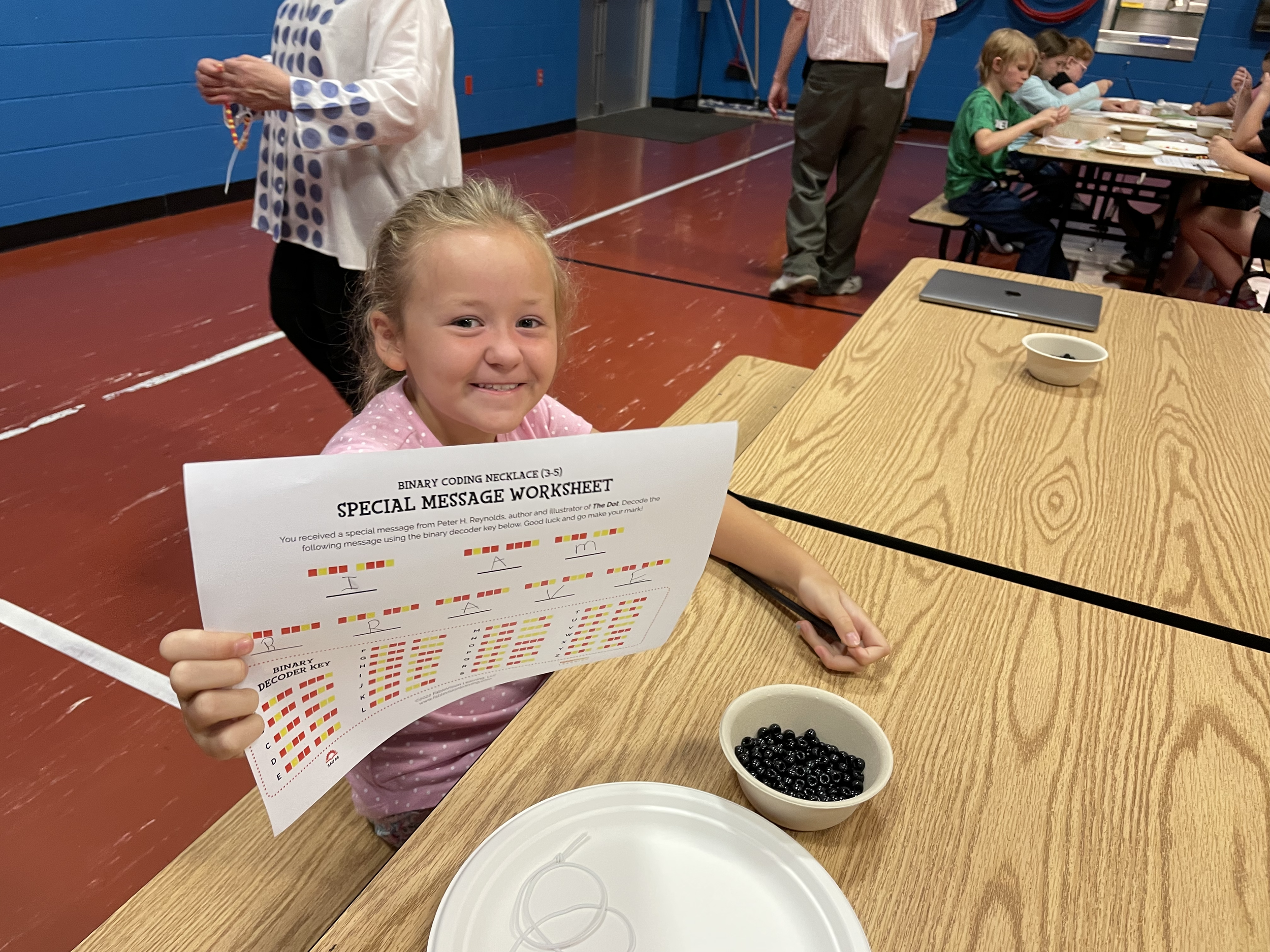
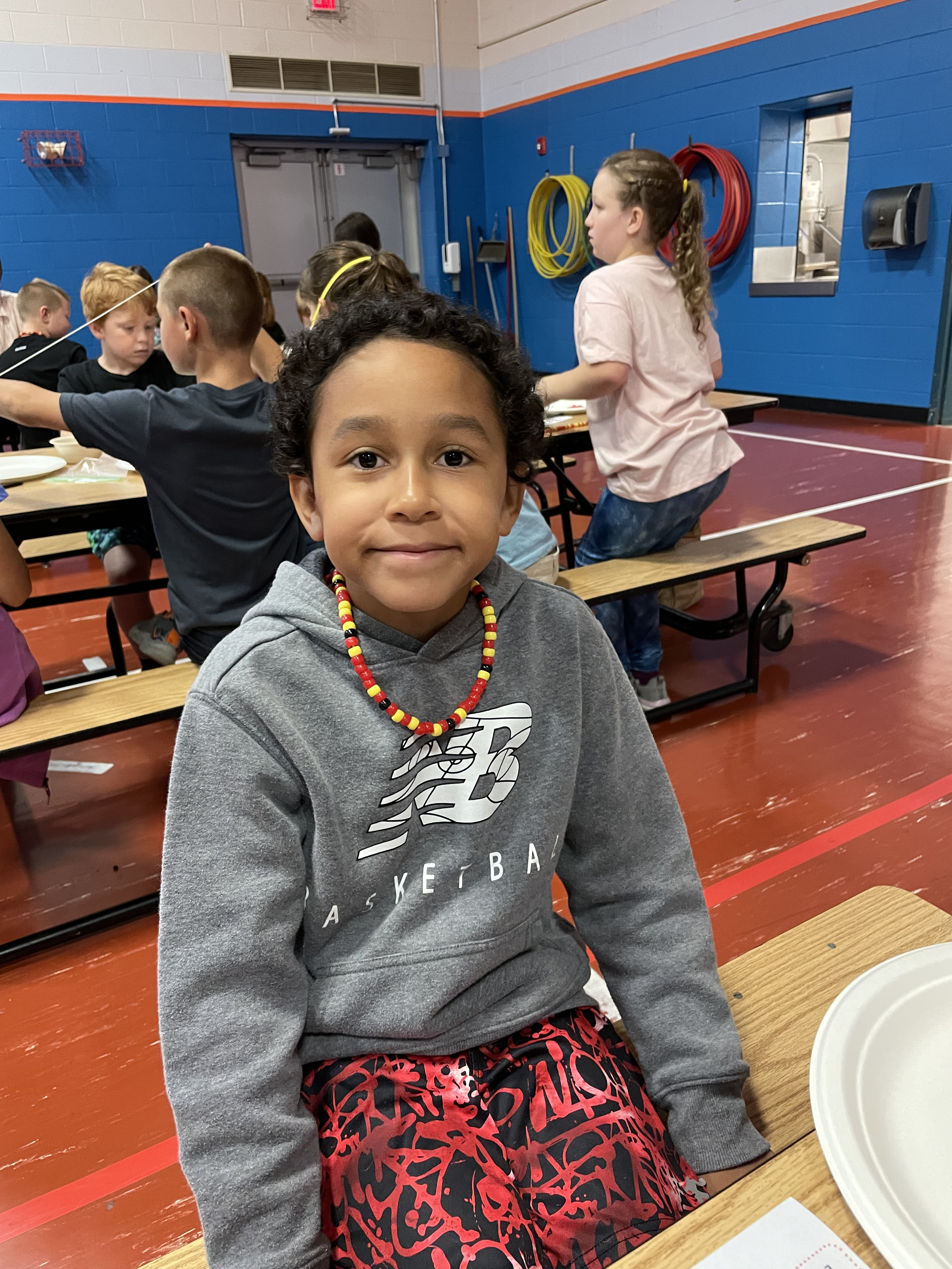
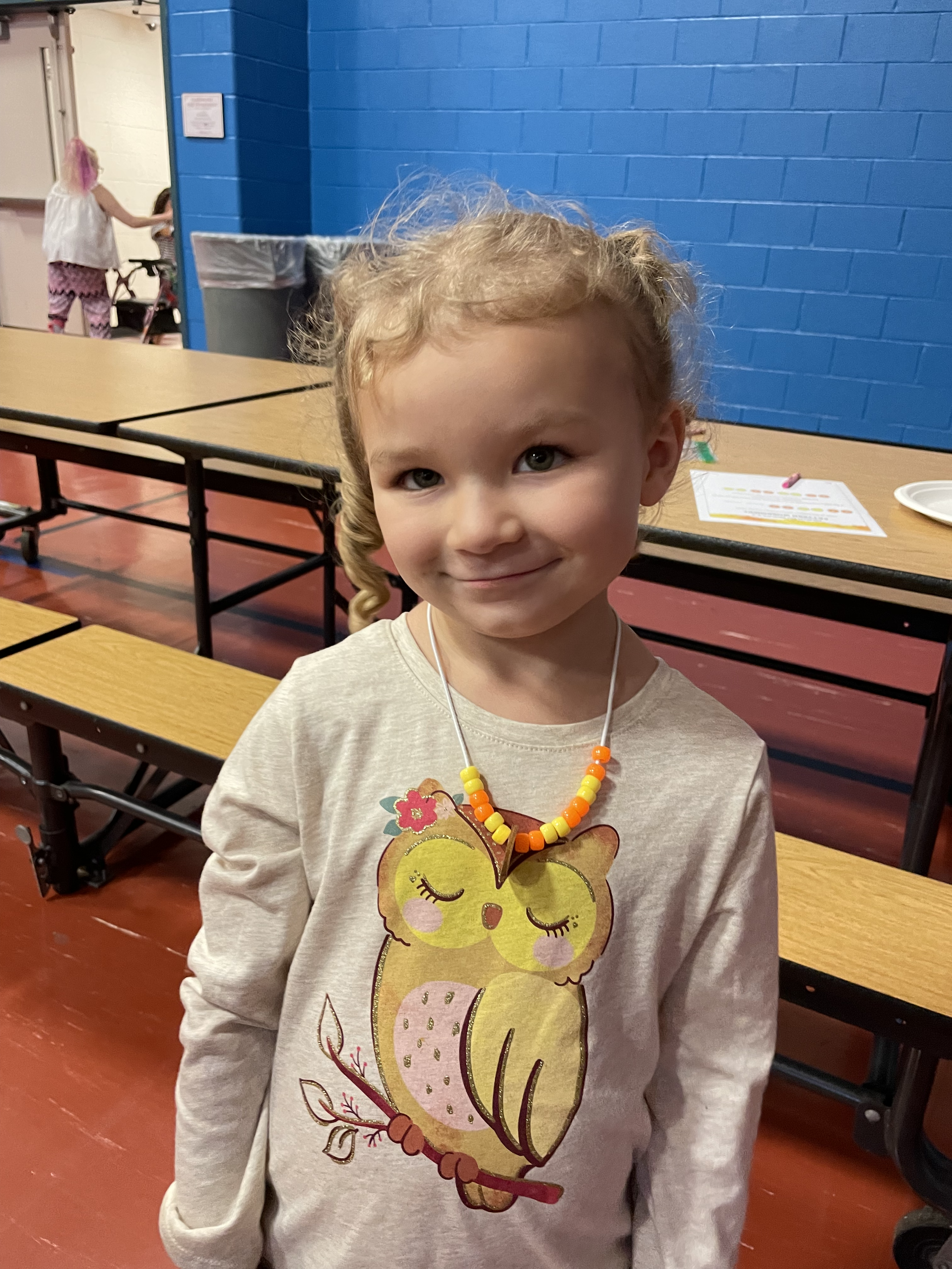
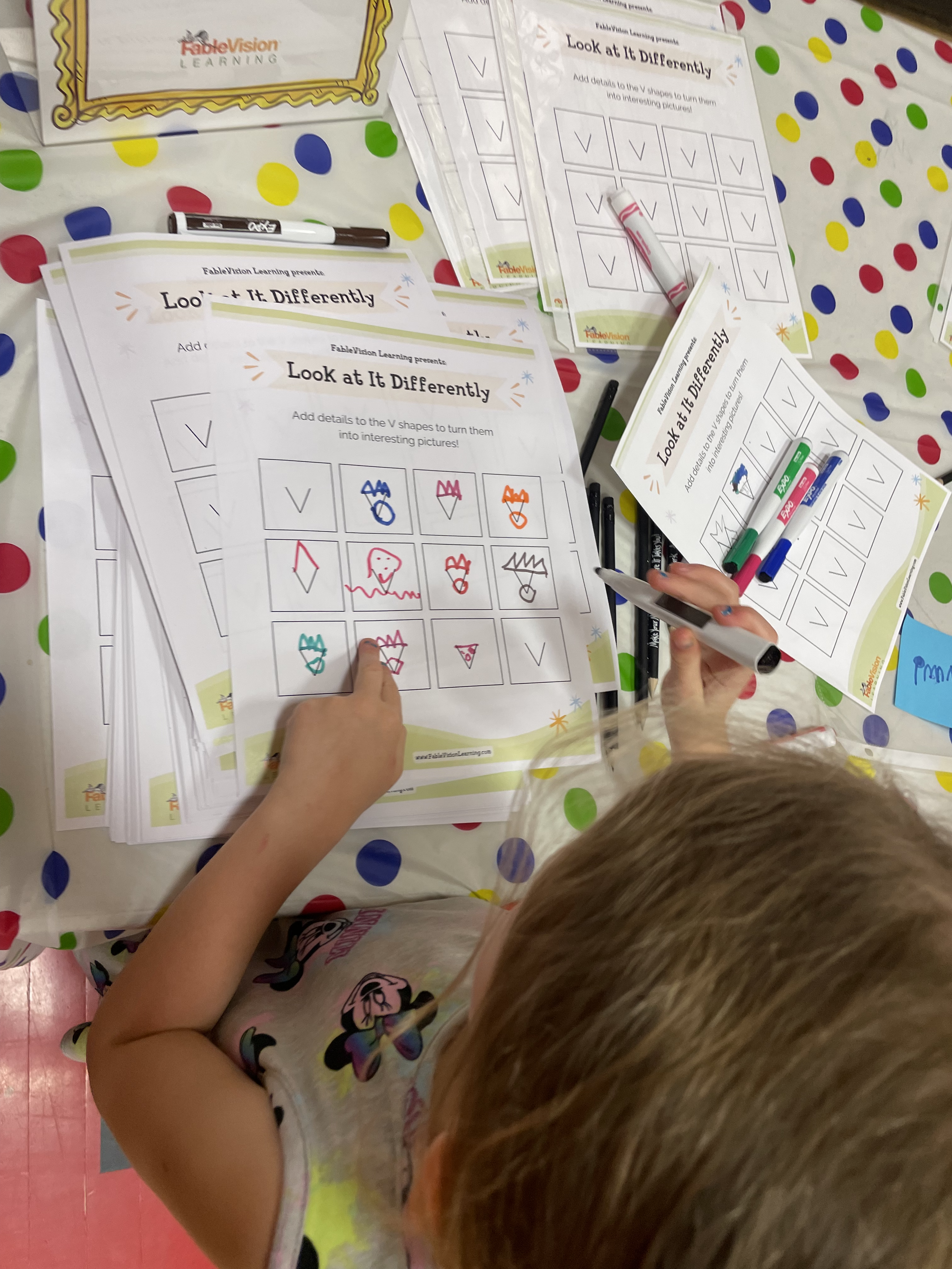
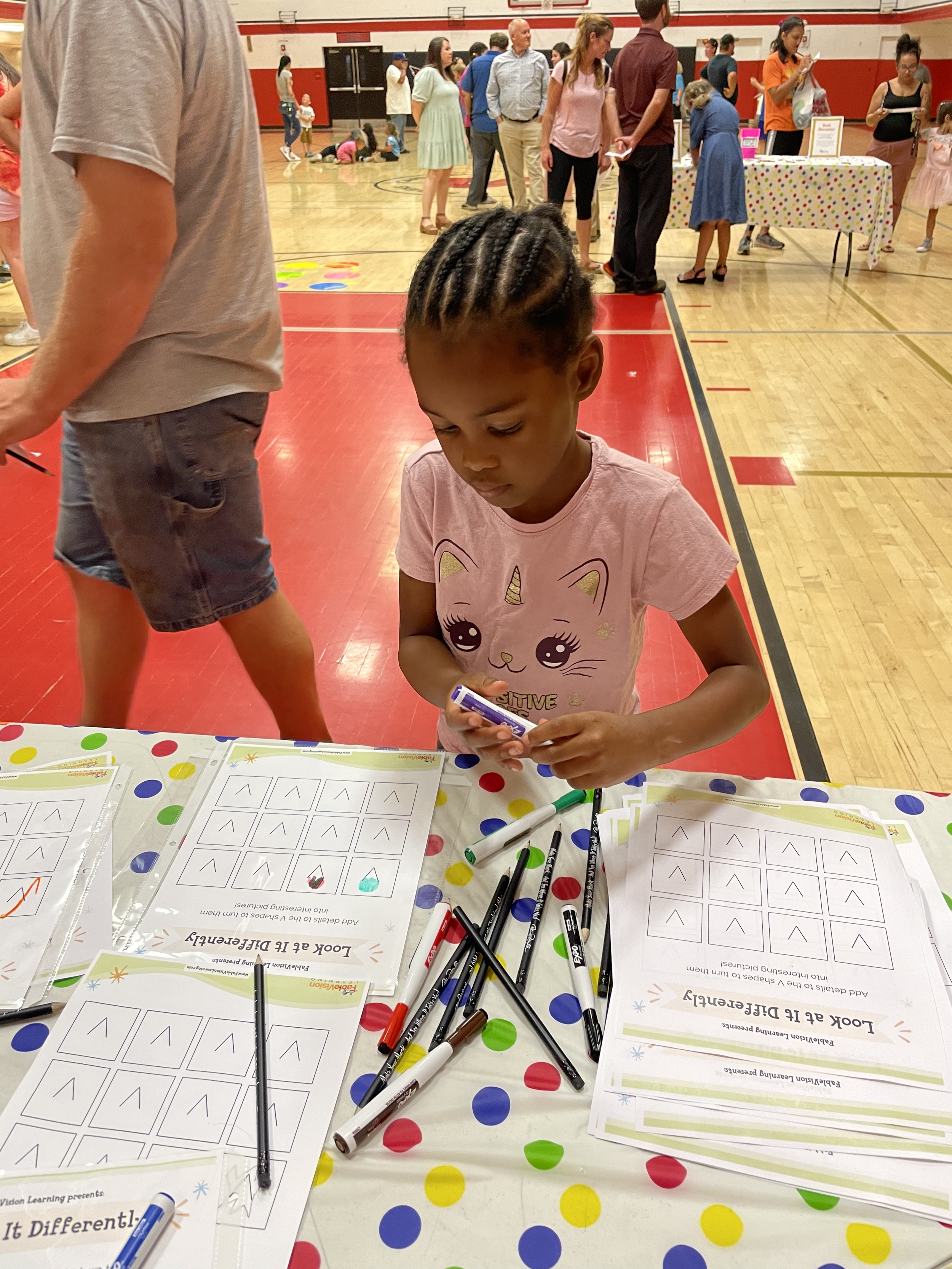
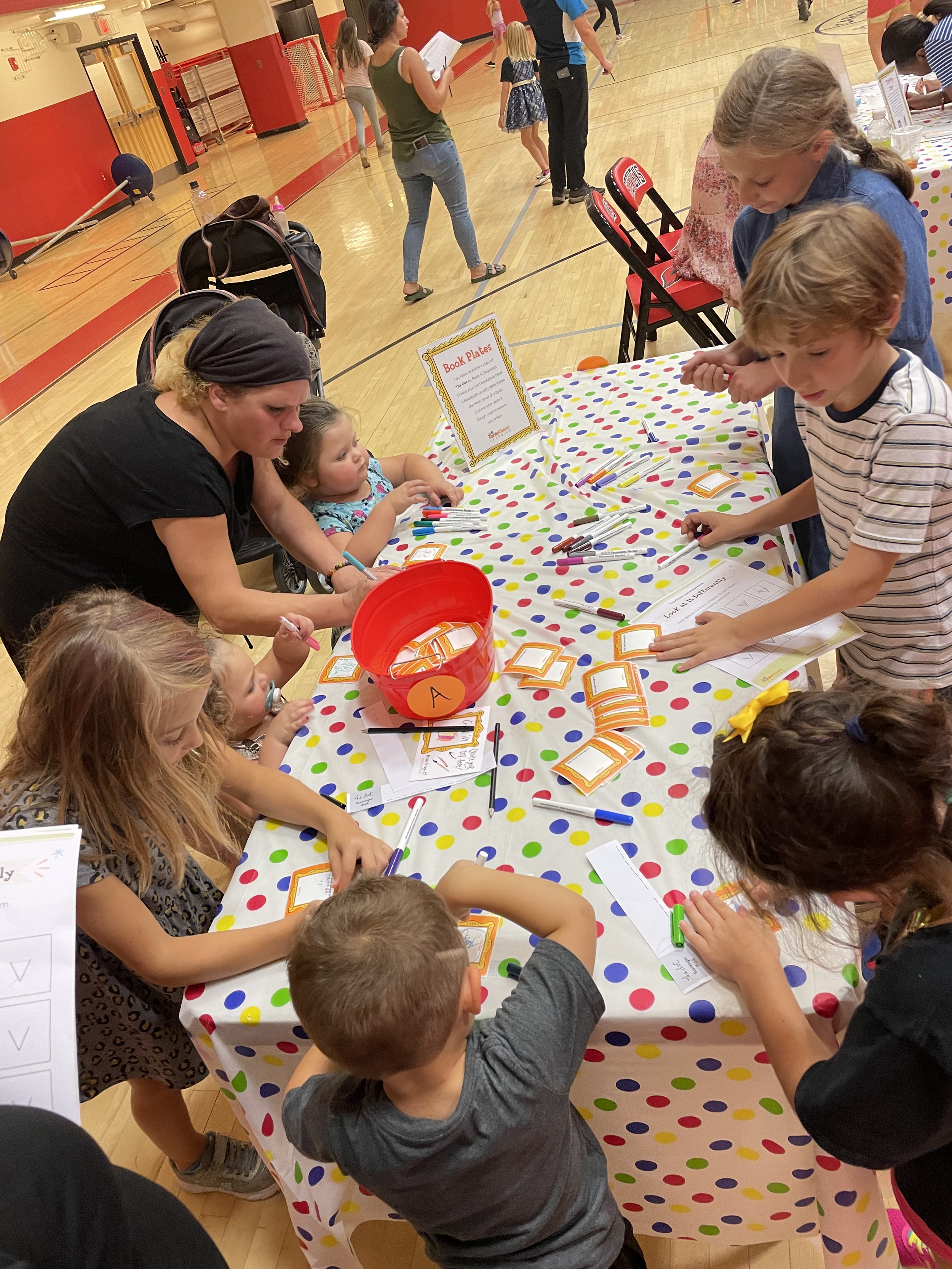
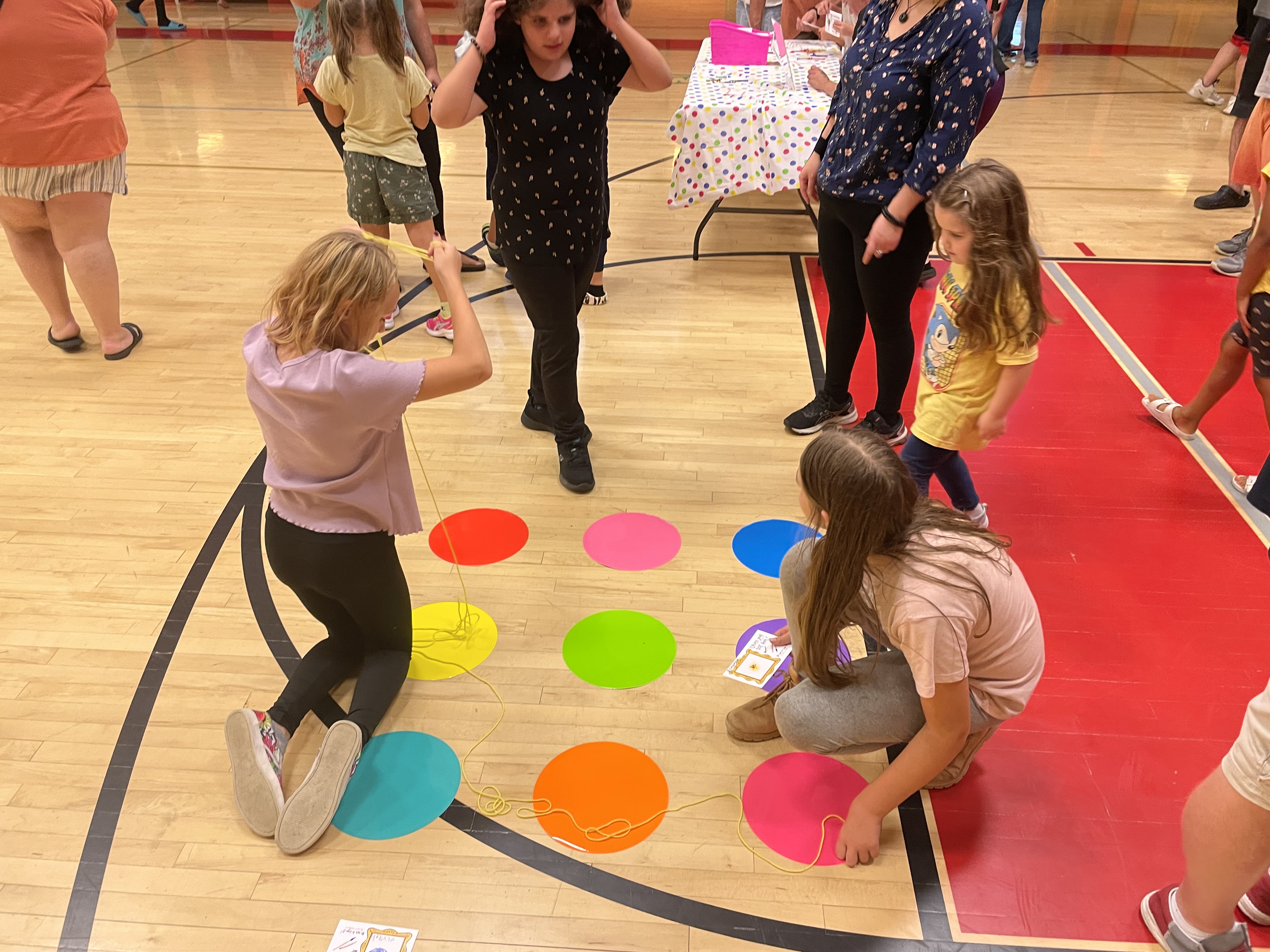
The most exciting part of the week, though, was The Creatrilogy Family Night. All of the families in the district were invited to come to the high school for a Stories that Matter, Stories that Move animated film festival followed by activities all related to Peter H. Reynolds’s Creatrilogy of books The Dot, Ish, and Sky Color. Families worked on collaborative art, searched for hidden dots, and stretched their minds with brain teasers and challenges.
There is a lot more in store for SAU#6 Claremont/Unity this year. We are so happy to be part of their year of growth. If you’d like to bring exciting programs like this one to your school or district, contact us at info@fablevisionlearning.com.
Footbridge Students Tackle "Going Places" STEAM Challenge at BridgeWater State University
This blog post was written by Katie Hurwitz, an intern at FableVision Learning. Katie is entering her senior year at the University of Rochester. She is studying World Music, Creative Writing & World Literature, Childhood Education, and TESOL.
Walking around the Bridgewater State University classroom, I saw a plethora of innovations. Some students were thinking collectively; some, individually. And some…forky? Yes, some students had taken the popsicle sticks from their “Going Places Kits” (which I’ll explain in a bit), made arms out of pipe cleaners, dressed them up with clothes made from the boxes themselves, and drew very characteristic faces on them. “Wait a minute,” I asked the group of friends working together. “Is that Forky from ‘Toy Story 4?’” They smiled at me, made their own forkies dance, and humored me as I took a picture of their creations.
Growing up, I have always been friends with “the STEM kids.” STEM—meaning science, technology, engineering, and math—has never been my forte…at least that’s what I perpetually told myself. Priding myself in my interdisciplinary studies of the arts and humanities, I’ve shied away from STEM. This all changed when I started my internship with FableVision Learning and learned that STEM and art are not binary. In fact, they can be combined, simply by adding an A for “arts” into STEM to become STEAM.
Because I aspire to enter a career in elementary education after college, I am now fueled to utilize the concept of STEAM as a core part of my pedagogy. I recently had the experiential-learning opportunity to teach STEAM by helping to run a workshop for the Footbridge Program at Bridgewater State University in Massachusetts.
The Footbridge Program, run by Bridgewater State University’s College of Education and Allied Studies, is a two-week summer program focused on STEAM education and enrichment for Brockton Public Schools fourth and fifth grade students.
With the forty students who attended the program on Thursday, July 14, we worked on “Going Places Kits.” First, we read the award-winning book “Going Places,” by Paul and Peter H. Reynolds. Encouraging students to assume the role of Maya or Raphael, we passed out the kits to all the students and gave them one simple instruction: “Make something that moves.”
The other interns and I had previously assembled these kits. We fabricated each of these small, blue cereal-box-shaped boxes using FabMaker Studio—and inside each of the boxes we stuffed materials including buttons, brads, paper clips, pom poms, pipe cleaners, coffee filters, popsicle sticks, and aluminum foil. Back when we were putting these kits together at the FableVision Learning office, I could have never fathomed what kinds of “things that move” that the students would end up engineering.
On the day, some students emptied out their boxes and glued four buttons to the sides. Bam! They made cars. Other students used the coffee filters to make parachutes. There were a few kids who had an inkling towards aviation (since they learned all about airplanes during another part of the program), so they decided to fold the aluminum foil into an airplane. A couple of the creations truly exhibited divergent thinking. For instance, one of the students used a popsicle stick to create a skateboard.
There were no rules for this project, other than “make something that moves.” Thus, the students could become dreamers like Maya and think outside the box! We demonstrated FabMaker Studio, and students that did not have all the parts they needed inside their box could design new parts themselves. To me, this calibration of creativity certainly encompasses the A for “art” in STEAM. At the same time, it covers the E for “engineering.” Needless to say, the arts and humanities and STEM are not mutually exclusive.
Pennsylvania Fourth Graders “Go Places” with “Start with a Story” STEM Activities
The following blog post was written by Katie Hurwitz, an intern at FableVision Learning.
When it comes to teaching STEM literacy as educators, where do we start? Perhaps, it can be as simple as starting with a story. FableVision Learning’s “Start with a Story” program introduces students to the books of New York Times best-selling author/illustrator Peter H. Reynolds, posing a set of activities that correspond to each story.
Zooming into the Mifflin County Public School District in central Pennsylvania, fourth grade students embarked on a “Start with a Story” journey with Bailey Kibe at the helm.
Kibe is a fourth grade teacher who teaches Reading, Science, and Social Studies. She works as a team with another teacher—who teaches Math and Writing—as they both teach their respective homeroom classes of 25 and 21 students.
“For the past few years I have collaborated with the Tuscarora Intermediate Unit 11, specifically their Educational Technology department. Dr. Eric Yoder, Coordinator of Educational Technology, proposed the project of FabMaker Studio to me to pilot with my students,” Kibe said. “Since then, I have worked closely with Andrea Calvin from FableVision Learning to implement their ‘Start with a Story’ STEM Literacy unit.”
The specific book that Kibe used was Going Places by Peter H. and Paul A. Reynolds. In this story, the main character, Maya, inspires her friends to think outside the box even when a kit of instructions is provided. Encouraging her friend Rafael to realize all the possibilities that can be achieved through innovative thinking, Maya helps readers alike develop self-efficacy to transform ideas from their imagination into reality.
The “Start with a Story” activities for Going Places relate to the book’s themes of challenging the status-quo through connectivity and encouragement.
We recently connected with Kibe to discuss her experience of “starting with a story” to teach STEM literacy to her Mifflin County Public School District fourth graders. The following is our Q&A with Kibe. Read on to see how the story and its activities led her students to really “go places!”
You've been using the “Start with a Story: Going Places” activities. What has been the overall response from the students?
Kibe: Students have loved the activities! It has been a great experience overall. With each activity there is a problem-solving component that allows students to really collaborate and share perspectives to achieve their goal. Students also were able to work with peers that they may not typically work with, which allowed for team-building. The students especially enjoyed testing their “tables” to see if they held a book or even several books. Also, they loved turning the go-cart building activity into a friendly competition to see which cart went the fastest and the farthest.

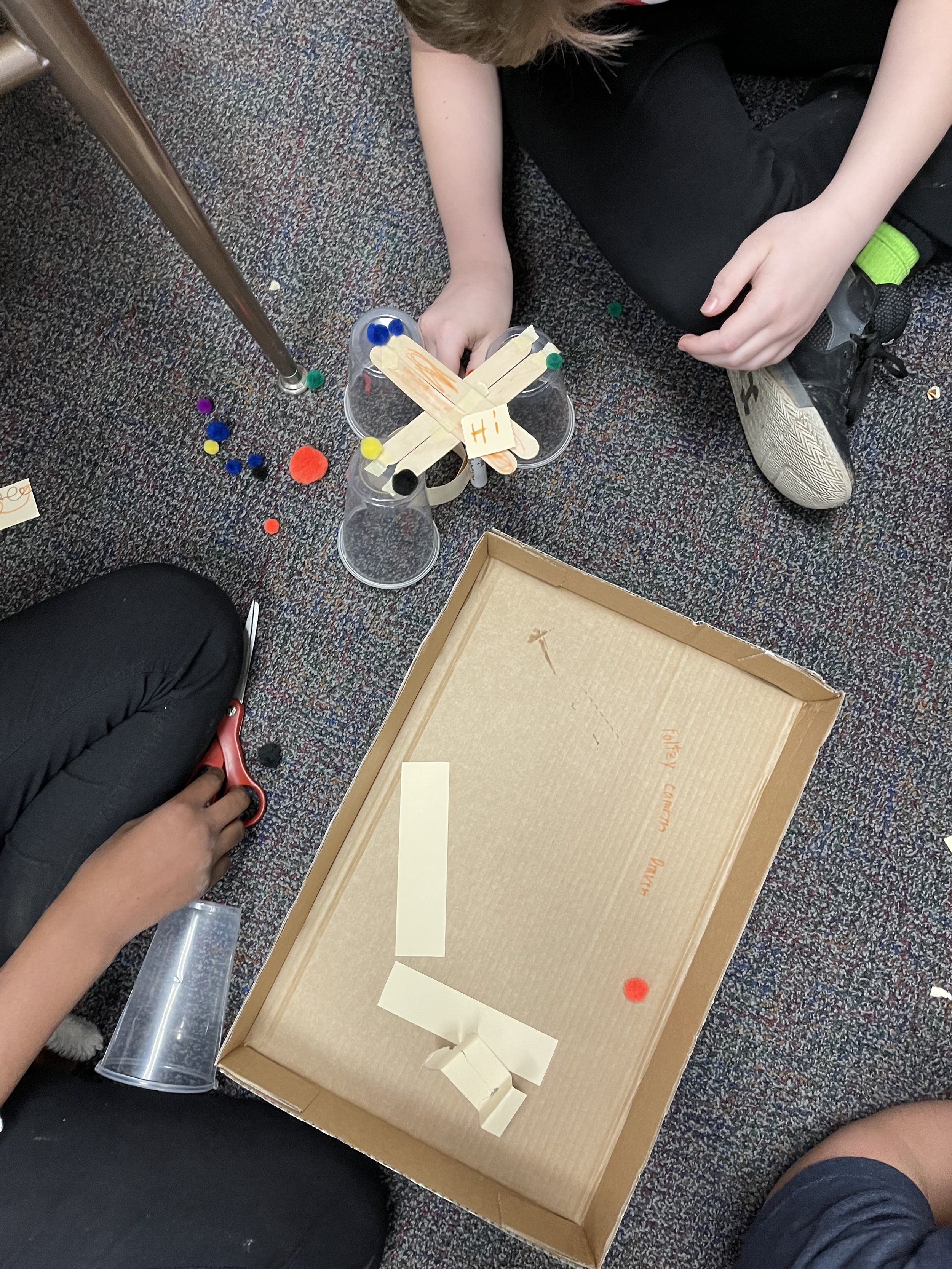
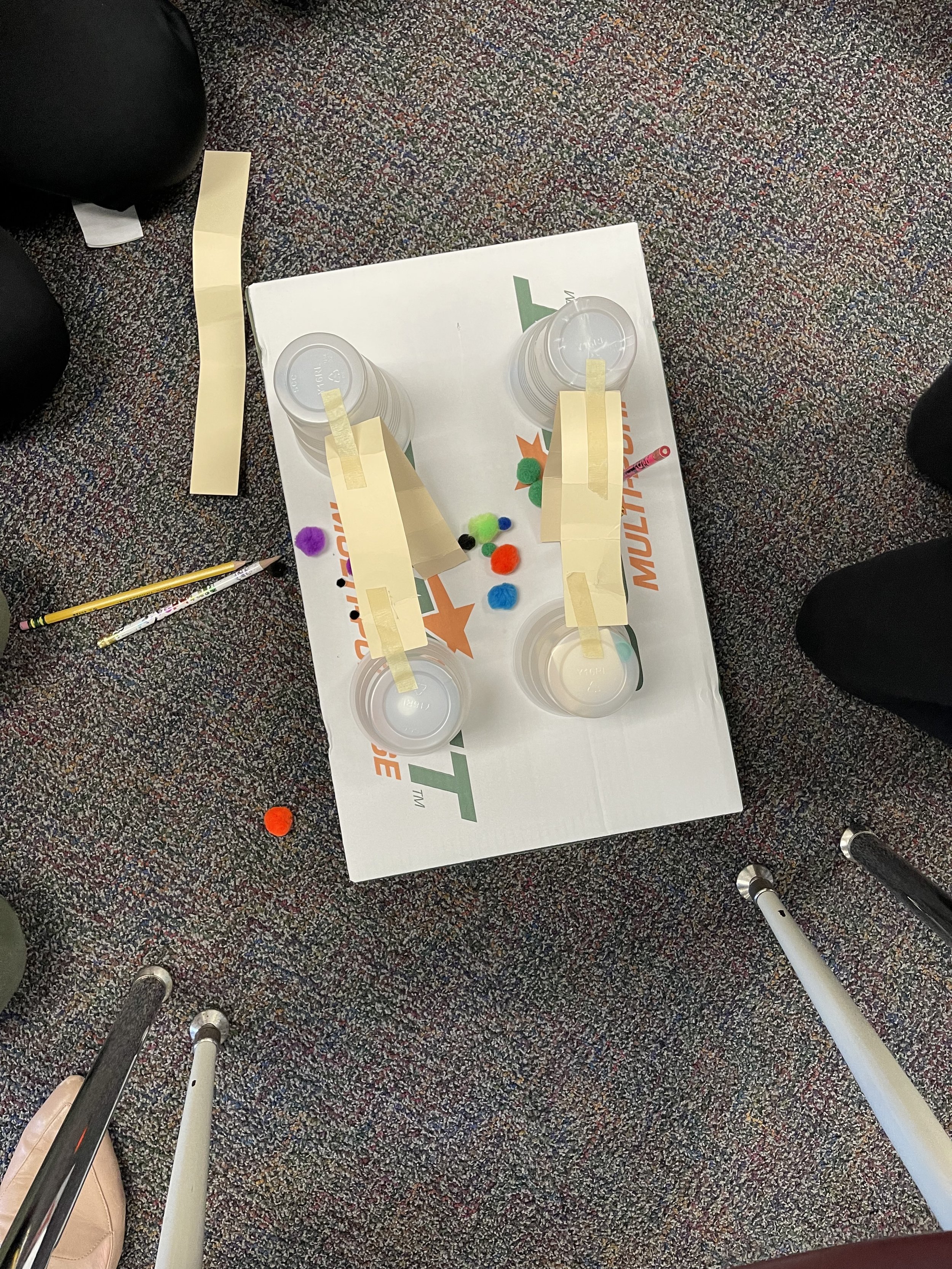
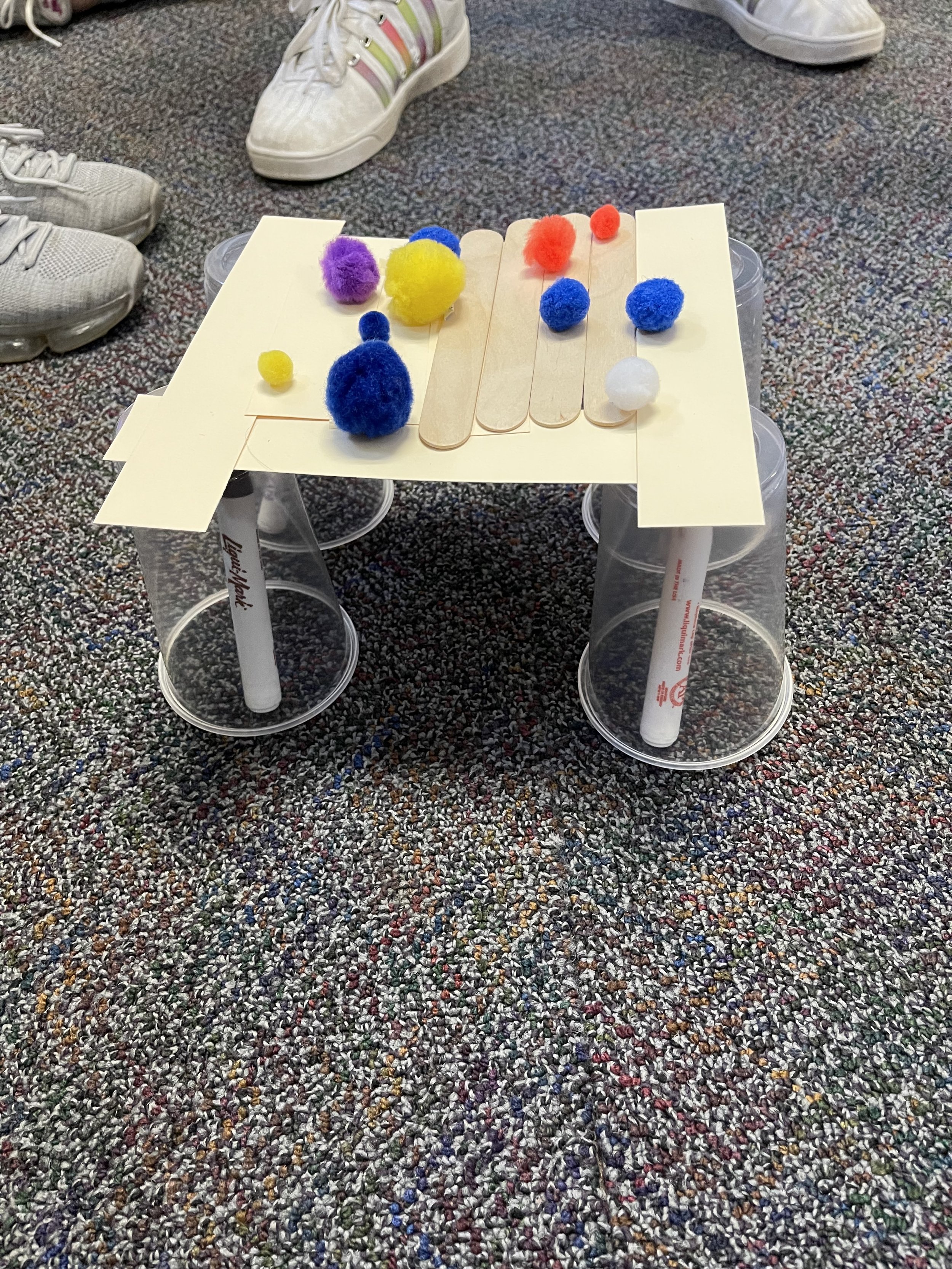
What has been one aha moment?
Kibe: There have been several aha moments throughout the activities. The go-cart activity stands out the most. When we were building the carts, we first started with bottle cap wheels. The students experimented with the idea of friction and decided that the bottle caps created too much that it affected the performance of their carts. They then created wheels using the circle paper in the FabMaker document that was cut out using the Silhouette. After testing, the students had an aha moment that the paper wheels produced less friction and therefore increased the effectiveness of their creation.
Do you have any tips for teachers getting started?
Kibe: The key to success with STEM is collaboration. We want the students to collaborate effectively, and the same should be said for educators. This was a learning experience for all involved, and it was helpful to have extra teachers and staff supporting the project. So, don’t be afraid to invite others to join in on the activity!
What's next?
Kibe: My students will now start their projects using Animation-ish. I will also continue the “Start with a Story” unit next year with my next group of 4th graders. We will continue working through STEM-based and project-based activities in our classroom so the students can discover and explore all of the different components of the discipline.
Want to learn more about Start with a Story? Email the team at info@fablevisionlearning.com
When School's Out the Story is On: FableVision Learning and YMCA Partner on SEL/STEM Program
The following blog post was written by Tyler Stott, an intern at FableVision Learning.
Solving rubix cubes, creating animations, and building “Say Something” megaphones doesn’t sound like your typical after school program - but the MetroWest YMCA’s School’s Out program isn’t your average program. Thanks to a partnership between MetroWest YMCA and FableVision Learning, Massachusetts students have been using their creative smarts and STEM skills as they explore the literary world of Peter H. Reynolds.
“We are so excited to have the opportunity to partner with our friends at FableVision. Each month we focus on a specific book from Peter H. Reynolds’ collection. Our sites use the curriculum from Start With A Story for each book and deep dive into the many hands-on activities provided, “ said Hannah Glenshaw, the Director of Educational Program Enhancements at the MetroWest YMCA. “Students are eager to get into the program during FableVision days because they love the activities and get excited to share their hard work,”.
The Start with a Story after-school program is the next phase in the partnership between FableVision and MetroWest YMCA, which started with the North Star Summer program in 2021. With funding from the Commonwealth of Massachusetts Afterschool and Out-of-School Time Quality Enhancements (ASOST-Q) Grant Program, which is administered through the Massachusetts Department of Elementary and Secondary Education (DESE), and an additional STEM grant from the Dassault Systems U.S. Foundation the teams continue to develop STEM, SEL, and creativity curriculum for students served by the MetroWest YMCA.
FableVision Learning’s Start with A Story program ties the works of New York Times best-selling author/illustrator Peter H. Reynolds to hands-on and technology-based activities/projects. Each unit focuses on one book and includes an Animation-ish activity and a FabMaker Studio STEM project.
We recently connected with Glenshaw to learn more about the partnership and YMCA program. Read on to learn more.
Can you share a bit about your program and the students you work with?
Glenshaw: “At the MetroWest YMCA, we run six School's Out sites servicing the areas of Ashland, Framingham, Hopkinton, and Natick. School's Out is a place where children can participate in a wide range of activities while building friendships that last a lifetime. Our programs extend school-day learning with a wide variety of engaging opportunities for active play, participation in STEM learning, and building life skills through social-emotional curricula, all under the supervision of experienced staff.”
What have been a few of your favorite learning moments with the students? Favorite book or project?
Glenshaw: “My favorite learning moment from the Start With A Story program has been the conversations inspired by my favorite book, Say Something! The book has inspired our students to speak out who tend to step back in most group conversations. I've witnessed students express themselves through writing, art, and fabricated megaphones used to physically shout out their words. This book has cultivated some of the most thoughtful discussions around self-confidence, helping others, and using one’s voice to make a difference. The YMCA students have reminded me that my voice matters and I should share it out loud.”
How have you used FabMaker Studio with the program? What are some of the Aha moments working with the program?
Glenshaw: “We have been using the FabMaker Studio program in conjunction with each book's curriculum. Before we fabricate a project, we talk about the different shapes that go into each 2D or 3D design. Students then sketch design ideas on a piece of paper before we see how the pre-made projects are created. The “Aha” moments come when students can physically hold their project. Watching them fold the perforated edges, think through where the shape needs to bend, and finally glue and assemble the remaining pieces is a lightbulb moment! You can feel the energy in the room when they have pieced together the design. I love watching students collaborate and support one another in the design process.”
“A project inspired by the book Say Something, challenges students to create a megaphone. Ruth, age 10, from our Framingham School’s Out site was folding her megaphone when she was inspired to layer 3D pop-ups onto her design. Ruth was determined to share her message with swirls, jagged edges, and springs popping out from all sides of her megaphone. It was a brilliant moment where her artistry and spunky personality meshed into a beautiful project.”
Can you share a bit about the animation process with Animation-ish? What are some projects students have completed?
Glenshaw: “The animation process has been a wonderful component of the Start with a Story curriculum. Each week students use laptops at the site to design and animate a prompt inspired by a book. A staff member reads a story and asks leading questions to inspire students on their animation journey. A few fan favorites include animating their name, animating an emotion, and animating a form of transportation.”
“Edmund, age 7, from the Elmwood School’s Out site in Hopkinton, decided to animate a rock rolling along the grass as his interpretation of movement. He was so excited about his animation when he was picked up from the program, he ran outside to show his parents. DJ, age 8, also from the Elmwood Schools Out site, animated a skateboarder flying across the screen and landing the jump for his project on transportation.”
What are you excited for next?
Glenshaw: “I am excited to read Our Table and Be You! from the Start With A Story collection. One of the activities inspired by the story Be You! is to animate a self-portrait that captures your unique personality. I can’t wait to watch students think through the design process. Which colors will they choose? Will their person start with one expression, and change to another, or if they will show themselves in an action or doing their favorite hobby? The possibilities are endless!”
How can students get involved with your programs?
Glenshaw: “Families can get involved with our out-of-school time programs through the website. Click here to access the website and register for the 2022-2023 school year! If families are interested in experiencing more hands-on learning opportunities for their kids, then come spend your summer at the Y. At Camp OCP, students will be able to experience more activities inspired by Peter H. Reynolds collection. The camp features summer learning through hands-on enrichment activities in STEM, Global Learning, and Social-Emotional Learning. Traditional camp activities like swimming/water play, sports, arts and crafts, and gaga-ball are included.”
—
Want to learn more about Start with a Story? Email the team at info@fablevisionlearning.com
Oak Lawn Middle Schoolers Create Digital Picture Books to Share Messages of Peter H. Reynolds
The following blog post was written by Tyler Stott, an intern at FableVision Learning.
Students from Oak Lawn Middle School create a painting activity for the book Sky Color.
At Oak Lawn-Hometown Middle School in Oak Lawn, Illinois community service is at the center of everything they do.
Heather McCarthy, a media specialist at the school works with over 1,100 middle school students and shares, “My library centers around empathy, inclusion, and service learning…Throughout the years, they have raised over $50,000 for clean water projects in Africa, have packaged over 250,000 meals for families in need, and host an annual walkathon to raise money for pediatric cancer patients. We even host a ‘Day of Service’ where the entire school spends the whole day completing community service projects. “
This passion for helping others didn’t slow down during the pandemic. McCarthy and her students kicked into high gear. As recipients of a Hershey's Heartwarming Action Grant, McCarthy and her students got to work creating interactive story books using the stories and messages of their favorite author Peter H. Reynolds. These books were then donated for children at Child Life at Hope Children’s Hospital.
“Peter H. Reynolds is one of our favorite authors since his books and illustrations encompass the themes of resilience, bravery, confidence, patience, and individuality,” McCarthy shared. “These are all qualities our middle school students strive for. We use Peter H. Reynolds’s books for our SEL work, STEM projects, and to read for enjoyment. When we wanted to send picture books over to the children’s hospital, we knew Peter’s books would be the perfect fit.”
For this project, students selected books by Peter H. Reynolds, and filmed a reading of the book and a video of a project. By adding QR codes to each book, recipients could follow along from anywhere.
We recently connected with McCarthy and her students to learn more about the project and school. Read on to learn more.
Abby Murphy reads Our Table
Your students created interactive story books for children in the hospital, how did that journey begin?
McCarthy: “The idea for this project came about when we were remote learning. We had a classmate whose little sister was in need of a heart transplant. The class of students really bonded over this experience. They showed great empathy and love for their classmate and her sister. We decided that as soon as we were back at school in person, we would put together a project to support the local children’s hospital. When we saw the Hershey’s Heartwarming Grant, everything fell into place.”
What has the response been from these children and their families when they were given the books, videos, and podcasts?
Angel Swiatek and Sophia Falcon read The Dot
McCarthy: “We delivered the books to the staff of Child Life at Hope Children’s Hospital. Then they chose which patients would receive our books. They reported the patients absolutely loving the books, videos, and projects. Many of the children watched the videos over and over again. The parents and families were grateful that there were children outside of the hospital thinking about their child in the hospital.”
What has been your favorite part about this project?
McCarthy: “I love that this entire project was student led. The students came up with the idea, collaborated together, and did all the creating, filming, and editing. This project really showcases the power of allowing student voice and choice. I believe when you give students the freedom to design their own thinking, they can come up with amazing ideas. I loved how this project highlighted how empathic, kind, and caring our students are.”
Isabel Bello, a 7th grade student at OLHMS: “My favorite part of this process was the filming. Me and my friends were all able to collaborate with each other and filming together. I also loved that it was for a good cause. It was amazing!”
Selena Garza Prieto, a 7th grader at OLHMS: “My favorite part of this process was imagining the smiles on the kids' faces as they listened to our videos of us reading to them.”
ZZ Cabanas and Selena Garcia create a STEM project to go with the book Going Places.
What advice would you give to other students wanting to do a similar project?
Sophia Falcon, a 7th grader at OLHMS: “If you want to do this, I would recommend talking to someone that could help you and pitching the idea to them. For example, maybe you should talk to your principal, librarian, or even someone on the school board. They could help you with getting together the community, and help you get the things you need to do something like this.”
Isabel Bello: “Whoever wants to get involved in this, if you're doing this for the "fame" don't. I was doing this only out of good spirit. All the attention this project has received was never the original intention. It was all done out of the kindness of our hearts.”
Angel Swiatek, a 7th grader at OLHMS: “If someone wanted to do this in their community or school I would tell them to have fun with it and to express themselves in any way they want. They should feel free to be open to enjoying this experience knowing how others will benefit.”
Selena Garza Prieto: “My advice to others working on a project like this would be - Don’t be nervous while you're reading. Instead just think of the smiles you are giving to kids who need an extra smile right now.”
Principal Dr. Sean McNichols, Aidan Zak, Kendall Phipps, and Grady Gilhooly do the Cow Pose for guided meditation and yoga for I Am Love.
What is your favorite Peter H. Reynolds book?
Angel Swiatek: “My favorite book by Peter H. Reynolds was 'The Dot' because to me the book was teaching about no matter what you think you can't do, you can always do it and it's a way to express yourself.”
Selena Garza Prieto: “My Favorite book by Peter H. Reynolds is ‘The North Star’. I enjoyed reading this book with my best friends because it really shows you that you experience difficulties but you should never let it pull you away from following your own path to happiness.”
What’s next?
McCarthy: “Our school motto is, ‘Create a dream; make it a reality.’ The students of OLHMS know that in the library, anything is possible. We strive to make the world a better place through our community service, creativity, and empathy. If they have an idea, we will do everything we can to help them bring their ideas to life. April 29th is our Day of Service and we will host our annual walkathon for Live Like Abby to raise money for pediatric cancer patients in May.”
FabMaker Project: Our Table Challenge
The following blog post is by Peggy Healy Stearns, Lead Software Designer, FabMaker Studio.
Peter H. Reynolds’ new picture book for all ages, Our Table, tells the story of a young girl named Violet who notices that, as her dad, mom and brother spend more and more time on their devices, their once lively dining table is shrinking! Violet longs to bring her family back together and dreams up a project on which they can all collaborate –- designing and building a new table!
This timely story provides an opportunity for children to consider the importance of gathering with family and friends – and to engage in a meaningful engineering design process.
To get ready and set context for the challenge, after reading Our Table, discuss students’ memories dining with family and friends. What made those times special? Where did they eat? Was there anything special about their table?
Peter’s Creative Challenge!
Peter loves using his imagination to design and make things - drawings, paintings, sculptures, and paper mache animals! And so, Peter is excited to present a special maker challenge to your students: “Using FabMaker Studio, imagine, design and fabricate your own table and/or chairs to send to me!” Peter will select some finished projects to feature on the FableVision Learning websites and social media.
So, let’s get started! Have students work collaboratively to Ask, Imagine, Plan, Create, Test and Improve a paper or cardstock prototype.
Ask: What kind of table would you like? How big should it be? What shape? Does it matter how it looks? Use questions like these to define the criteria. Students may want to research images of tables and interview family members. Then outline constraints – e.g., the final prototype must be designed with FabMaker Studio and constructed with paper or cardstock.
Now it’s time to Imagine. Have students brainstorm and sketch different designs and consider each option based on the criteria they set earlier. A single design may not meet all the criteria. Which criteria are most important? Once students choose a favorite design, they’re ready for the next step.
Tell students to use a ruler to draw a Plan for their table and label dimensions.
Then have them use FabMaker Studio to Create their prototype. They can use the Chair design found in the FabMaker Ready-Made 3D projects. This starter project shows how Shapes can be combined to create a flat pattern that folds into a 3-dimensional object. Their tables might be constructed of a single flat net like the chair or made of multiple elements folded and constructed individually and then combined.
Encourage students to be inspired by Peter’s creativity. Suggest they use FabMaker’s color and texture tool -- or use plain white cardstock and color by hand.
If there’s time, ask students to consider how they would Test their prototype? Tell them to refer back to the criteria they set at the start. If their table’s not quite right, ask them how they would Improve their design.
You can adapt this activity to different grade levels by challenging students to use FabMaker Studio to design other 2D and 3D objects from the book. Younger students can weld shapes to create fruits and vegetables. More experienced makers may want to design bowls or glasses or even the vegetable cart.
Need more tips and tricks on how to use FabMaker Studio? Check out the Tutorials page.
Send your students’ designs to info@fablevisionlearning.com or use the #FabMakerChair in your social posts . We’ll feature the best designs on the FableVision Learning Spotlight Blog!
Creative Ways to Celebrate Earth Day
A spinning globe, a 3D Turtle, and a story of your world - there are many ways you and your students can celebrate the 50th Anniversary of Earth Day with FableVision Learning’s Creativity Maker Suite of online tools.
When Earth Day was started on April 22, 1970, the impact of the movement saw 20 million participants. This day is important to help raise awareness to show how much of an impact we really do have on the environment by every little move we make.
This year, as many of us are marking the day from in our homes, we compiled a few activities to get your little ones thinking about the environment around them.
Animation-ish
Animation-ish, is an easy-to-use online animation tool - that helps students show what they know! Weave Animation-ish into your distance learning activities with a few ideas:
Animate Different Cycles:
Encourage your students to animate as a way to explore different cycles. Using the tracing feature, students can easily animate the slow transitions that lead into new phases in any of these cycles. Whether it’s showing night shift to day or animating the parts of the water cycle, check out these examples below
What are some other natural earth cycles that your class has studied? We want to hear from you about YOUR favorite Earth Day animations.
FabMaker Studio
FabMaker Studio, is our digital design and fabrication tool created to get students prototyping with paper. For more tips and tricks on how to use a printer and a pair of scissors, click here.
Go Green with Greenie the Turtle!
This FabMaker Studio activity is inspired by the book “Go Green!” from the Sydney & Simon series (Paul Reynolds and Peter H. Reynolds, Charlesbridge Publishing) and is a great way to explore ocean wildlife.
In the book, Sydney and Simon learn about a turtle named Greenie who got sick from too much plastic in the ocean. This discovery leads them to find ways to reduce their waste and be more eco-conscious.
In FabMaker Studio, encourage your students to weld together shapes to create a turtle. For an added challenge - limit the creation to two shapes. Want to do deeper? In the FabMaker Studio Ready-Made projects, students can print a 3D turtle project to design and modify. This project provides an opportunity for you to talk to your students about turtles and other wildlife while also exploring the STEM skills of fabrication.
BONUS IDEAS:
Using the scraps of paper leftover from the project, create lily pads, or leaves for your paper turtle.
Explore the shapes in FabMaker Studio to create fish friends for your turtles (or print them out using our 2D ready-mades)
Do your students learn about recycling? What other oceanic creatures has your class studied? Greenie would love to have more fabricated friends, let us know if your students create any other animals in FabMaker Studio, we’d love to check them out.
How will you be celebrating Earth Day? Share it with the FableVision Learning team via Twitter @FableLearn, or via email: info@fablevisionlearning.com
Celebrate International Day of Math with FableVision: Where Creativity Counts
You may not realize it, but you use math every single day! From cooking dinner to telling time, your brain is constantly busting equations. That’s why we are going to celebrate math this Pi Day, March 14.
Fast Fact: In 2019, United Nations Educational, Scientific and Cultural Organization (UNESCO), declared March 14 as the International Day of Mathematics. Since 3.14 is also the beginning of pi, it is double the celebration!
Check out some of the ways we are celebrating this year.
Explore Game-based Learning with Math
Studies have shown that game-based learning can improve skills in STEM, math, literacy and more. This is why we are so excited to share these two researched-based online games designed to give educators an unique opportunity to teach through gameplay. The two games we’ll be playing are Zoombinis and Cyberchase Fractions Quest!
Zoombinis
Students travel across the Zoombinis landscape ast they solve a series of 12 puzzles that encourage computational thinking (CT). Through pattern recognition, abstraction, problem decomposition and algebraic thinking, your learners will lay the foundation for CT while leading the little blue guys to safety.
Grade level: 3-8
Cyberchase Fractions Quest
Take your learners on an epic journey across the universe to save the Cybersquad by solving equations. Whether it’s dividing leaves into parachutes for chameleons or estimating fractions on the Estimatron-5000 number line, students practice their fractions in various contexts. After traveling planet to planet, your learners will be expert fraction busters!
Grade level: 3-5
FabMaker Studio
Math isn’t just solving equations, it’s also using your creativity! FabMaker Studio, our digital fabrication and design software allows your students to get creative while getting a hands on experience as being an engineer! Here are a few ideas to get you started:
Use shapes and lines to build 2D, 3D projects.
Create a pop-up card with a special shape to give to your friends.
Ready to Create: Download our FabMaker 3D pyramid design to get started.
Animation-ish
No matter what age your students are, Animation-ish is a great way to combine math and creativity. Educators can get in on the fun too by using their unique designs to teach new mathematical concepts and ideas.
In the second level of Animation-ish, students can create a flipbook filled with as many numbers of pi as they can remember, or practice their pythagorean theorem with an animation. Try making your own story with some fun shapes and numbers.
Enter the Poster Challenge
For 2021, International Day of Math has challenged classrooms to create a poster “that shows one way to make the world a little bit better using mathematics.” To learn more this challenge and how to register your classroom click here.
Click on the image below to download our design.
Bonus Project
We love to catch facts. Click on the image below to download and create a Math Catcher filled with fun math facts!
Share your International Day of Math creations with the FableVision Learning team via Twitter or Instagram @FableLearn, or via email: info@fablevisionlearning.com.
FableVision Learning's CTE Courses: Sharing New Skills & Careers with Middle Schoolers
Students Can’t Be What They Can’t See
Career choices can be intimidating in high school and beyond. This is why starting early is key. The earlier students visualize their future selves by seeing what they can be through the lens of what they enjoy doing, the better.
Expanding the use of digital tools - that potentially are already part of the classroom - is a great way to start.
At FableVision Learning, we developed two middle school Careers and Technical Education (CTE) strands built around our tools. One focused on animation and second around engineering and production.
Engineering Program: Can We Build It? Yes, We Can!
FableVision Learning’s Engineering and Production CTE Course utilizes FabMaker Studio, our web-based 2D/3D design and fabrication software, as the basis for exploring design thinking and the engineering design process. During this 18-unit program, students meet engineers working in the field, use the engineering design process as they tackle projects focused on the 14 Grand Challenges as defined by the National Academy of Engineering.
But Wait, There’s More: Students will not only be introduced to design principles and appreciate the variety of ways engineers contribute to society, they will also learn how problem solving is the link between all the types of engineers.
Tell Your Story Through Animation
Animation is an incredible tool for giving voice using a different medium. As a career, animation can be done anywhere in the world. FableVision Learning’s Animation CTE program provides an on-ramp to professional animation while providing skills in storytelling. Using Animation-ish online software, middle school students learn 12 Principles of Animation as they develop their portfolio highlighting their achievements.
Students experience how a digital media studio works and experiment with different roles and learn how to collaborate with others as well as communicate with a client. Video interviews from animation professionals at FableVision Studios provide authentic experience to support learning.
Both programs are perfect for remote learning. Through an online portal powered by Skillify by Prodigy Learning, students can access the CTE curriculum on a desktop, Chromebook or mobile device, and take the certification exam. The online curriculum ensures it is easy for educators, who may not feel proficient in the career areas, to deliver the program.
Both programs are designed as 18 week courses with the option for certification, normally funded by the school district through Perkins Grants.
Why not celebrate CTE month by learning more about how you can support the student journey into career exploration?
Click here to learn more or email cte@fablevisionlearning.com
Not Ready for the Full 18 Weeks? Both programs are available as a 5 Unit Intro Course for animation and engineering.




